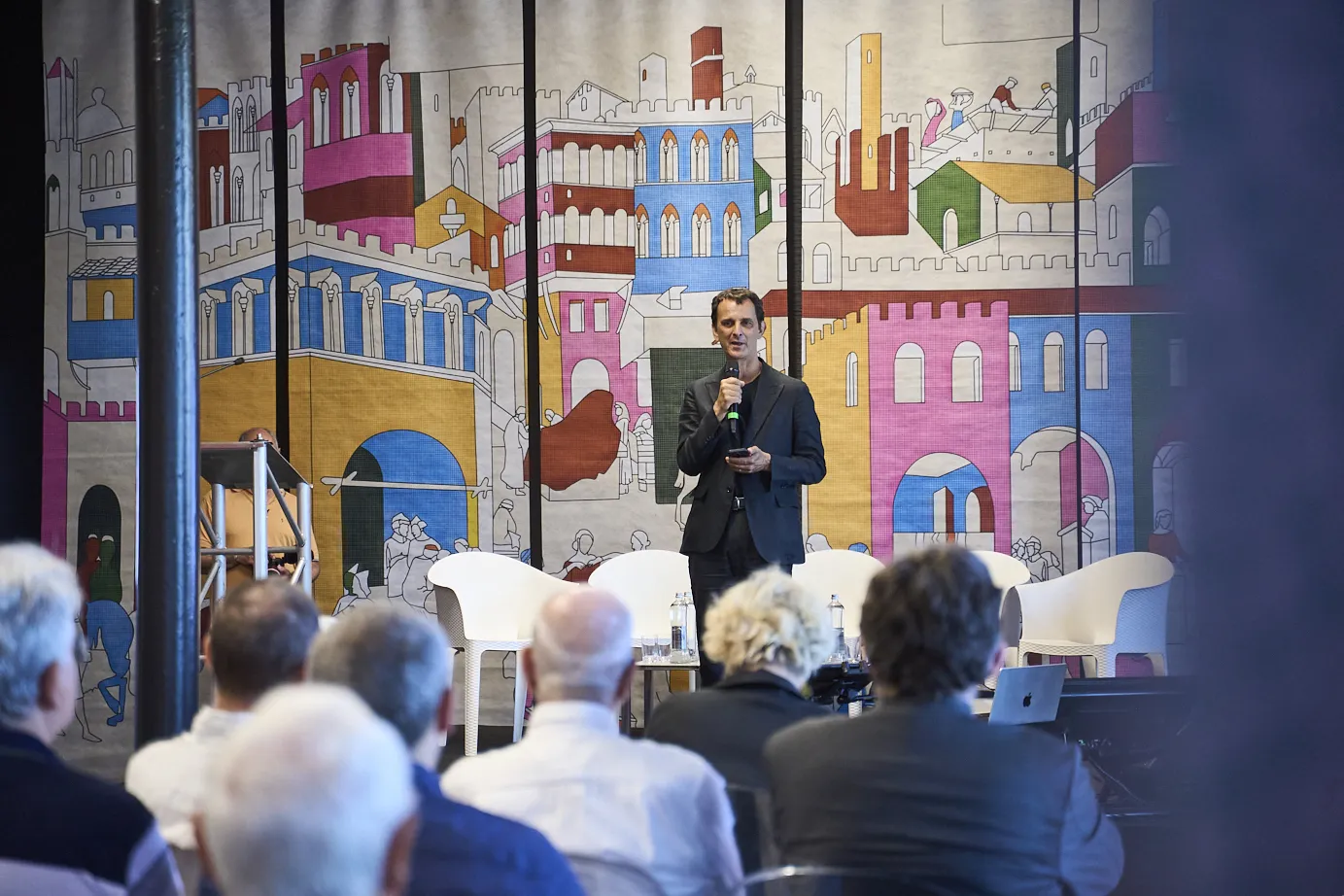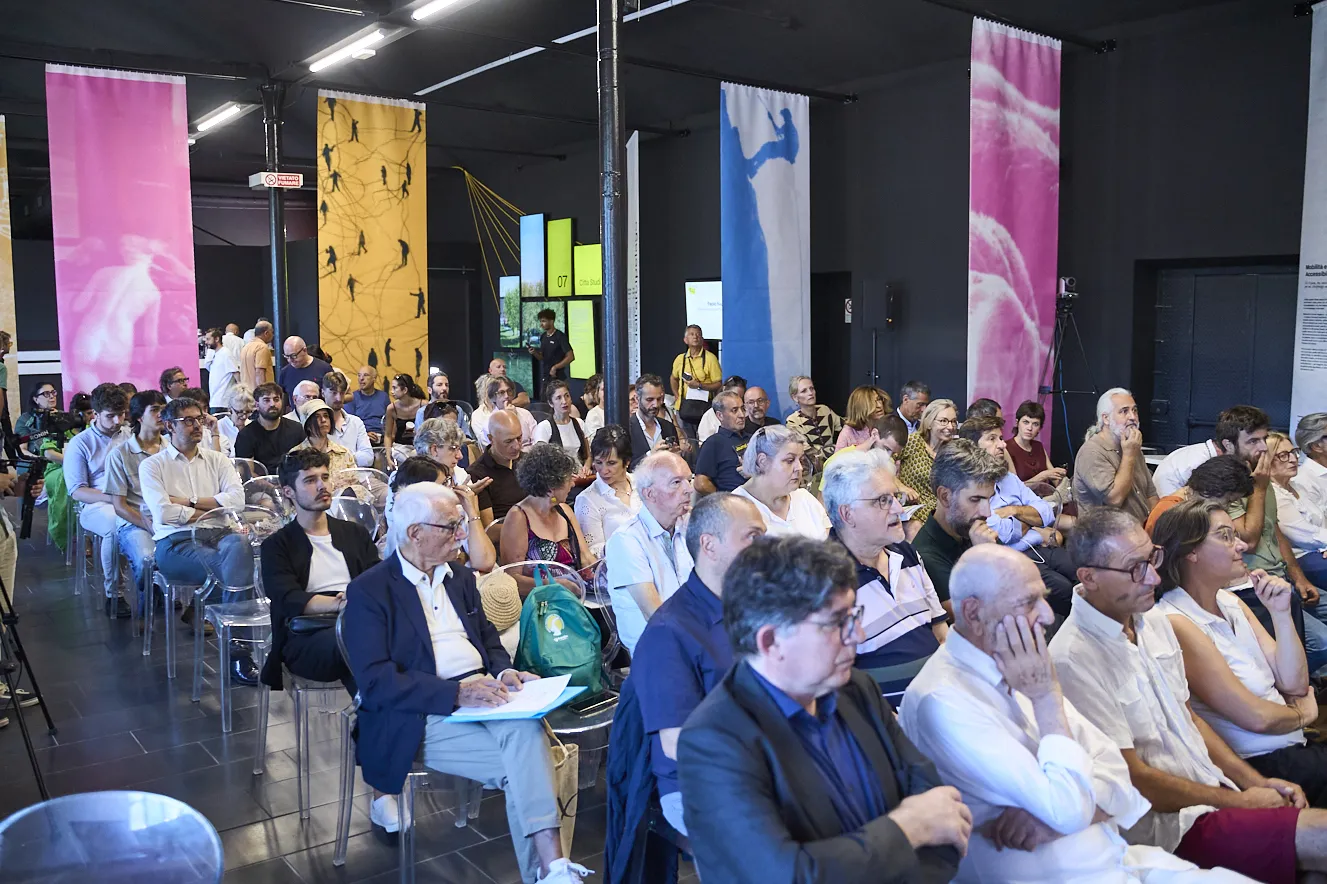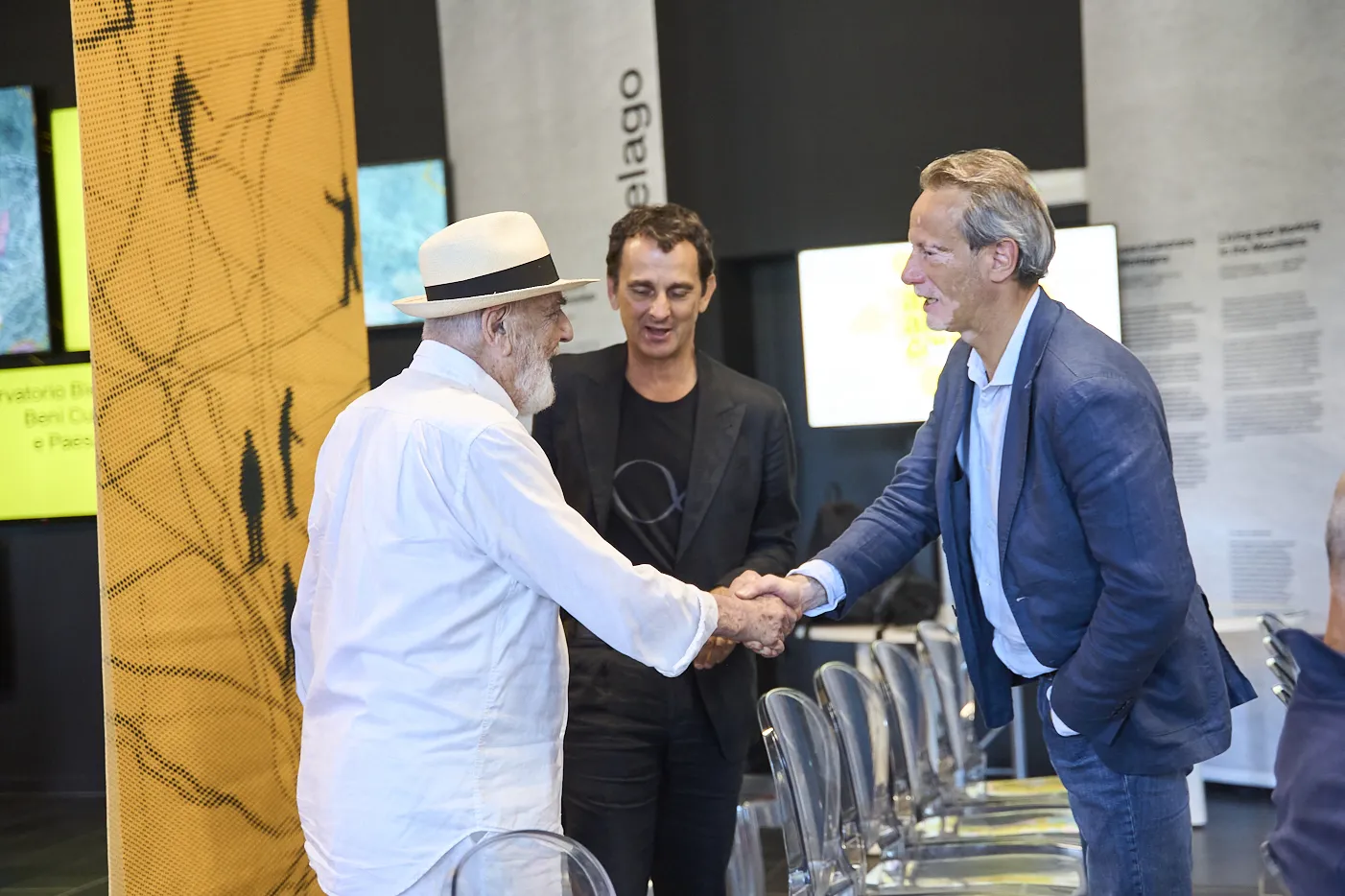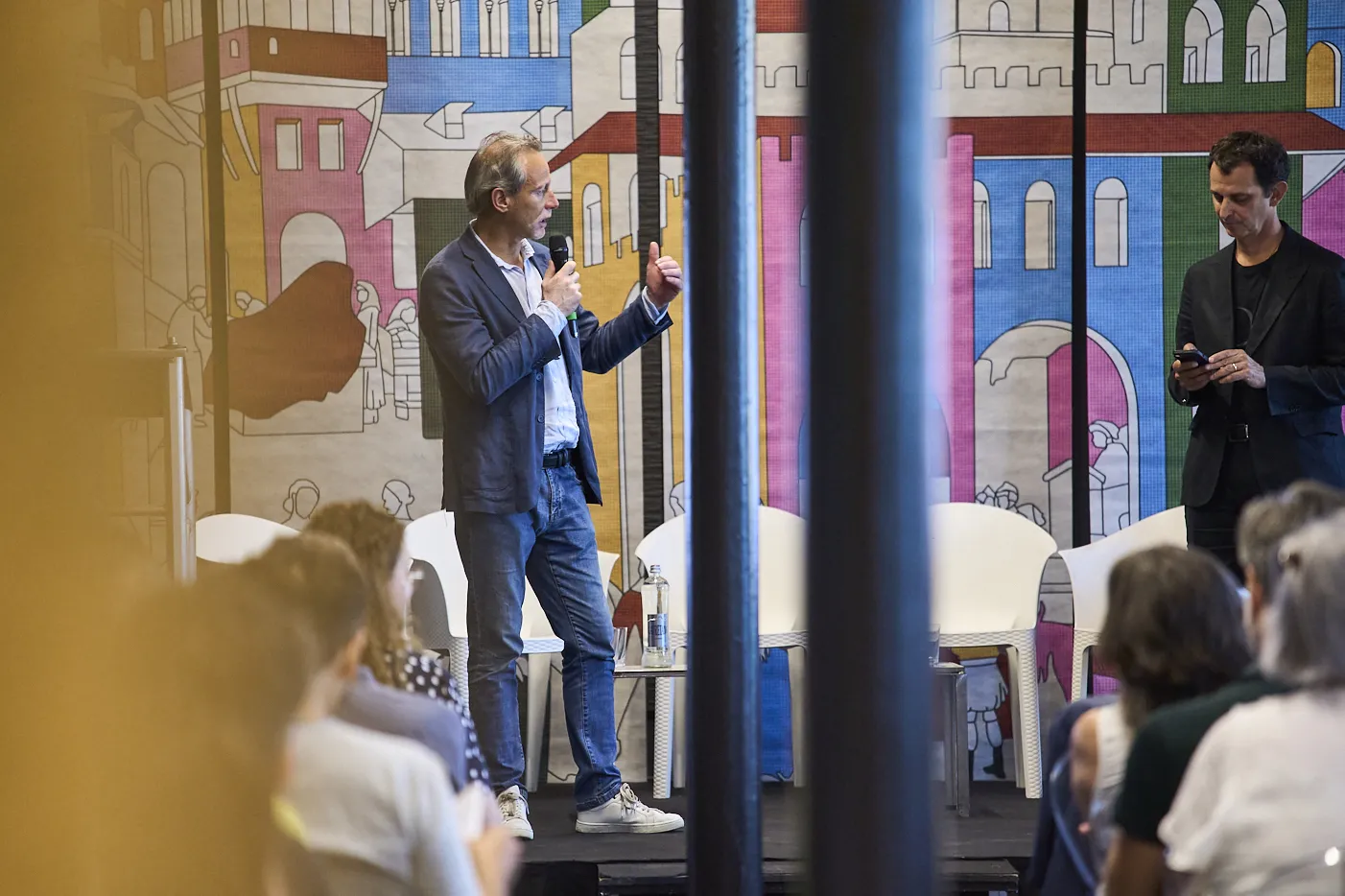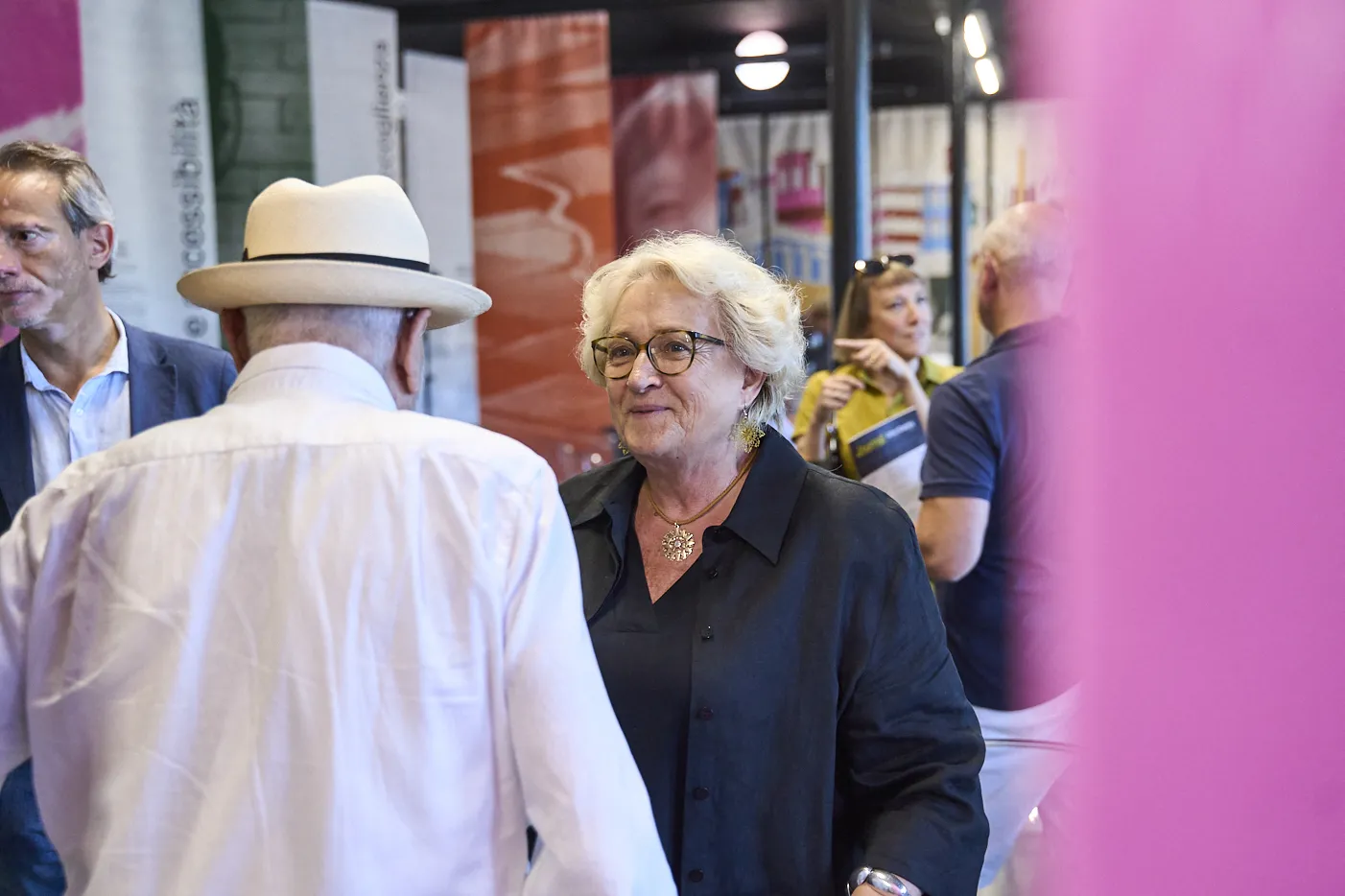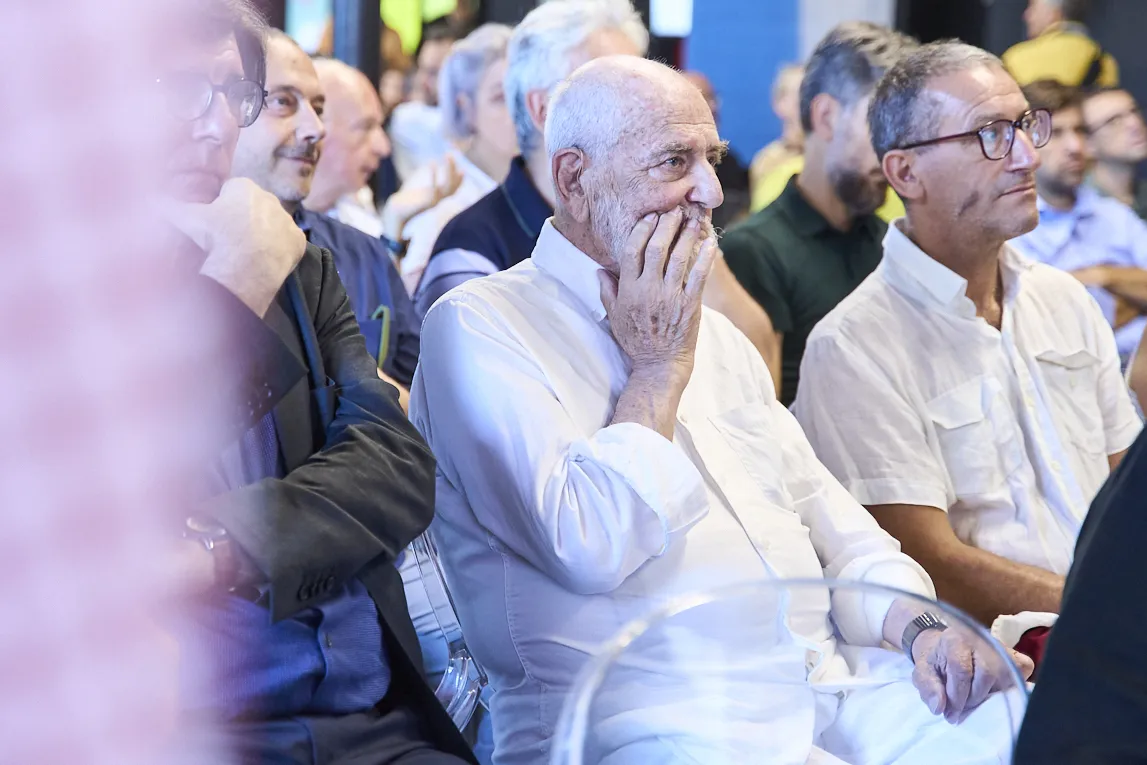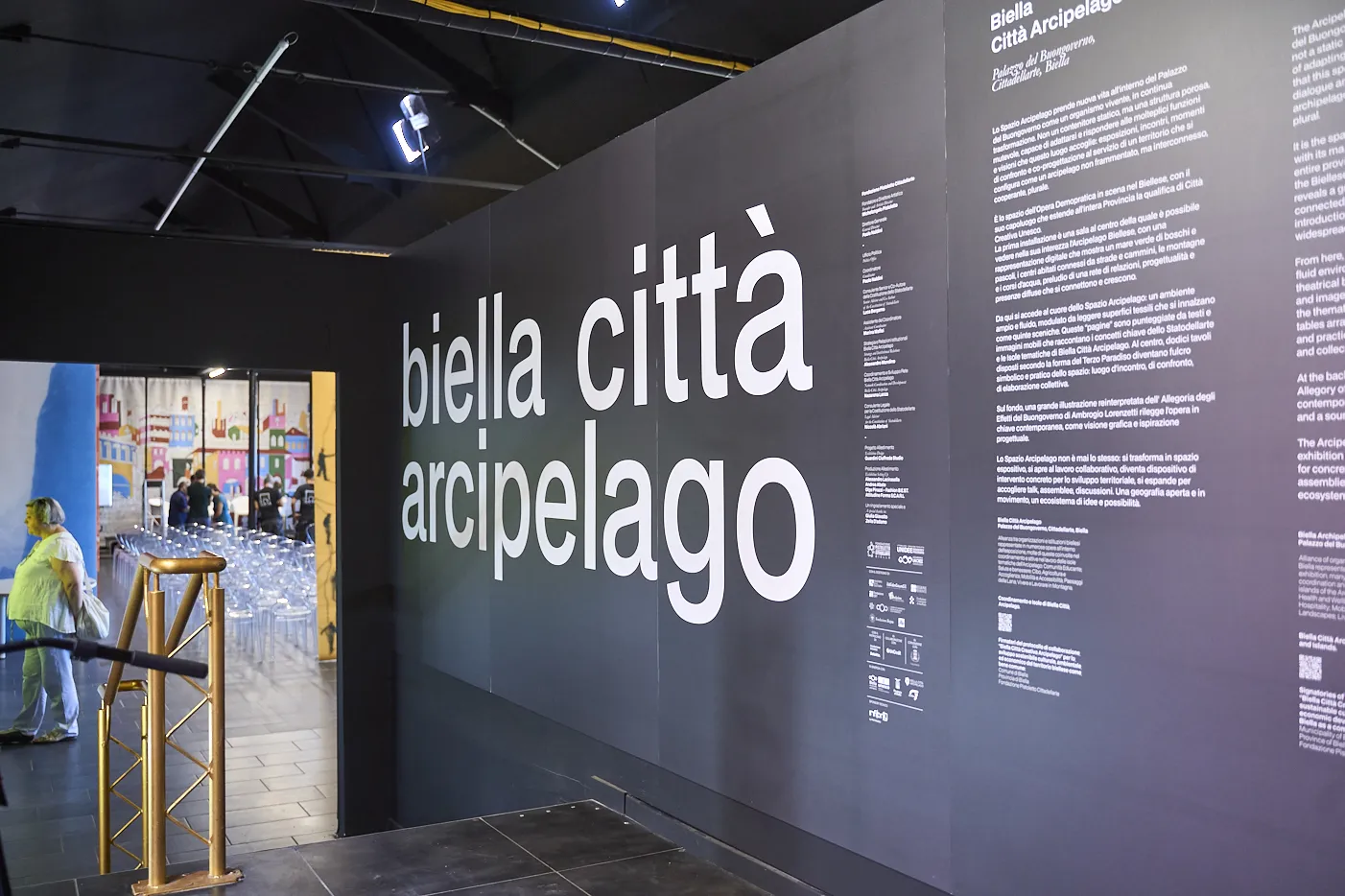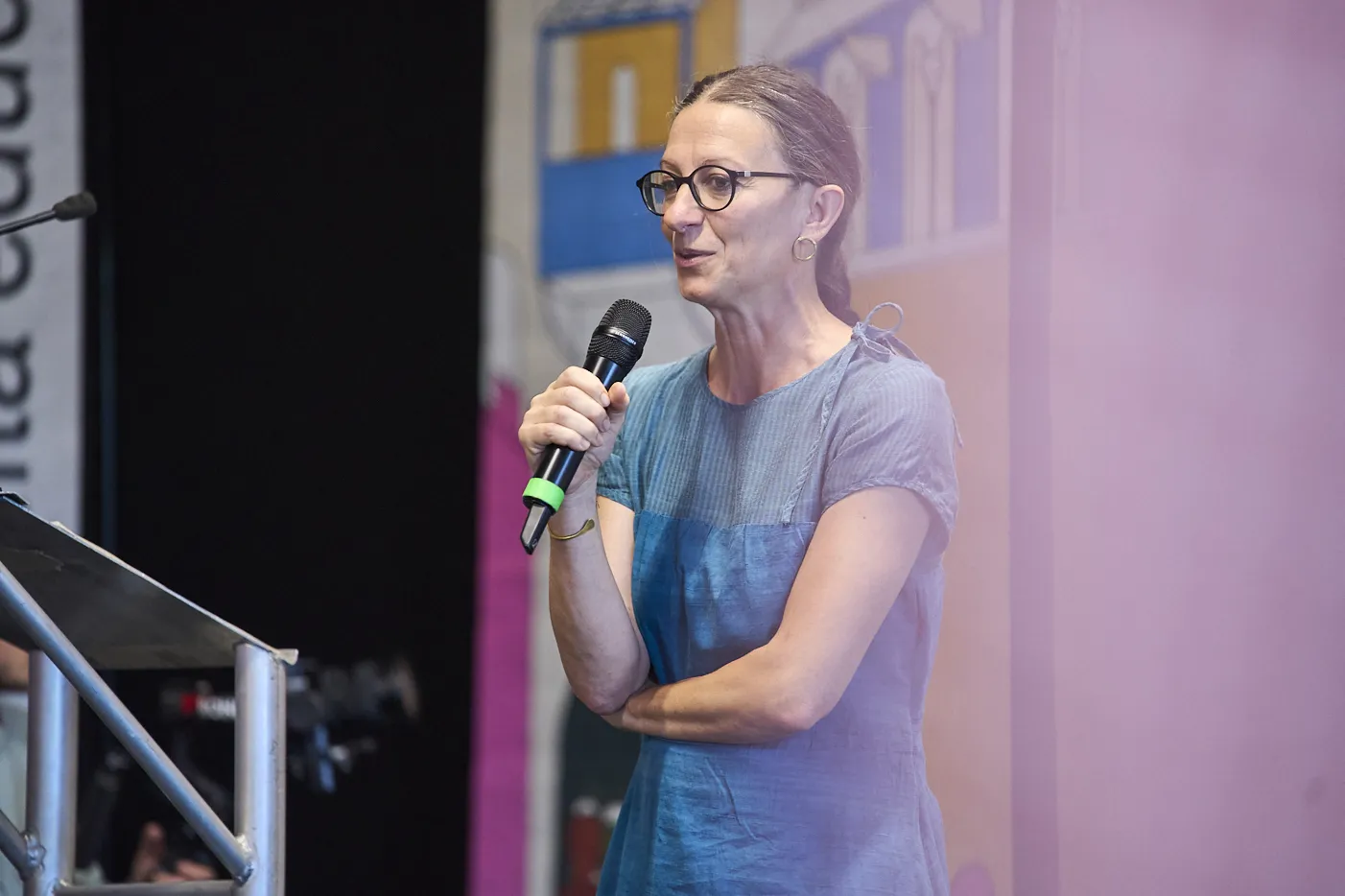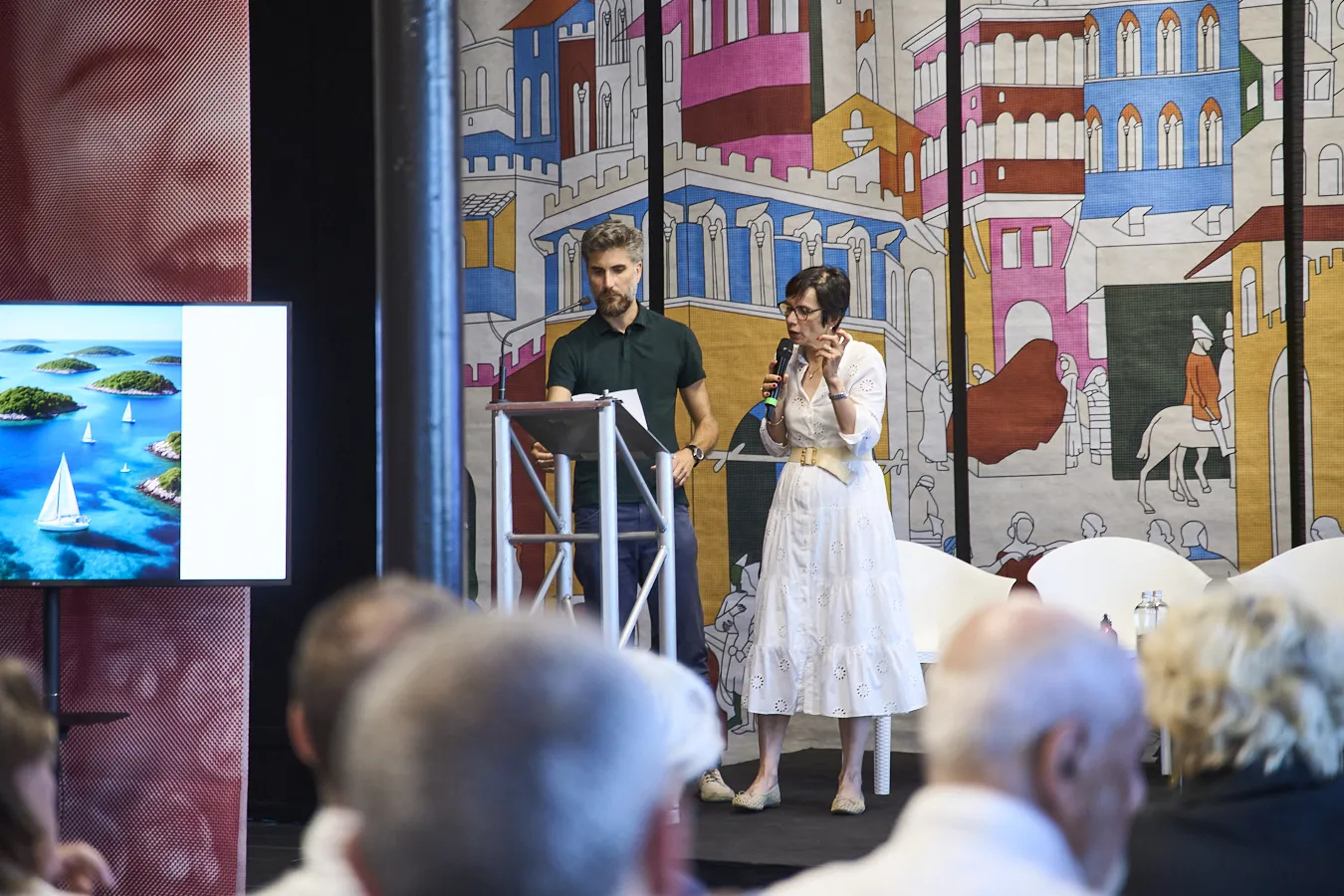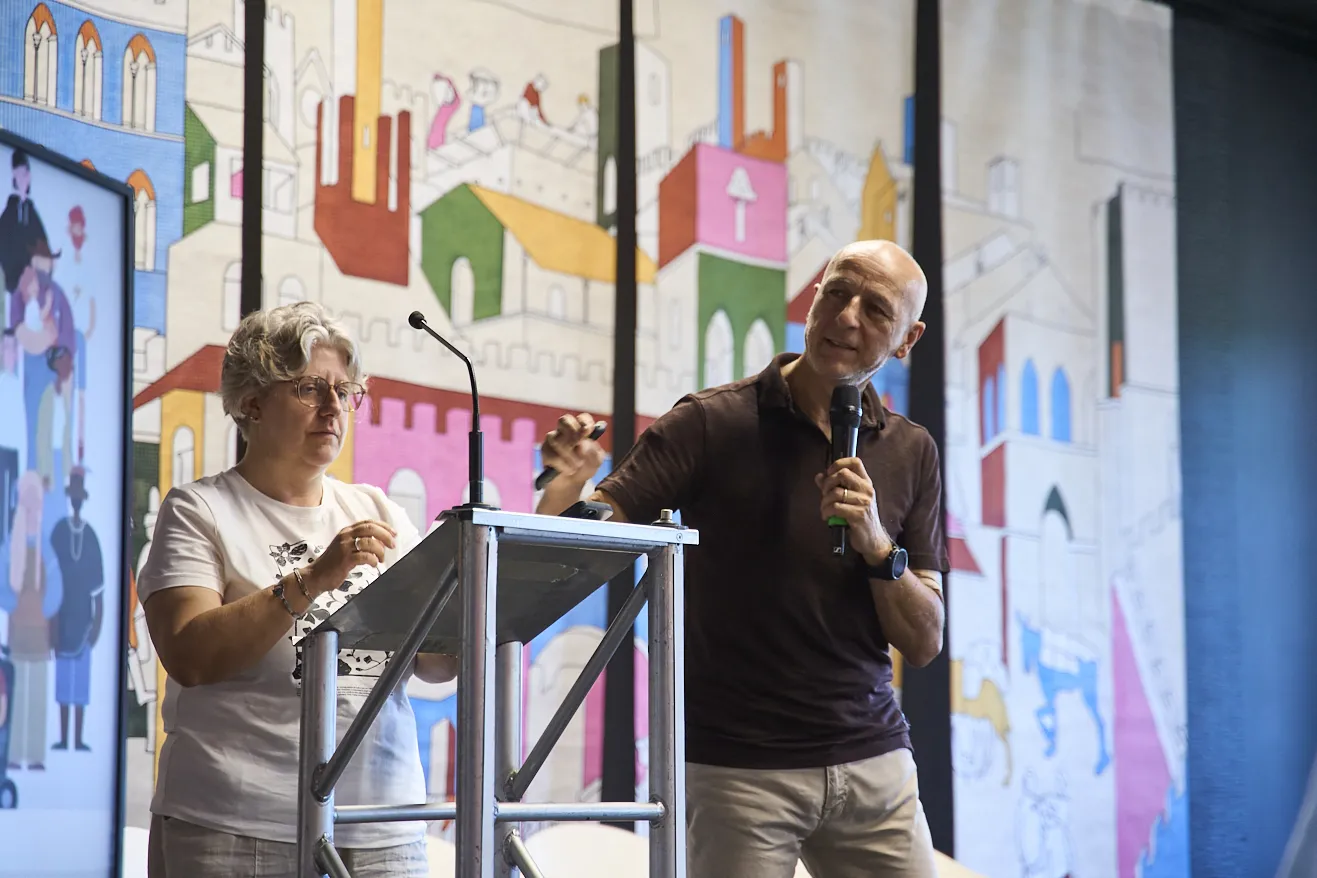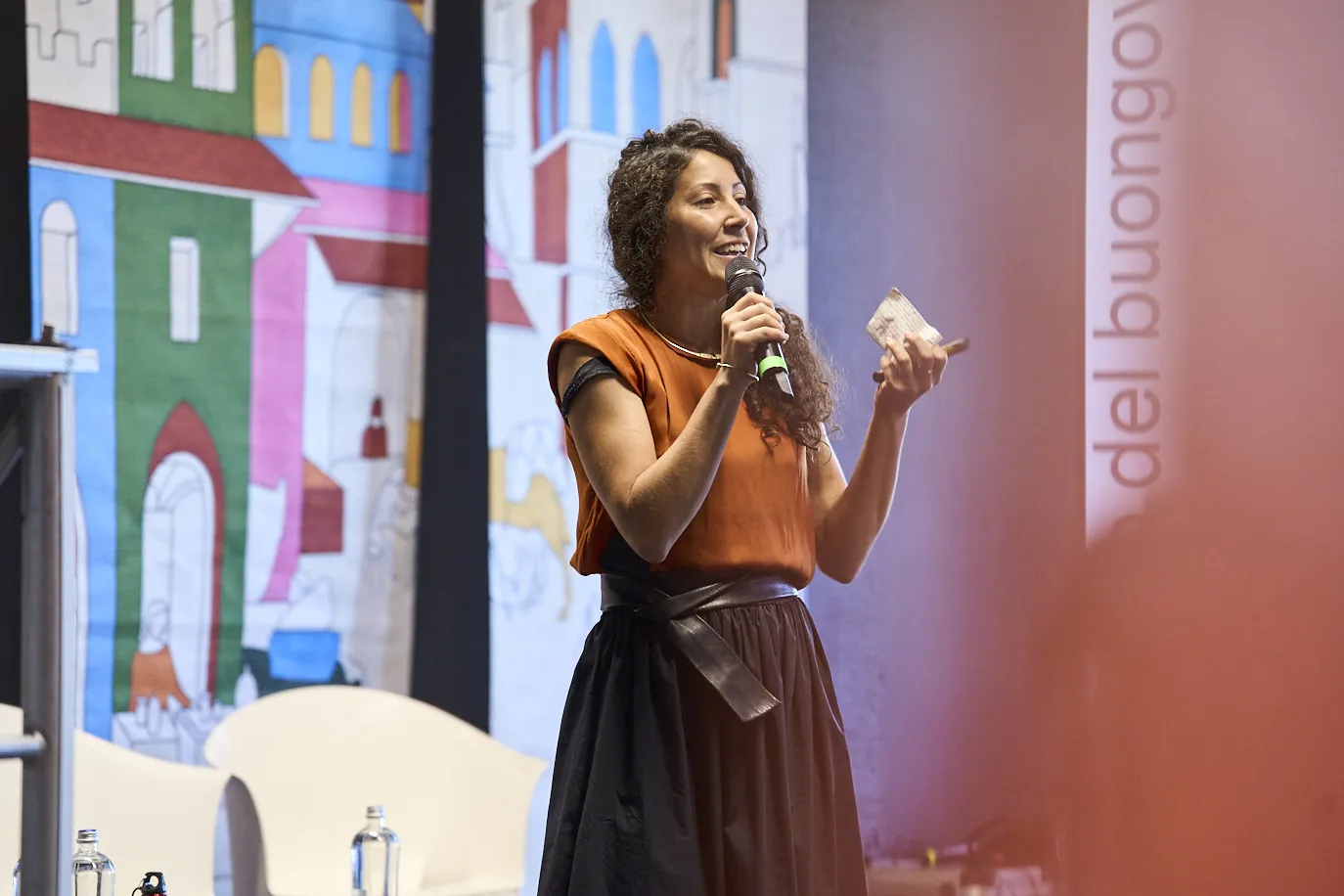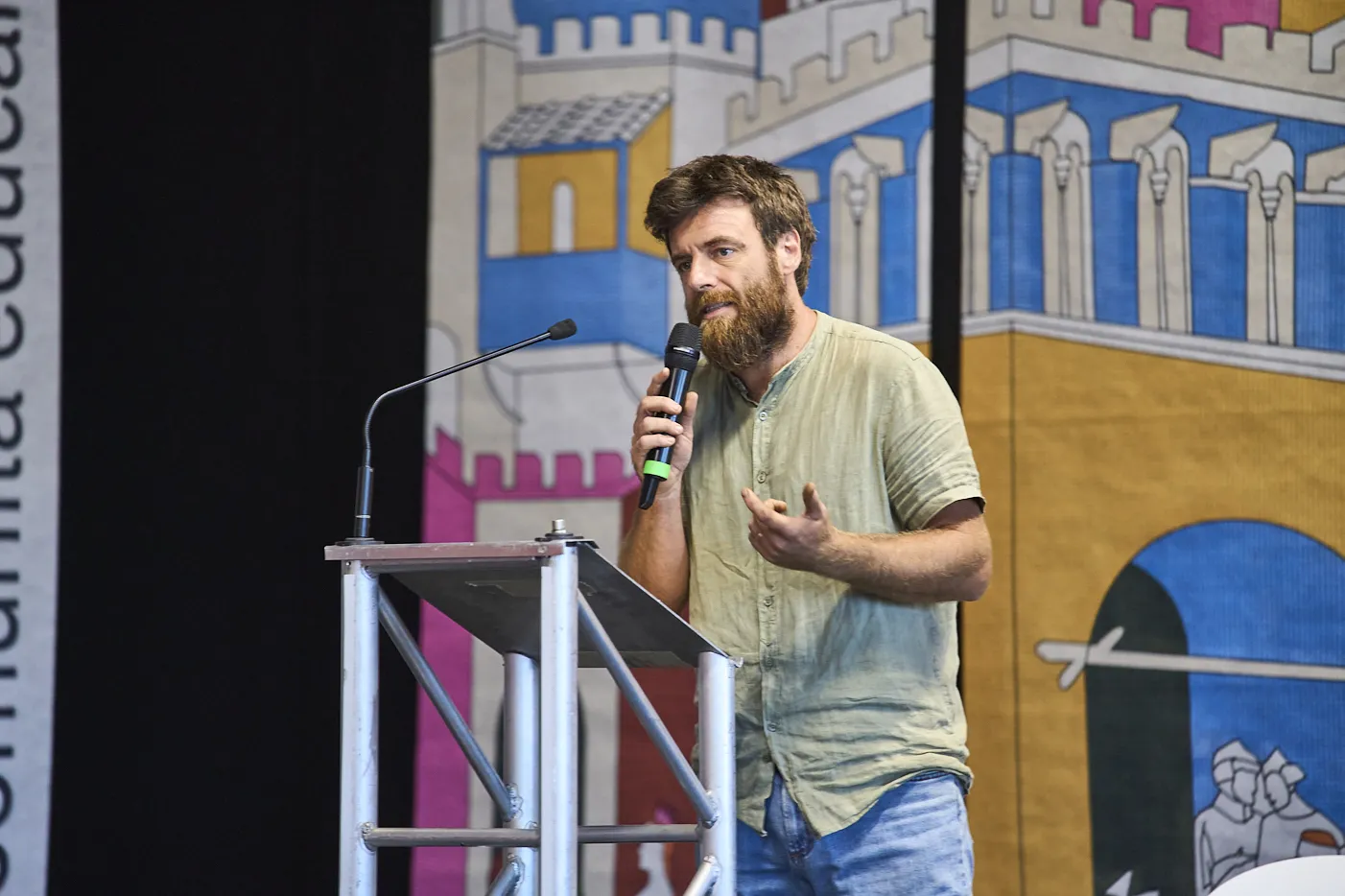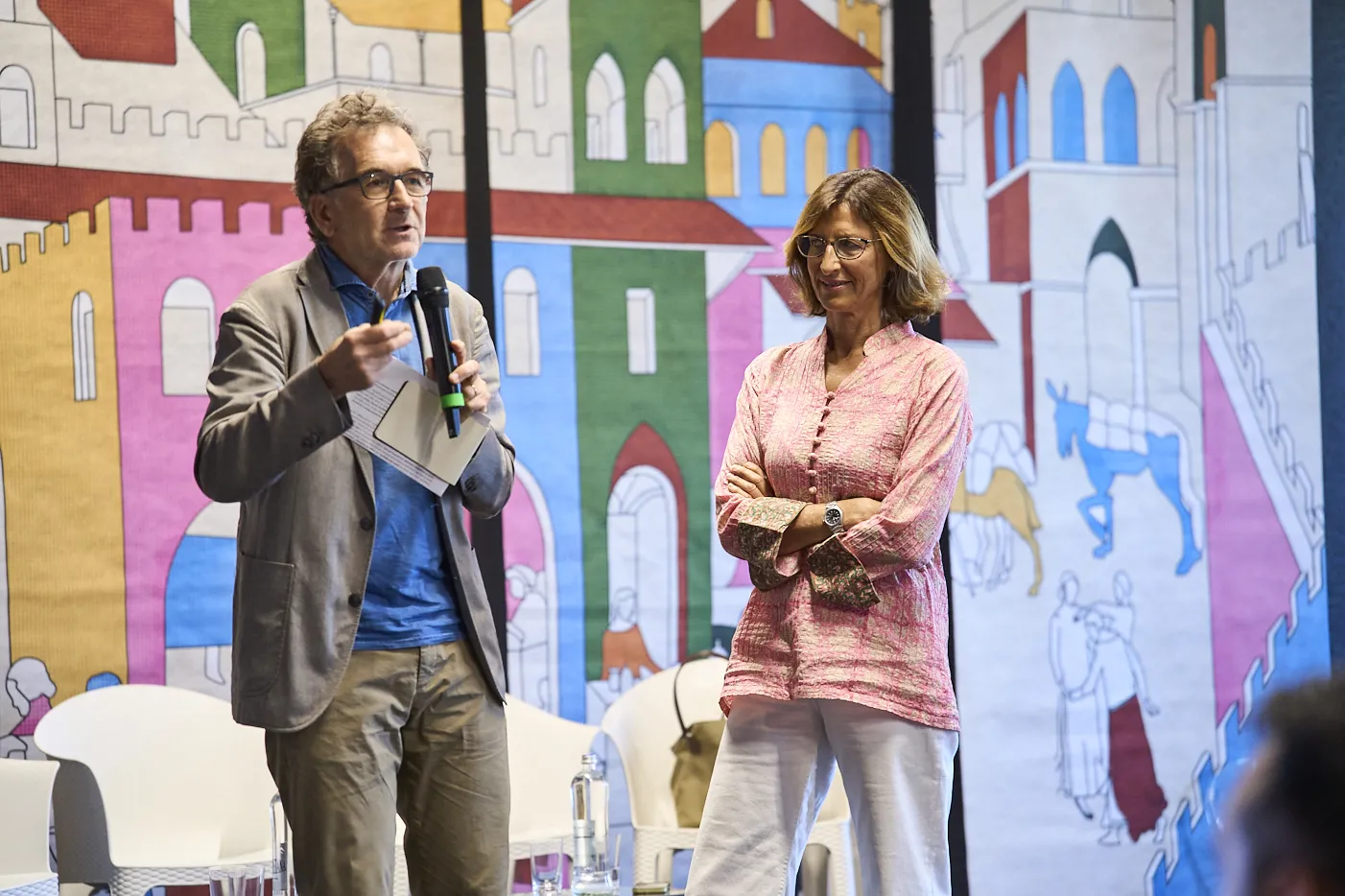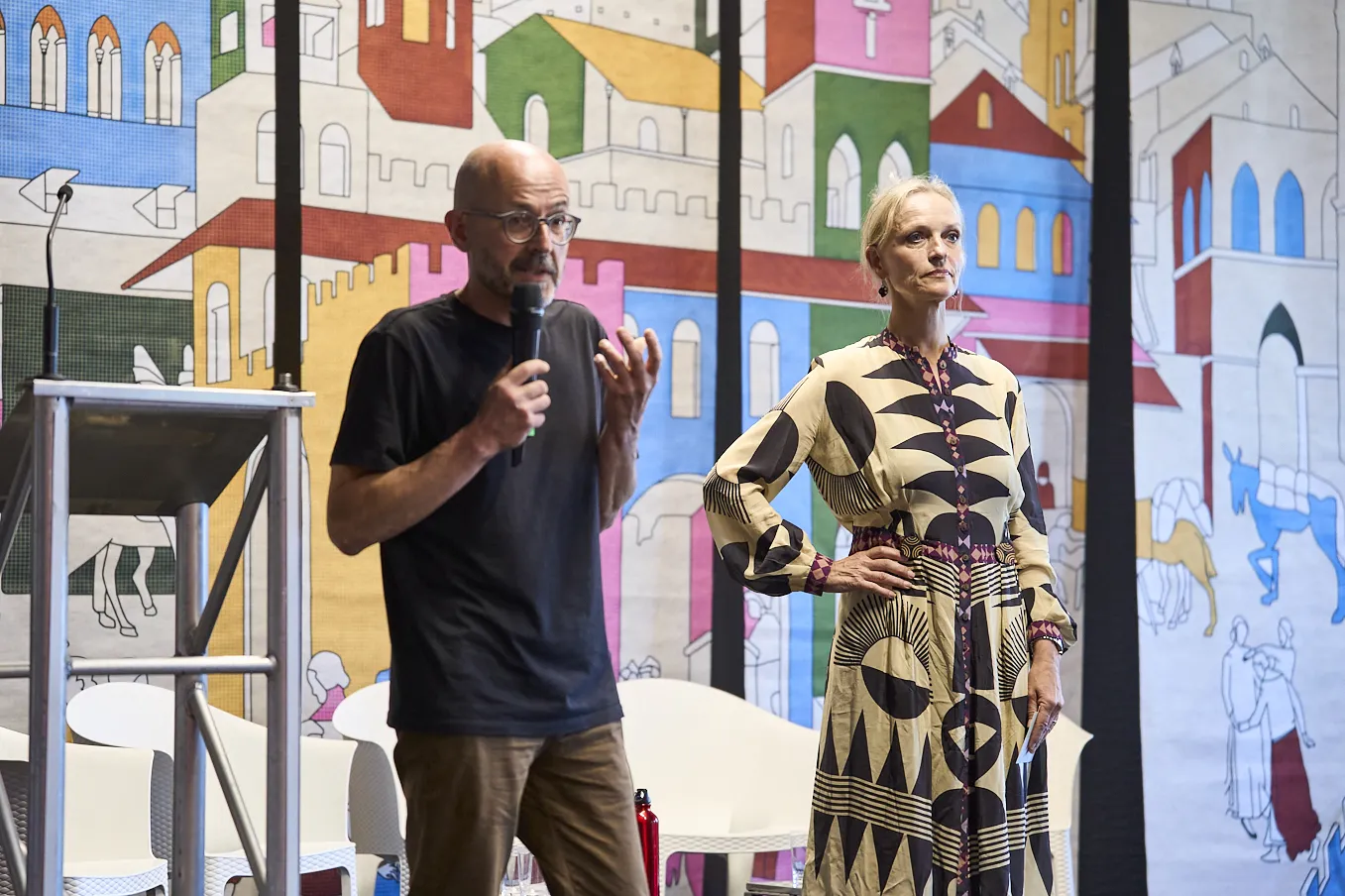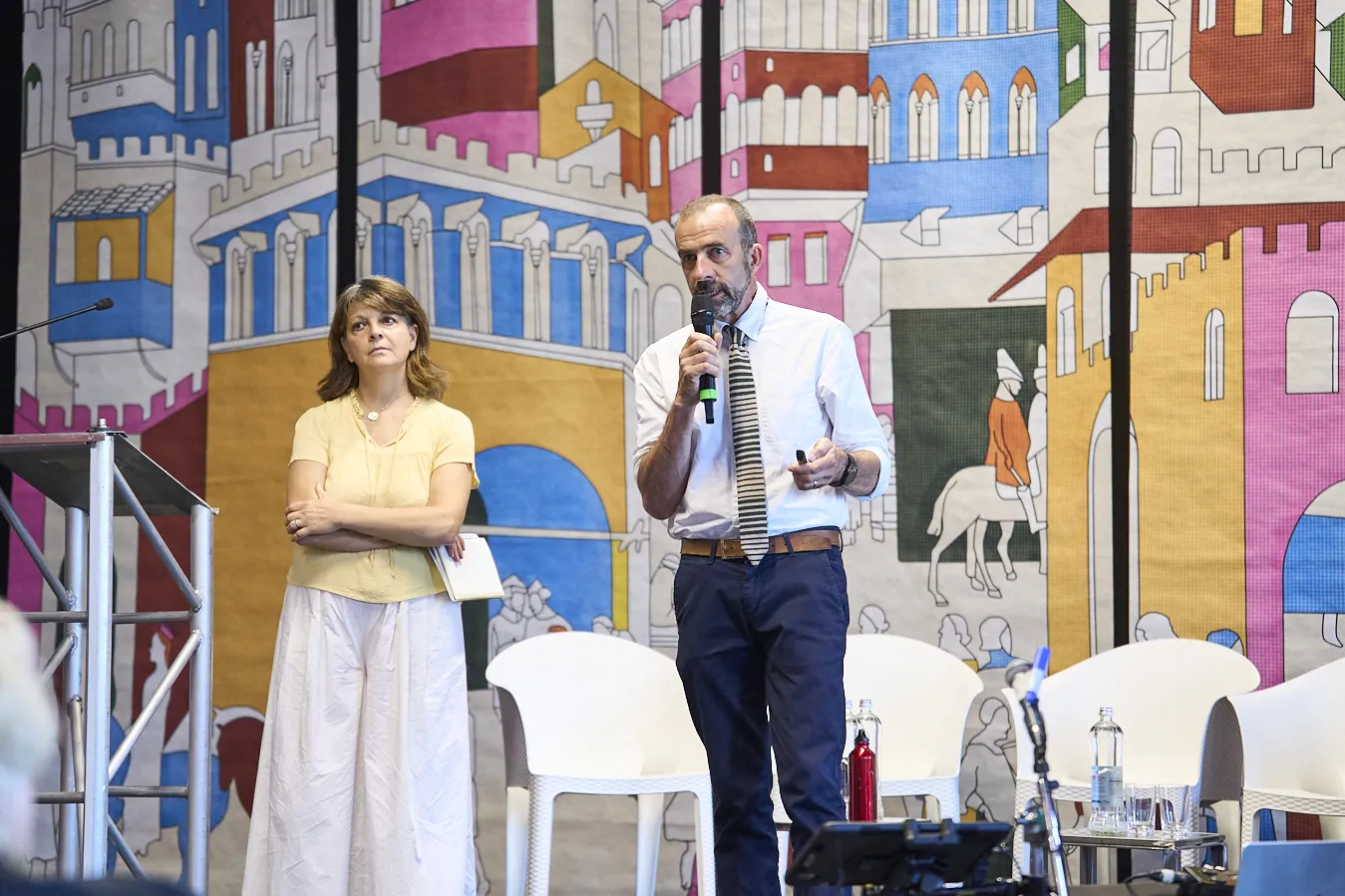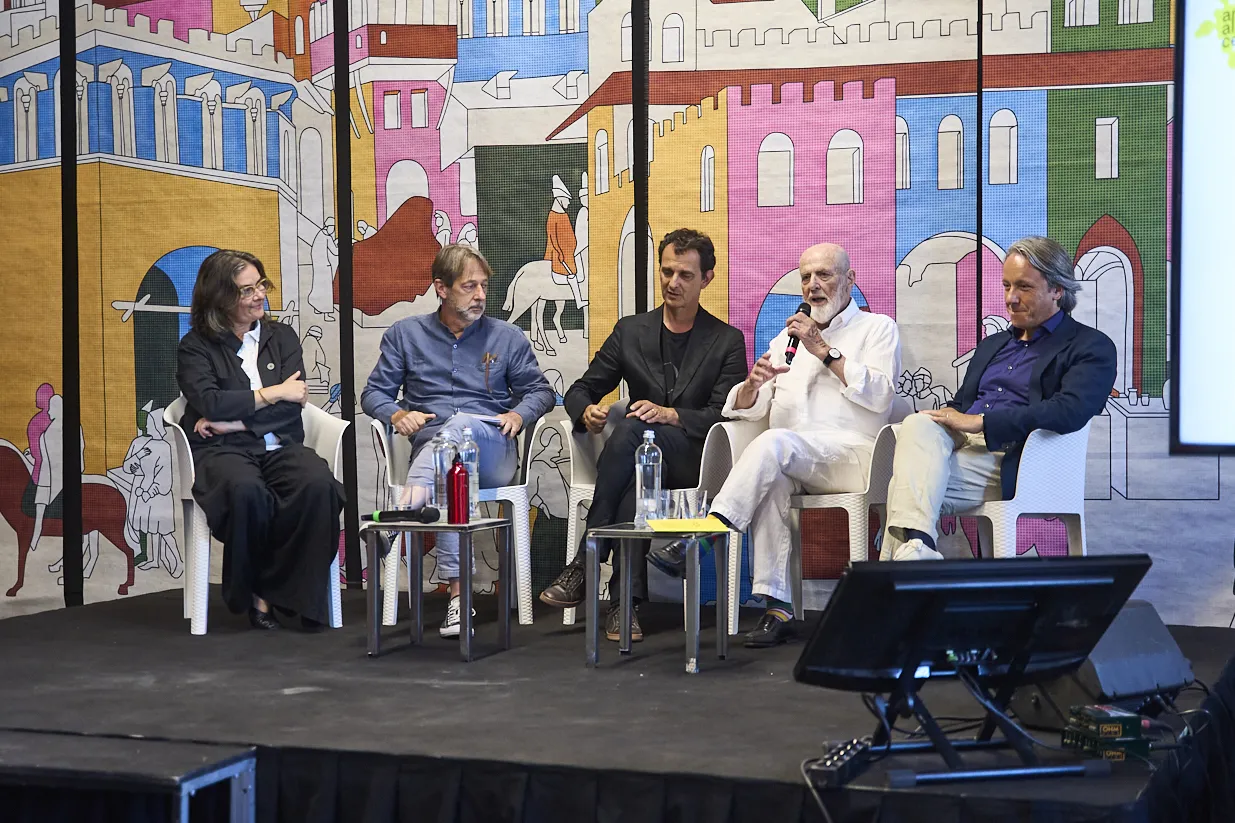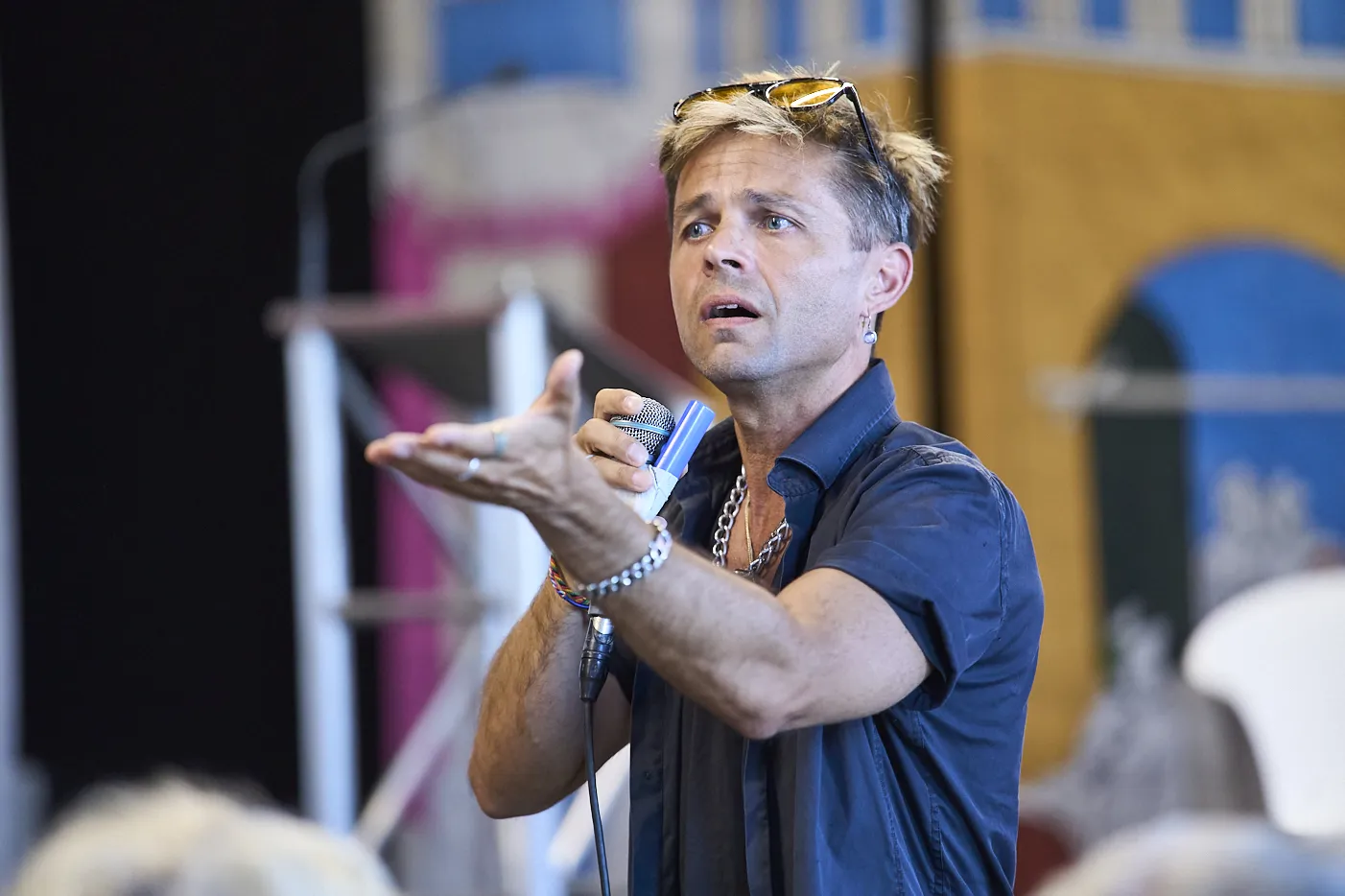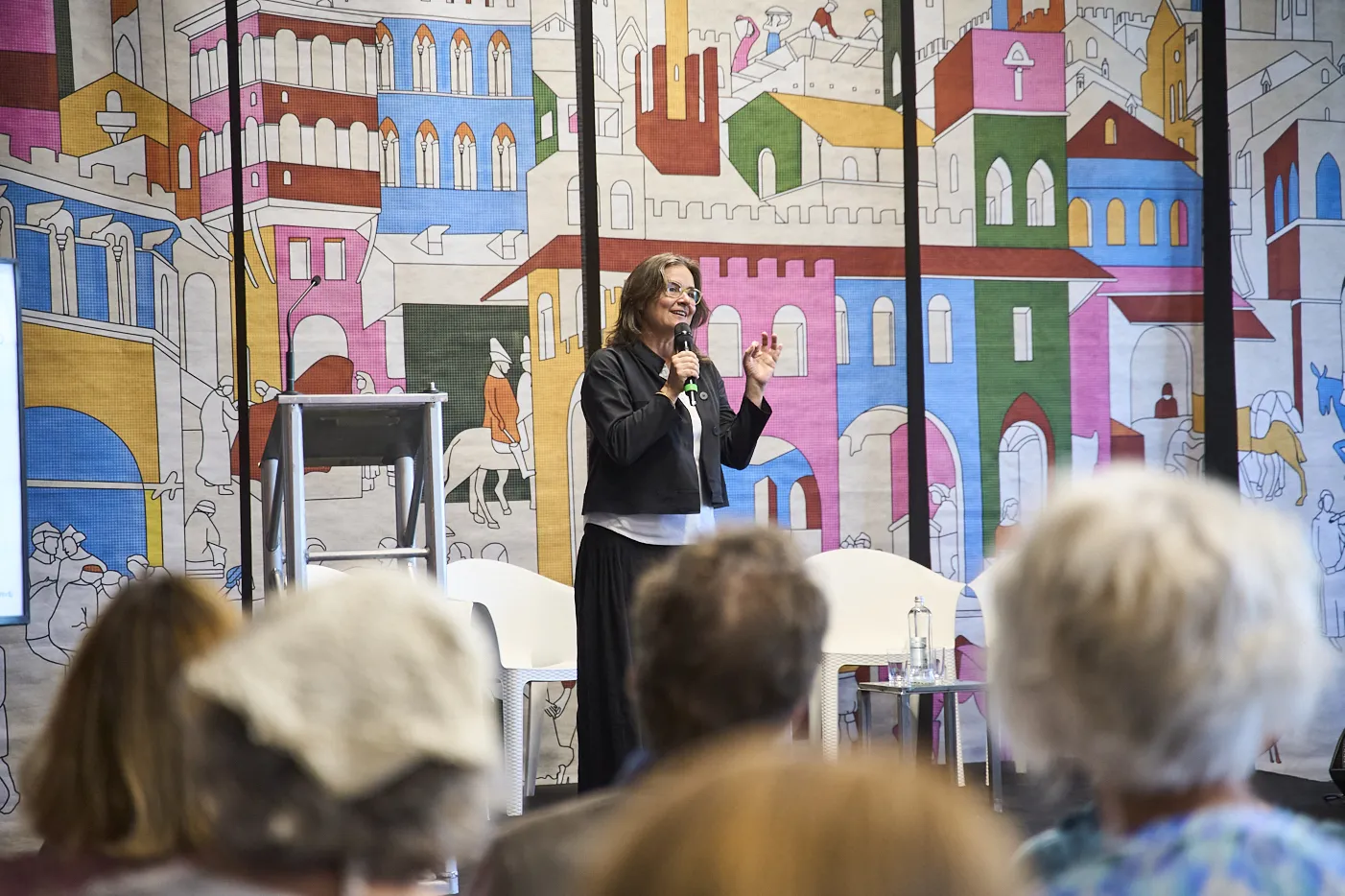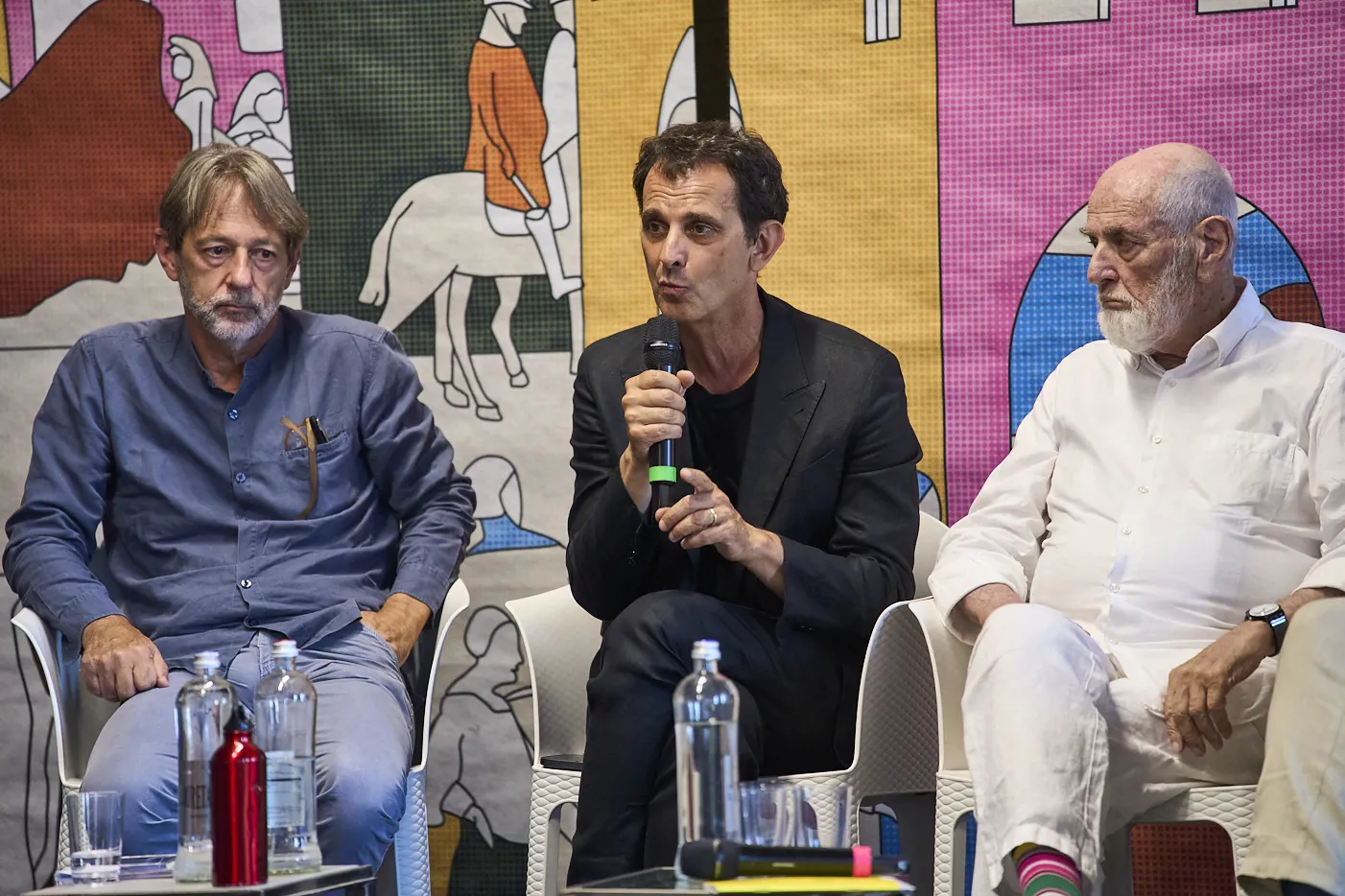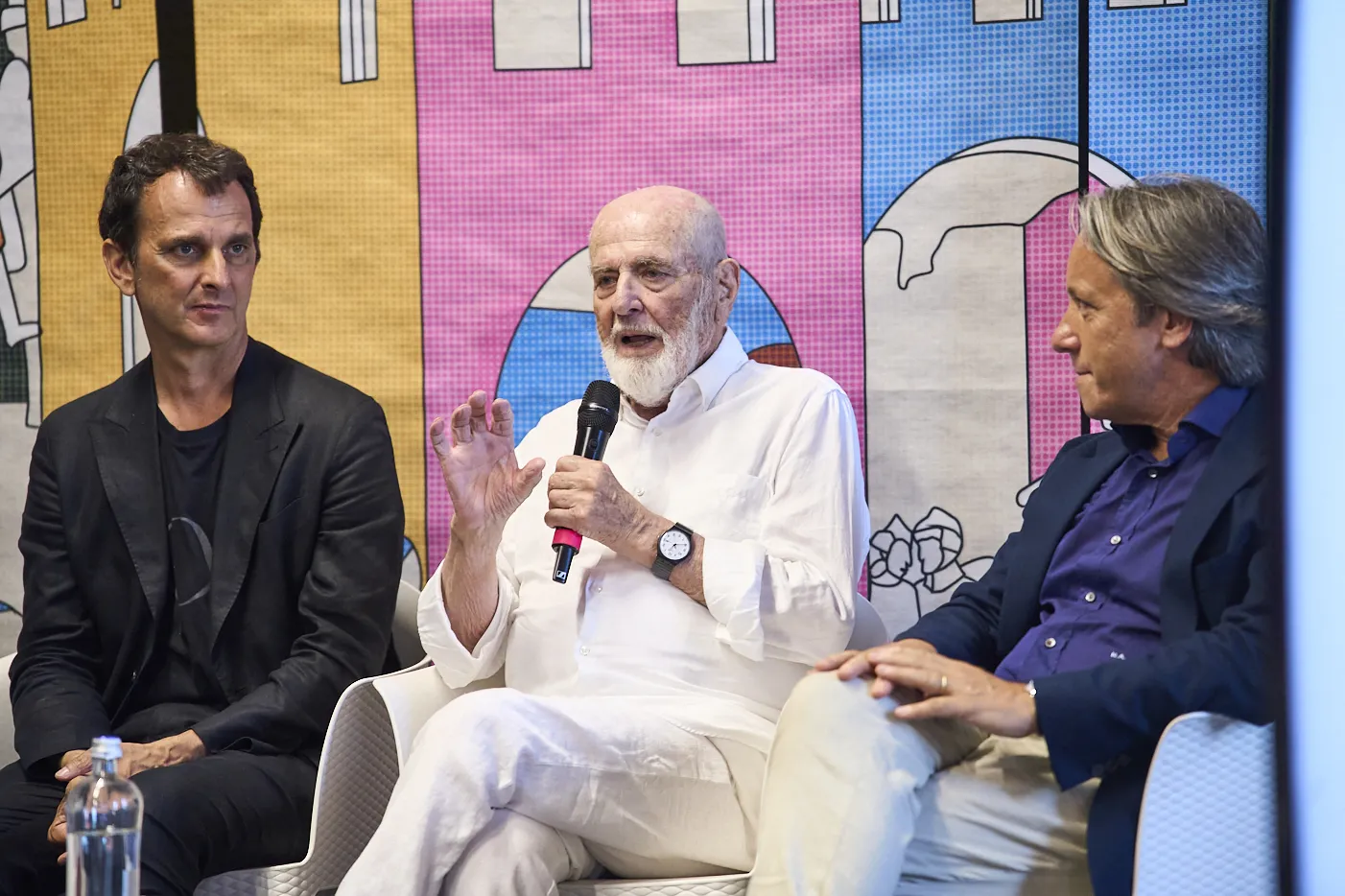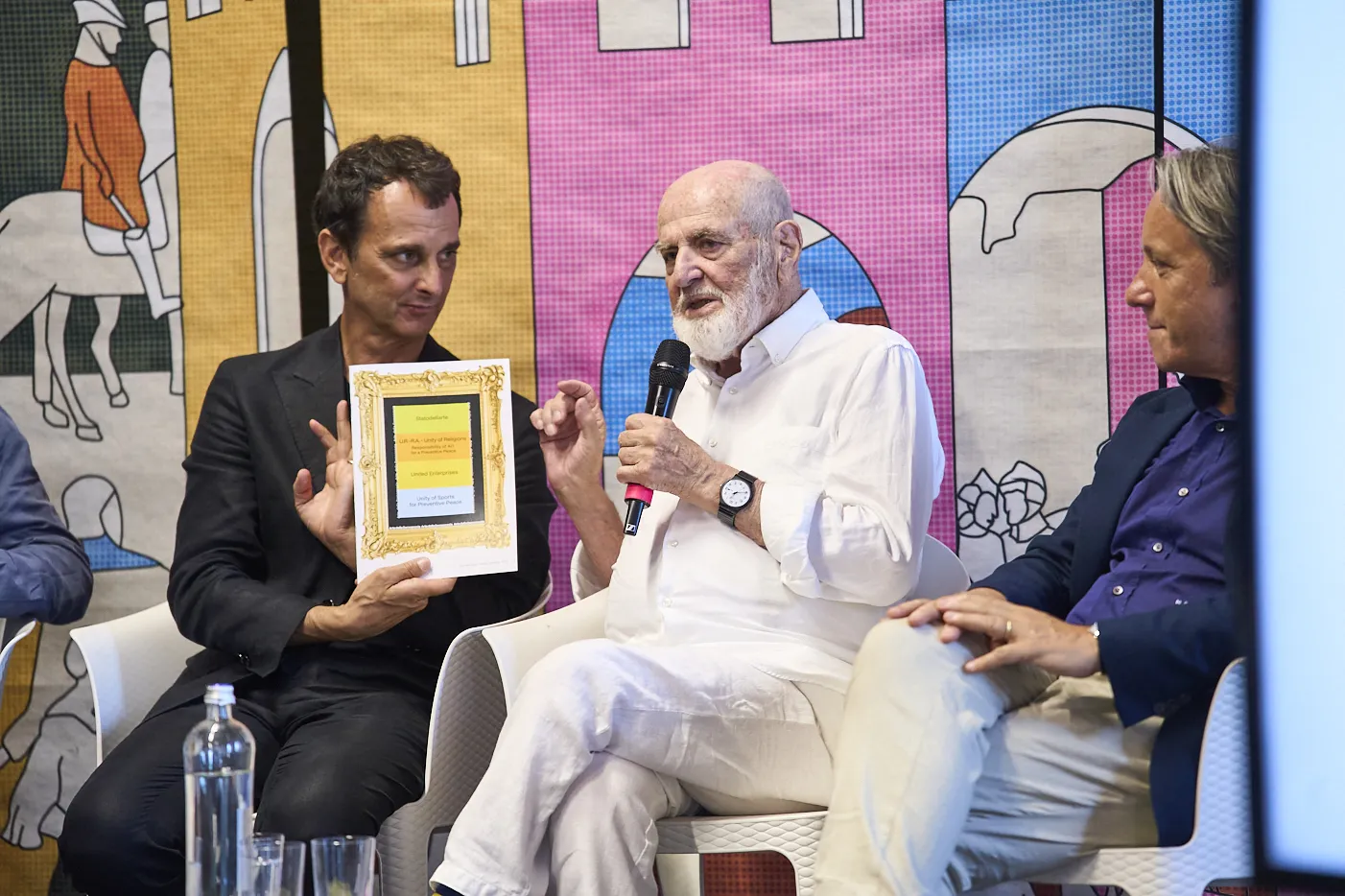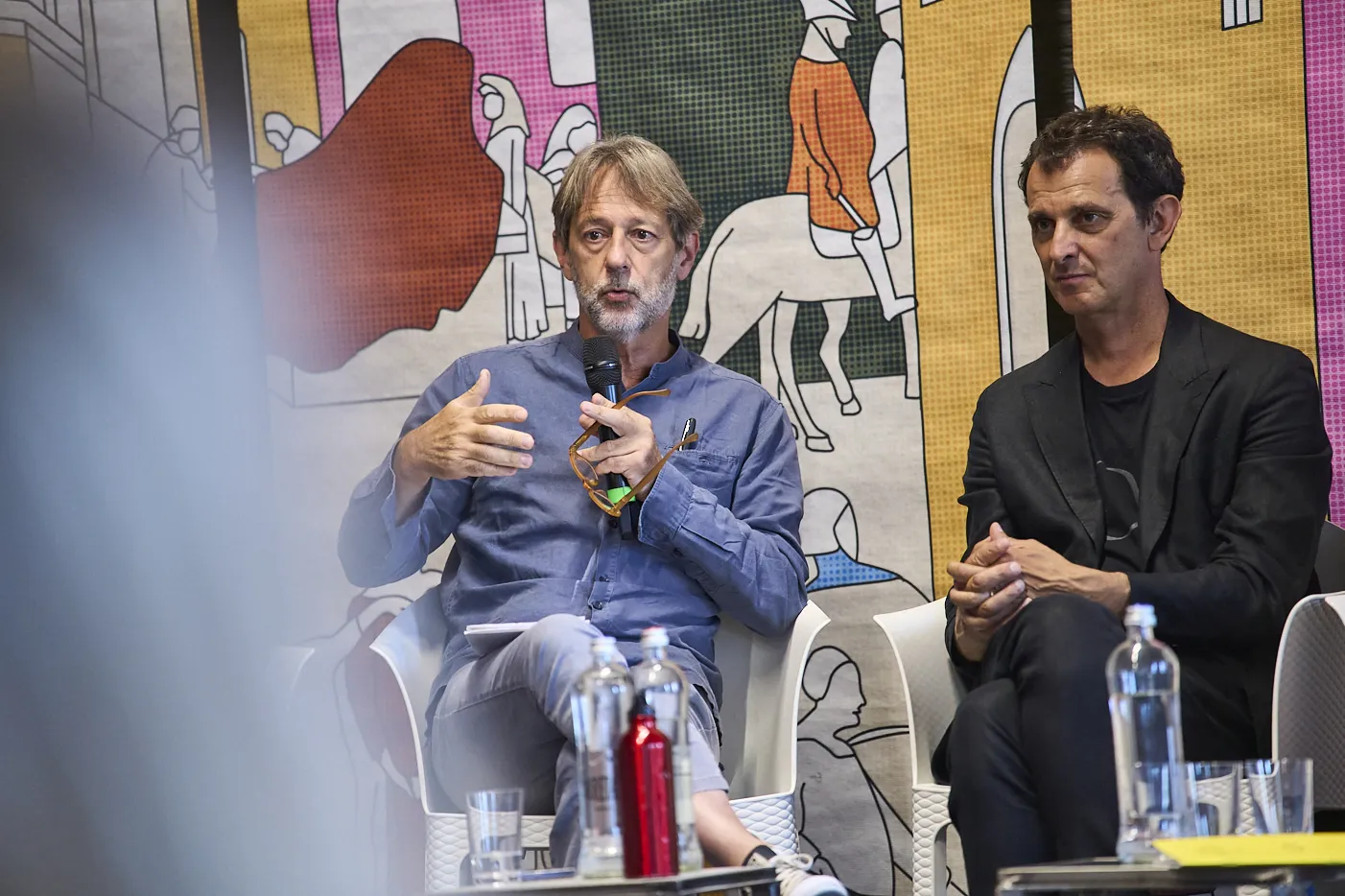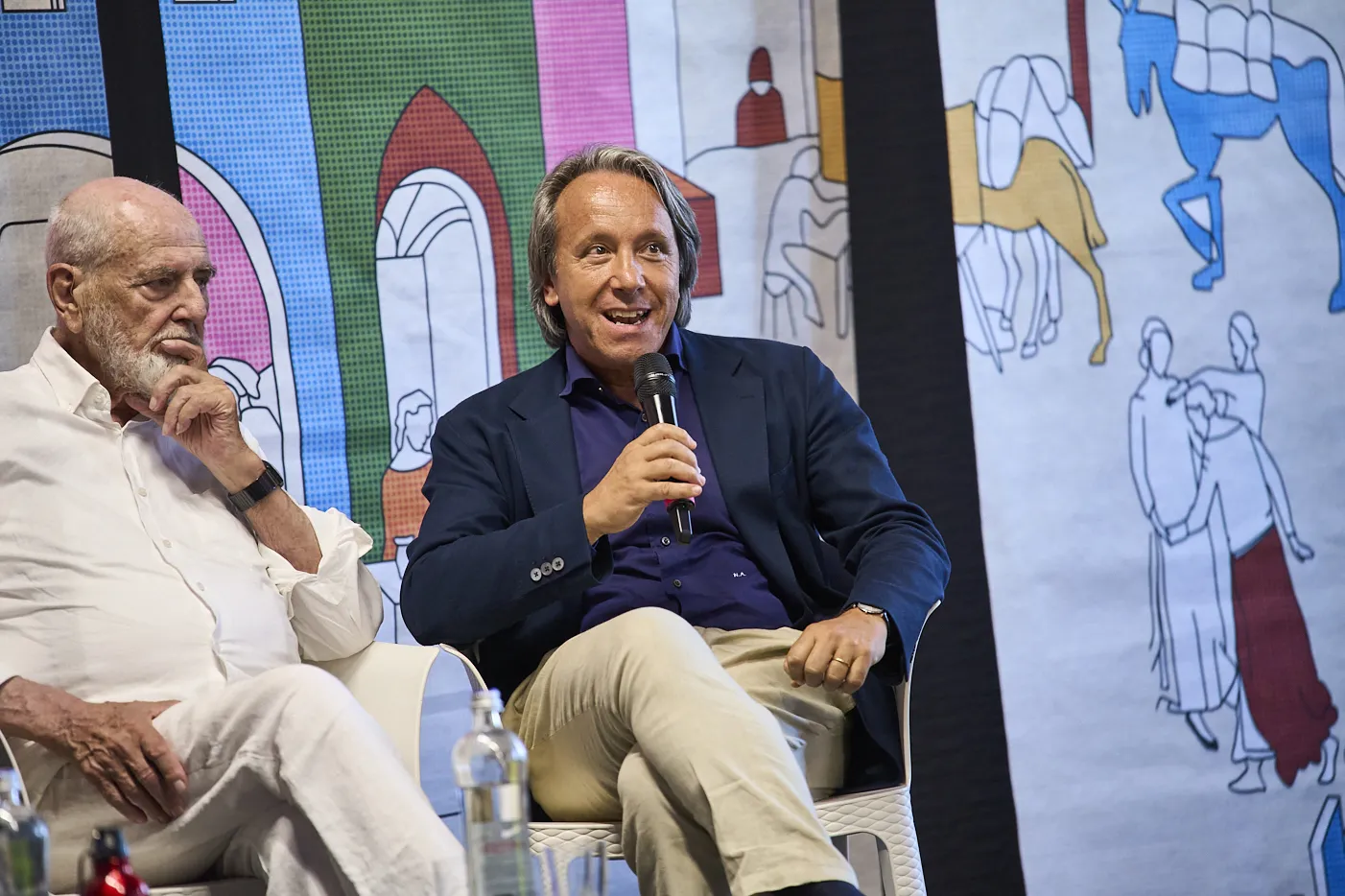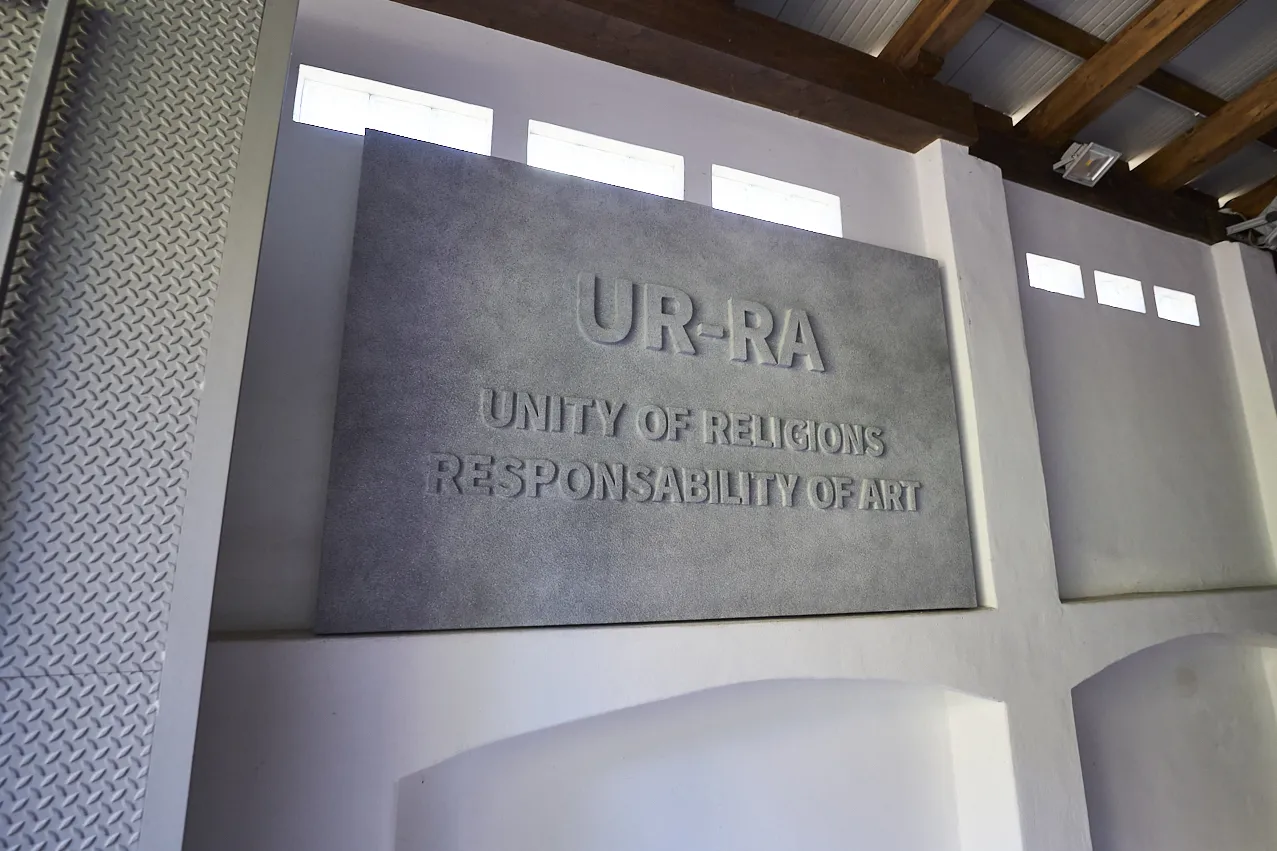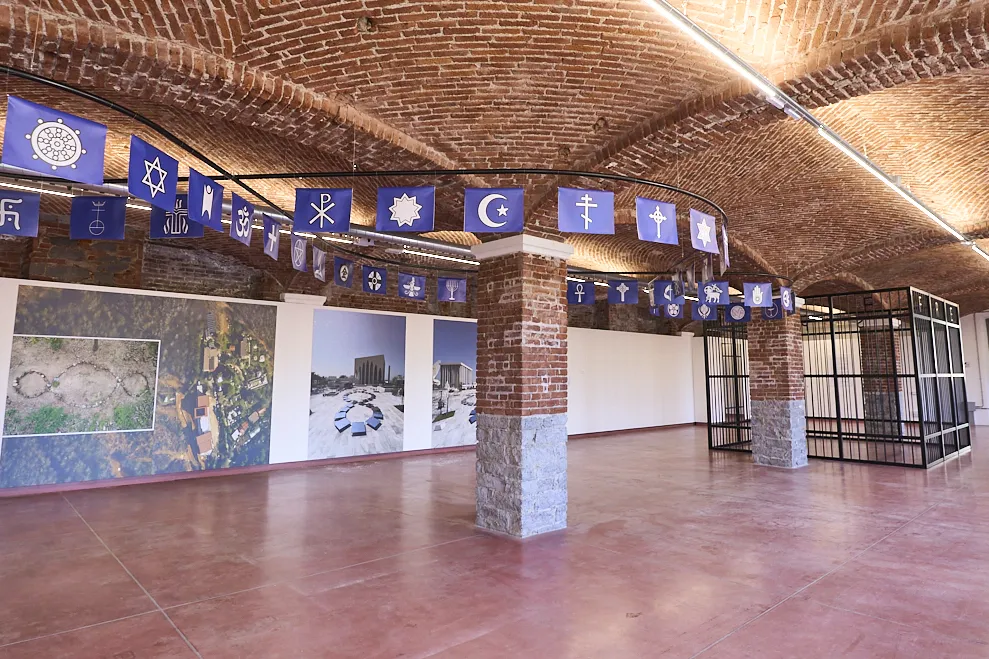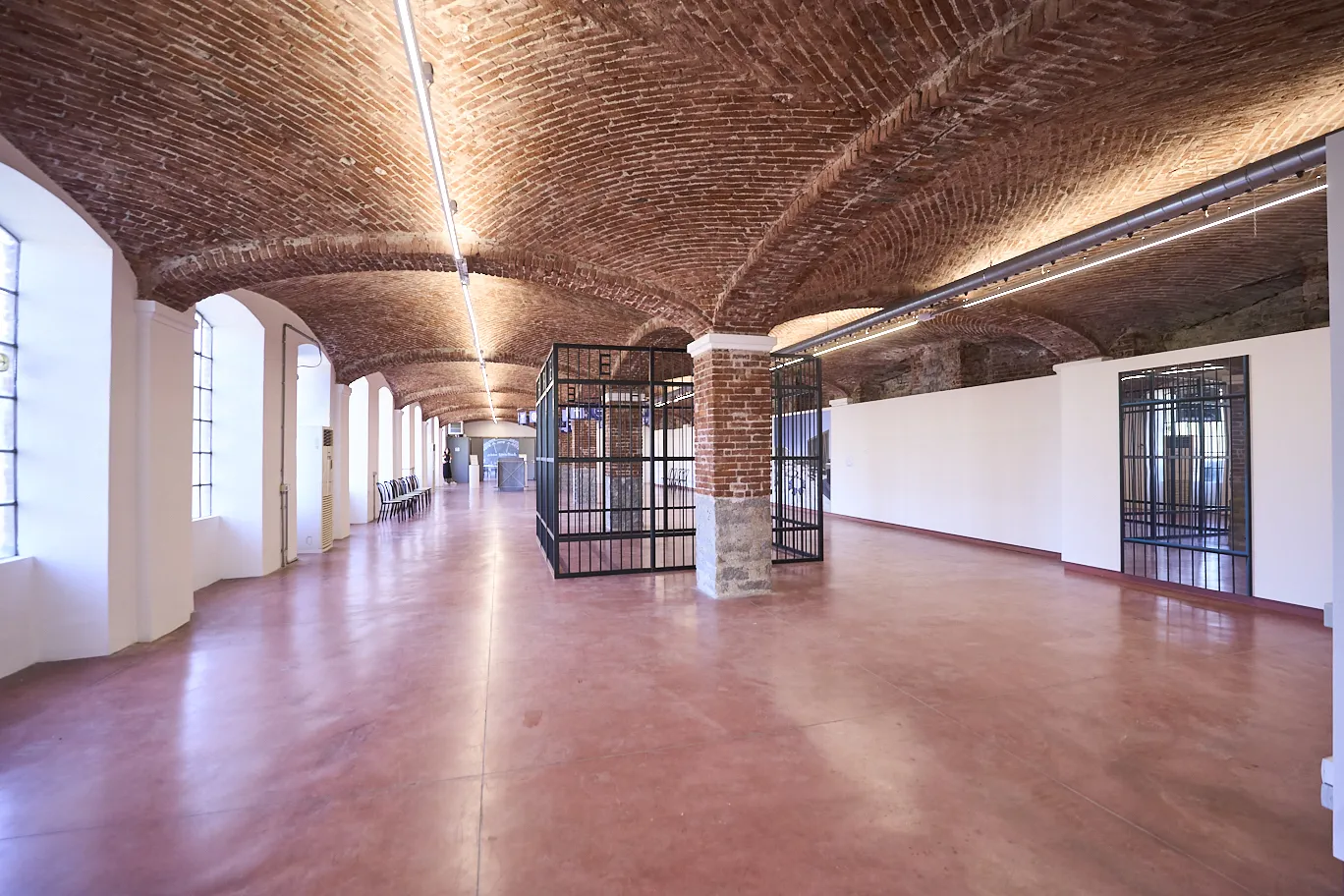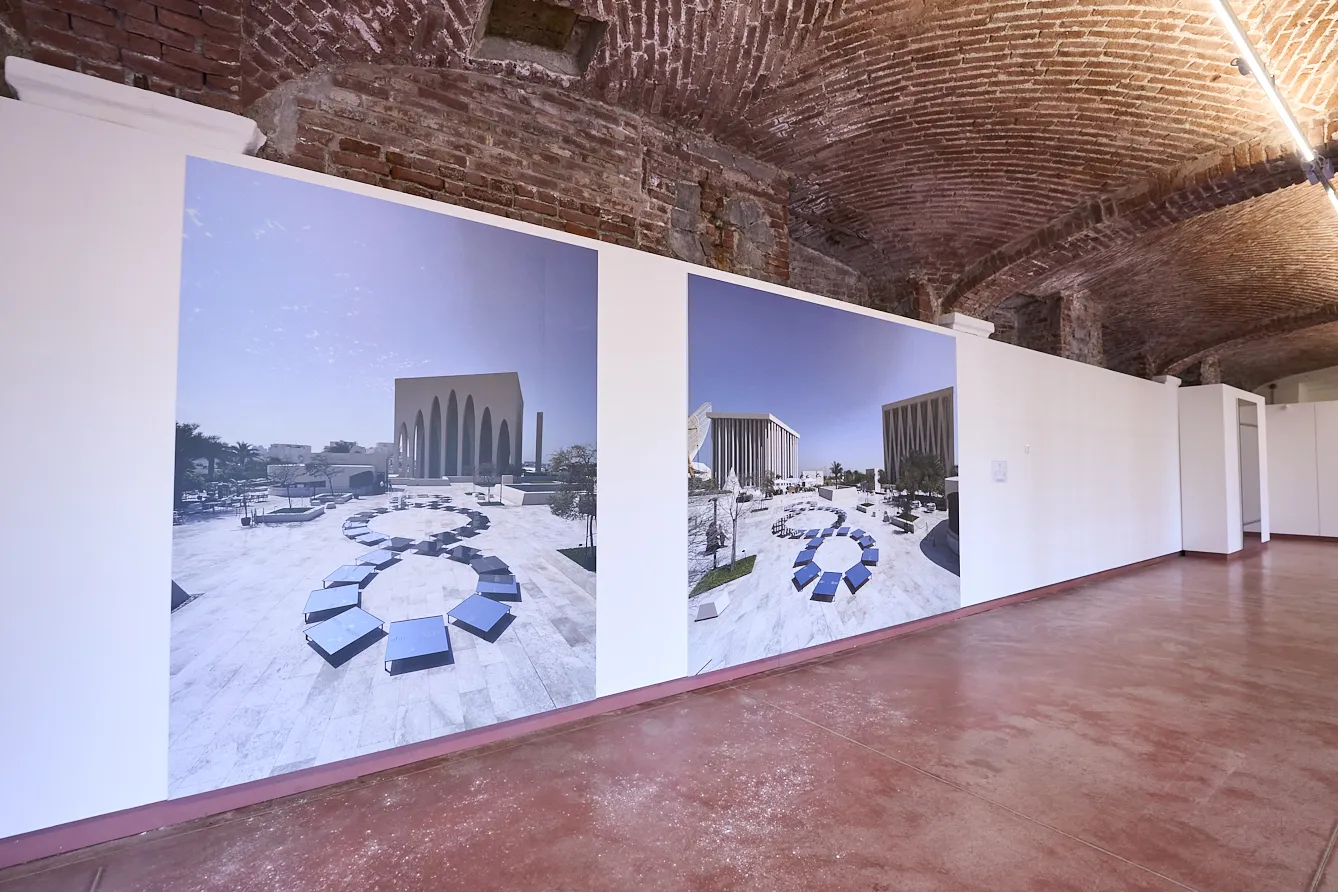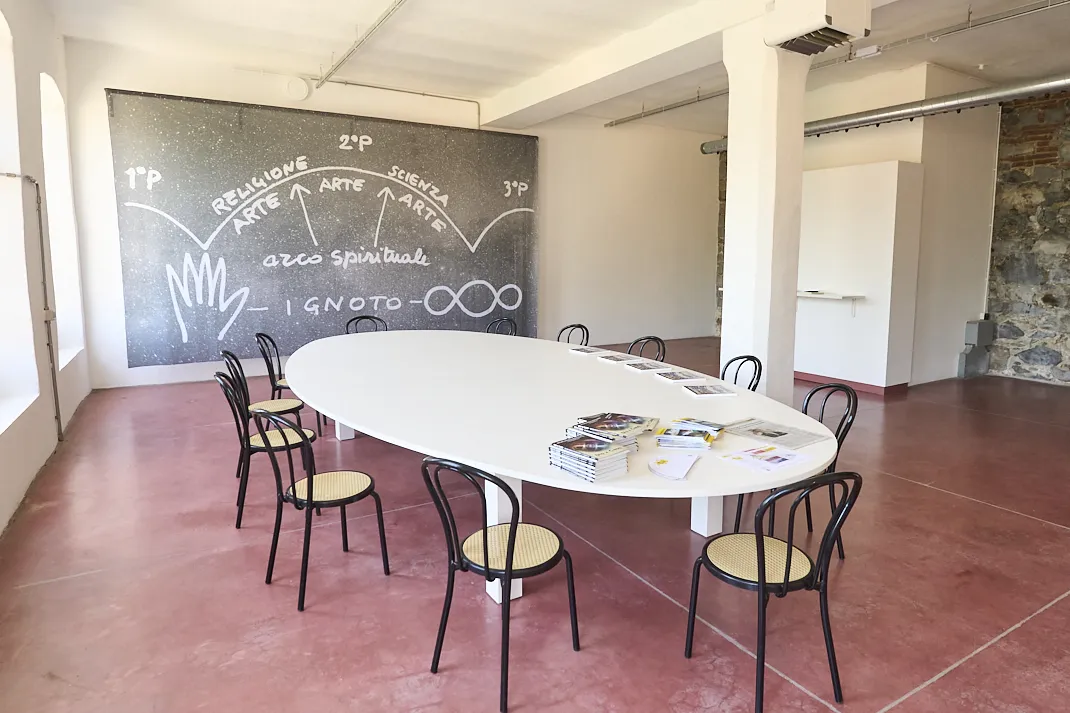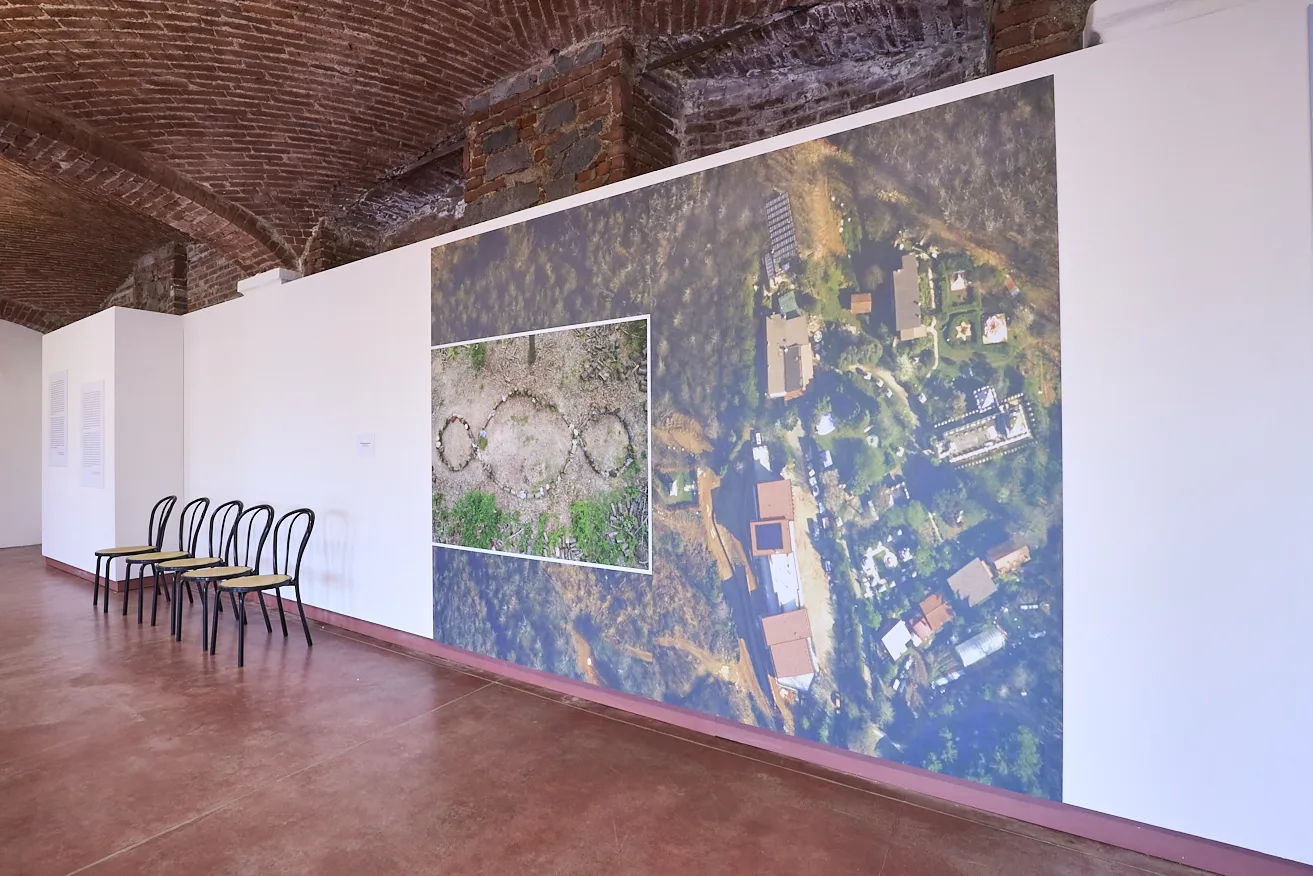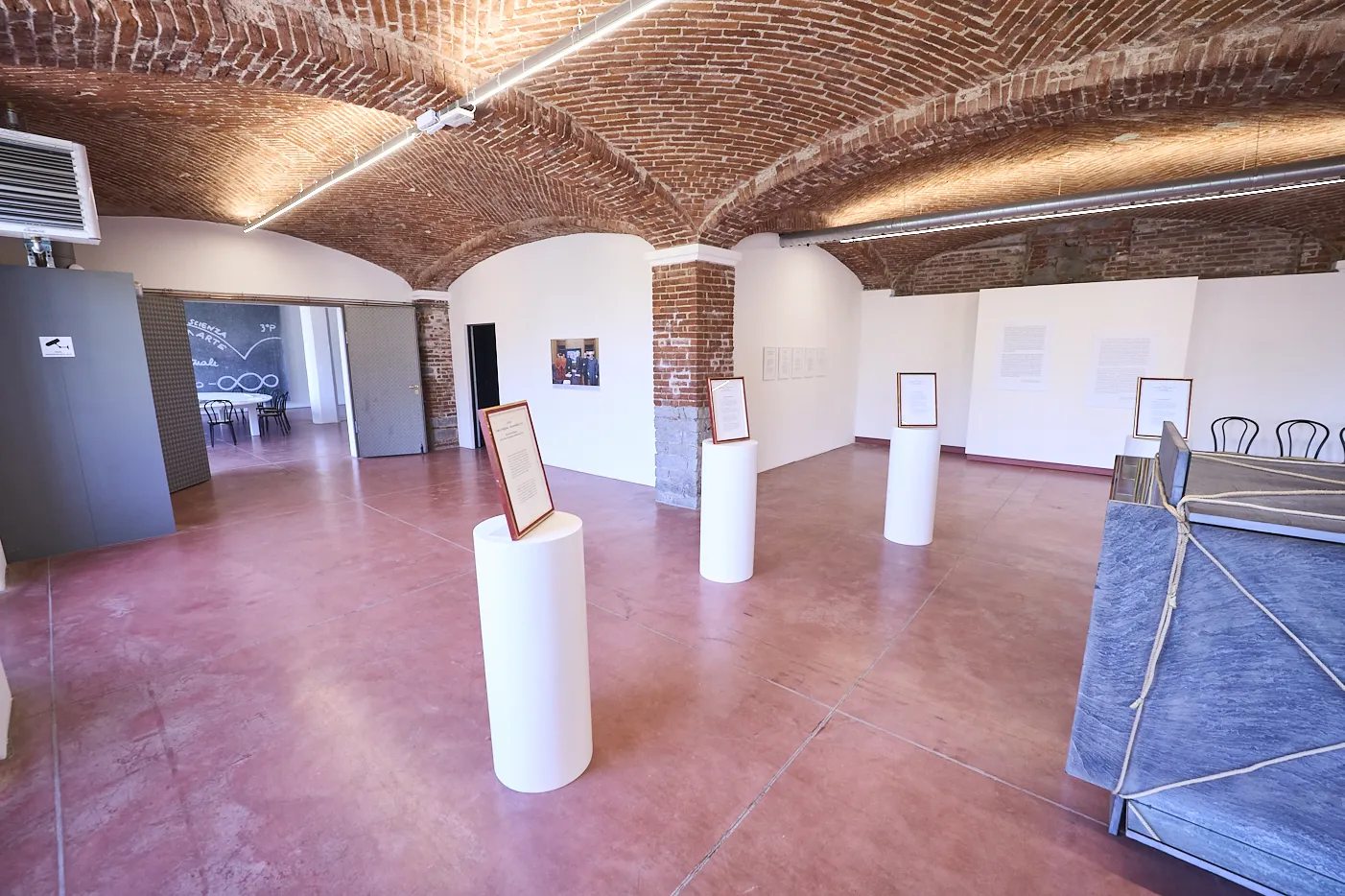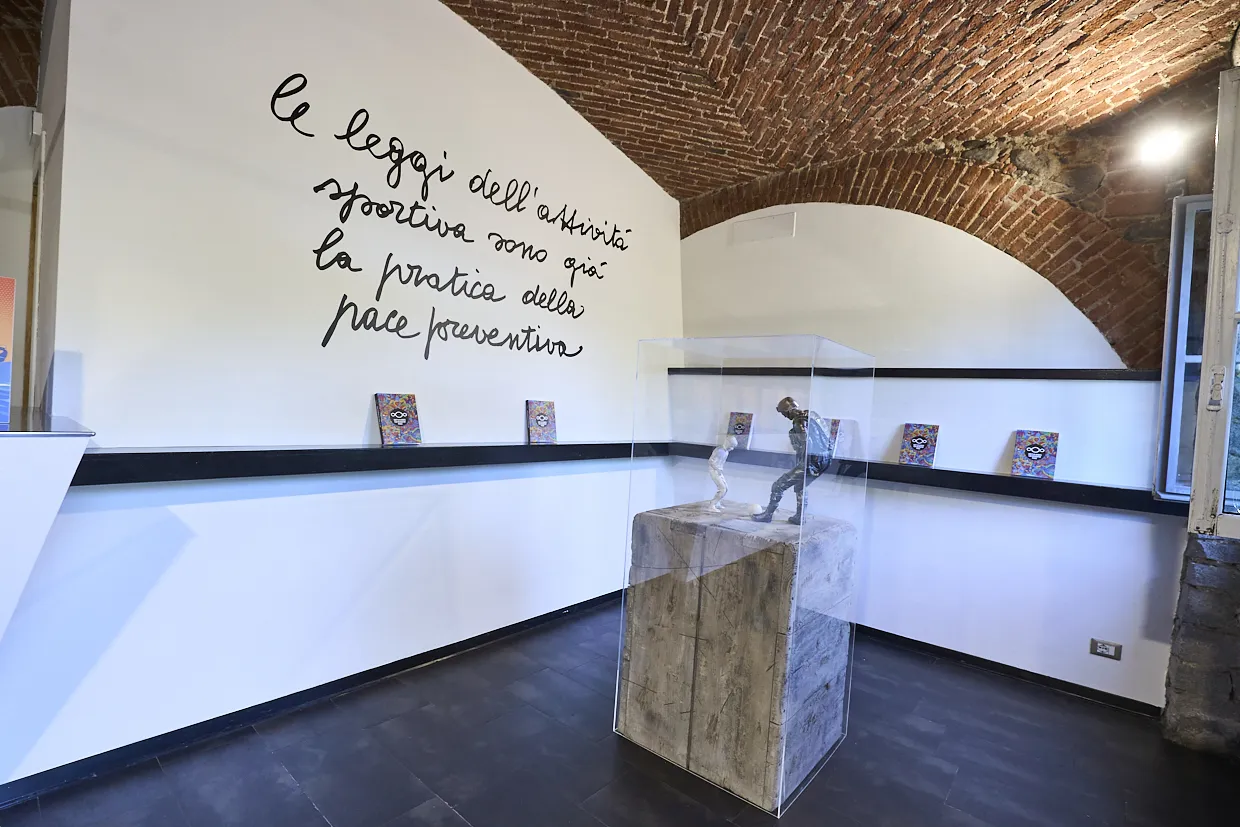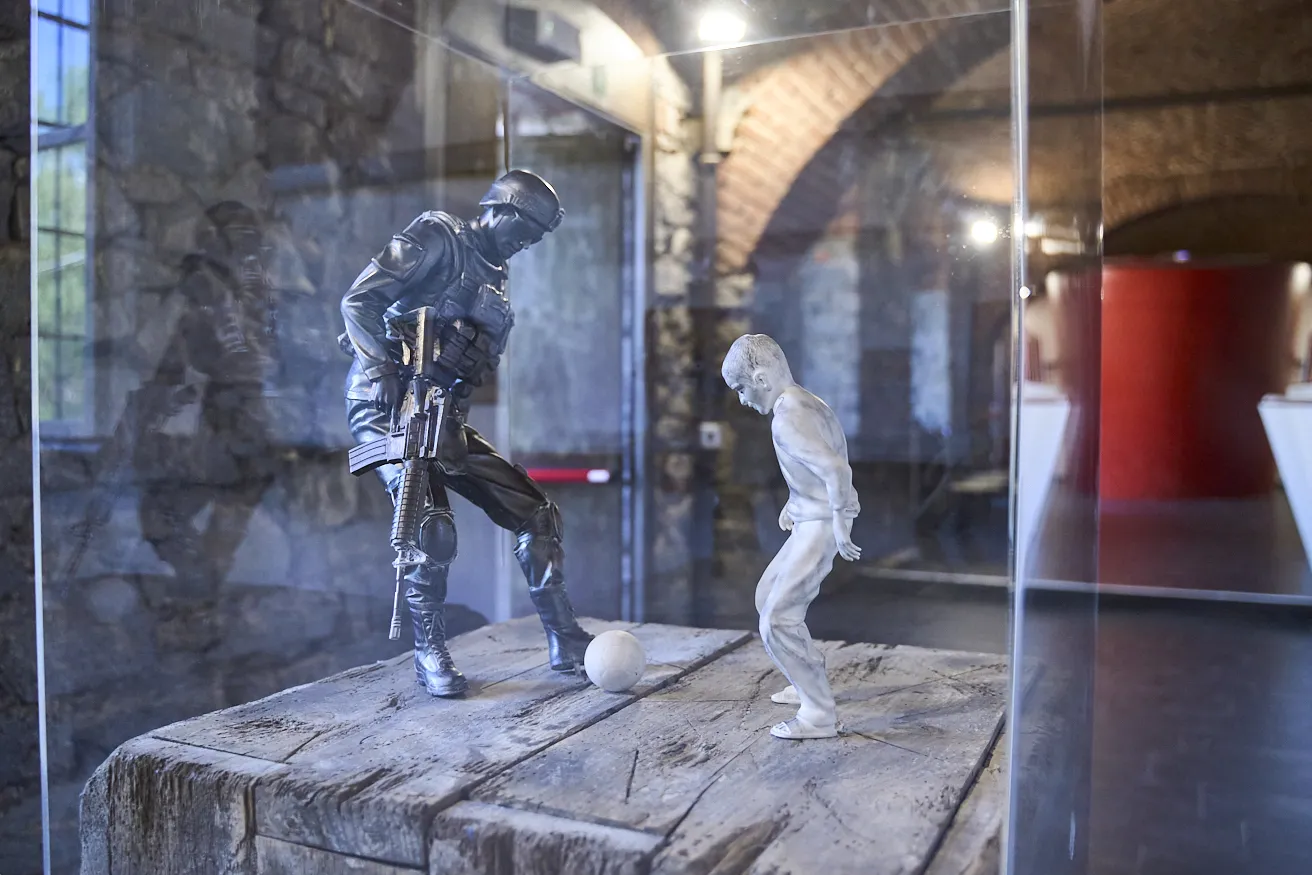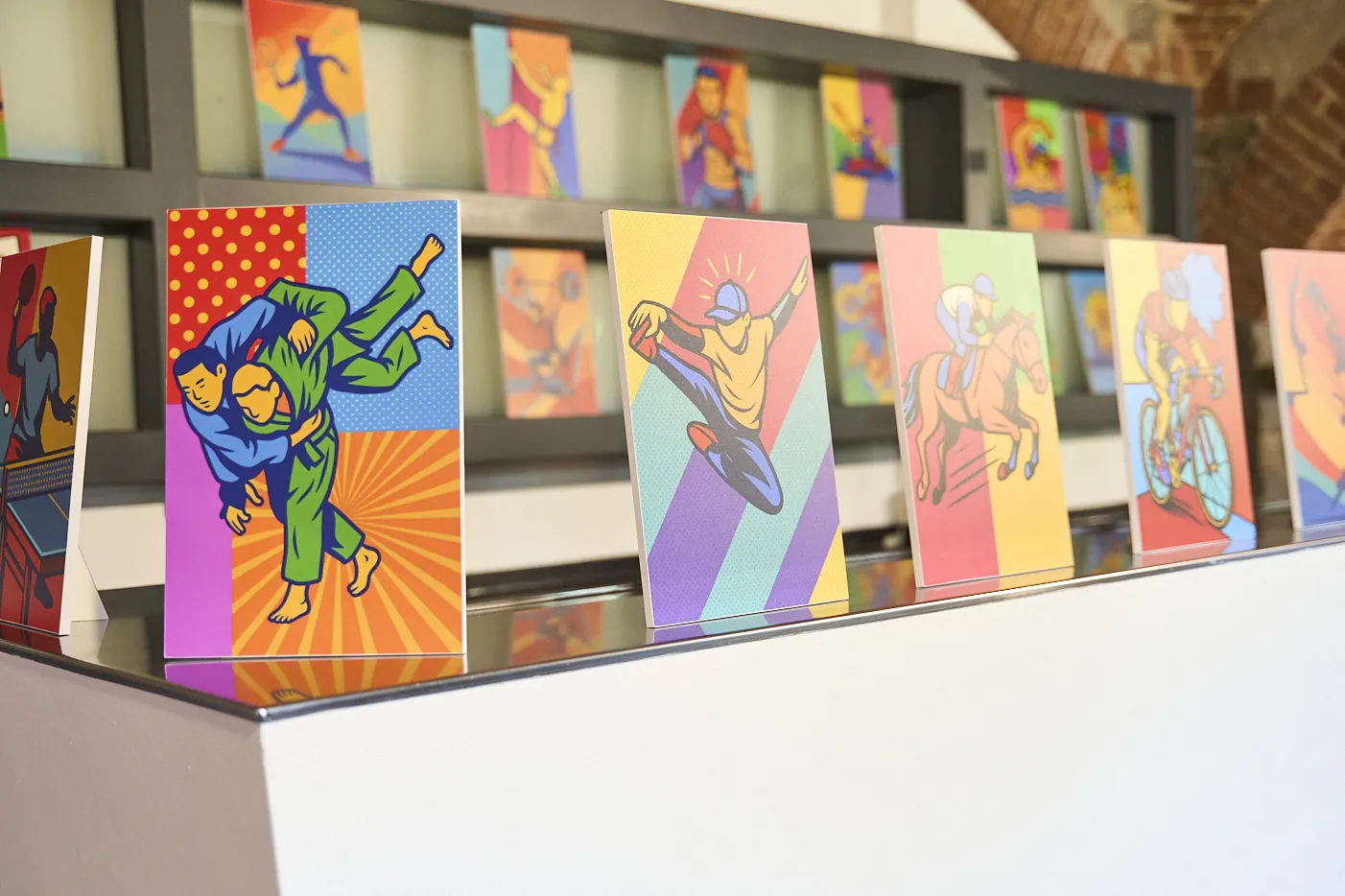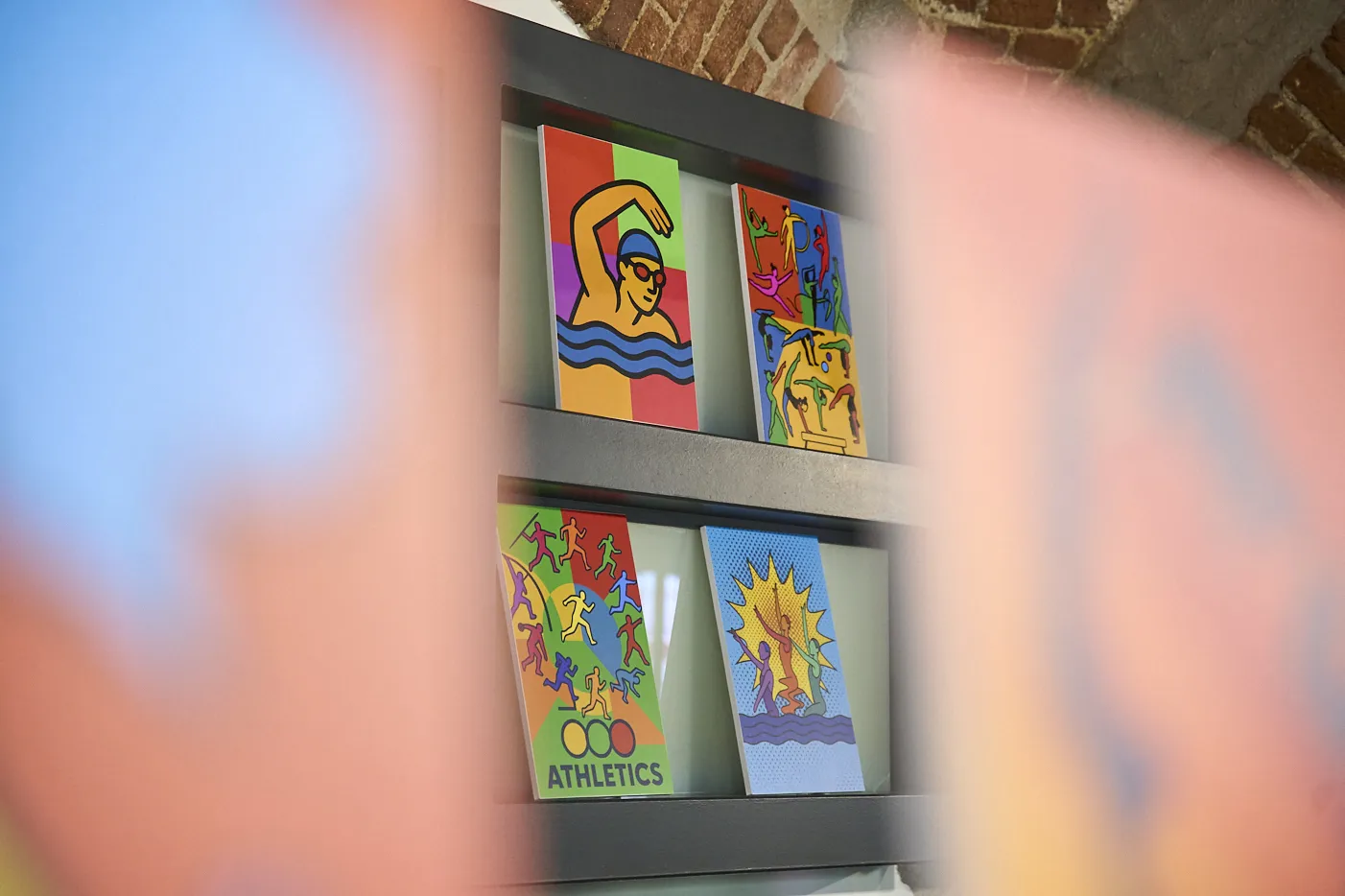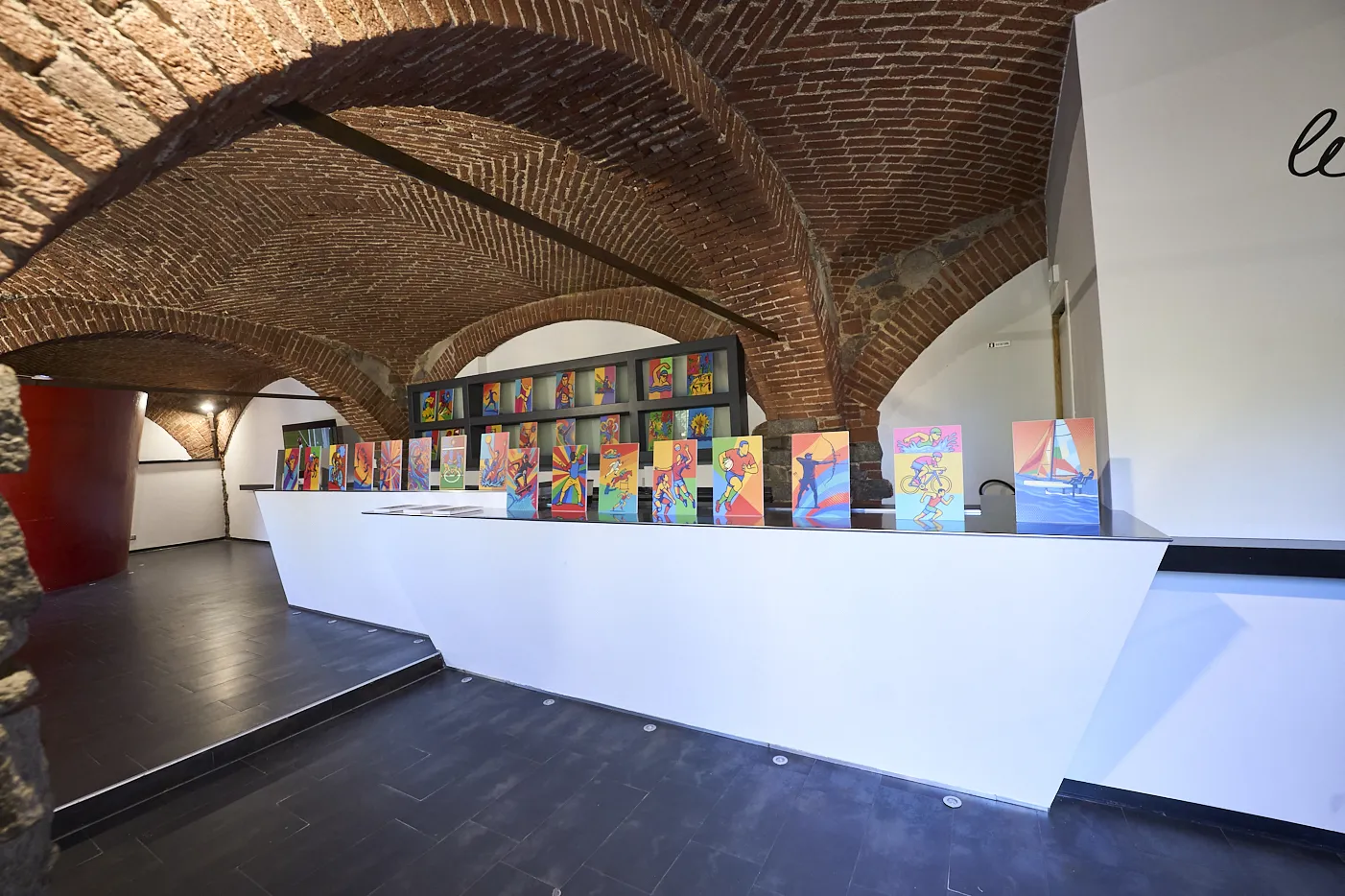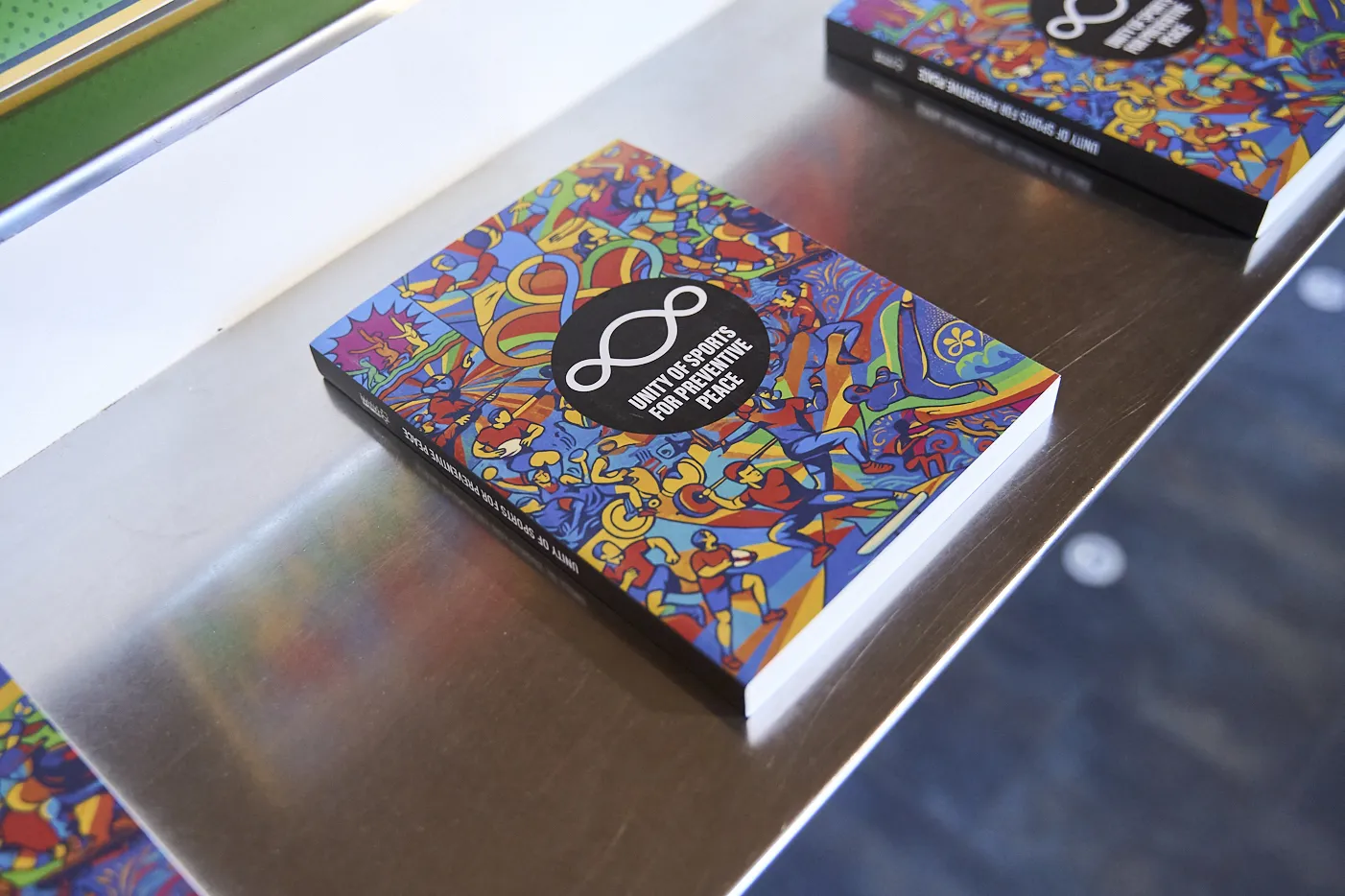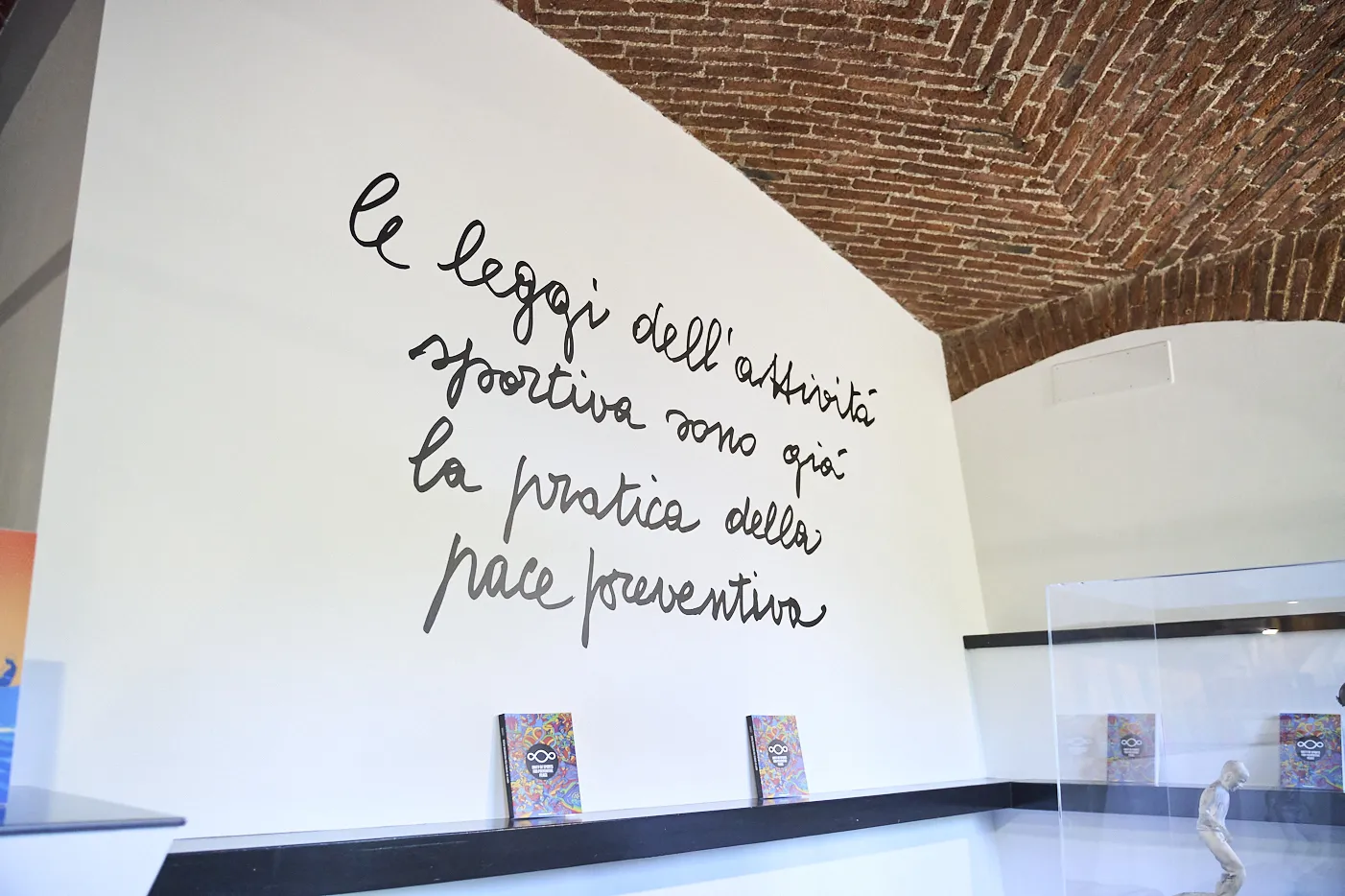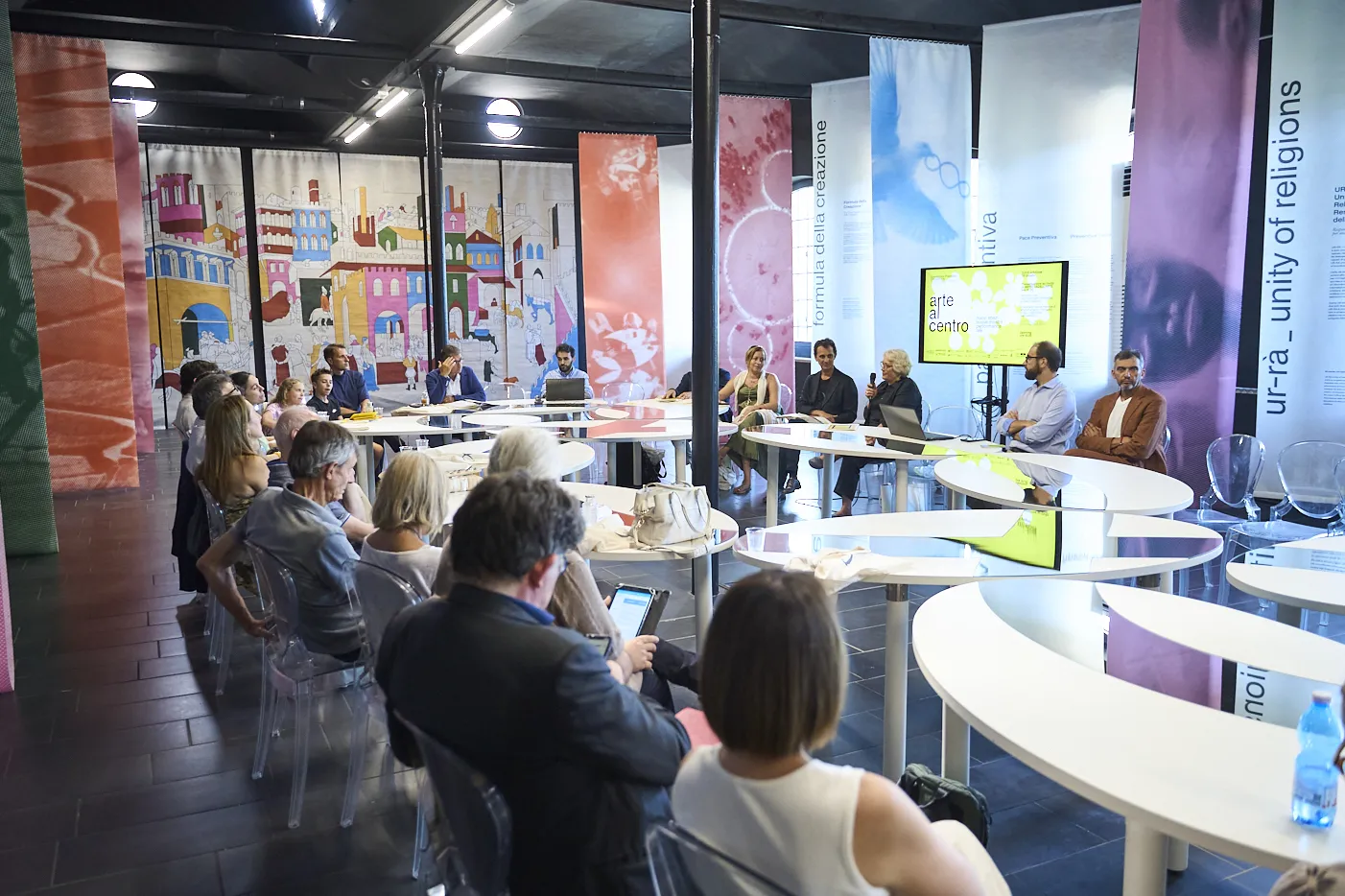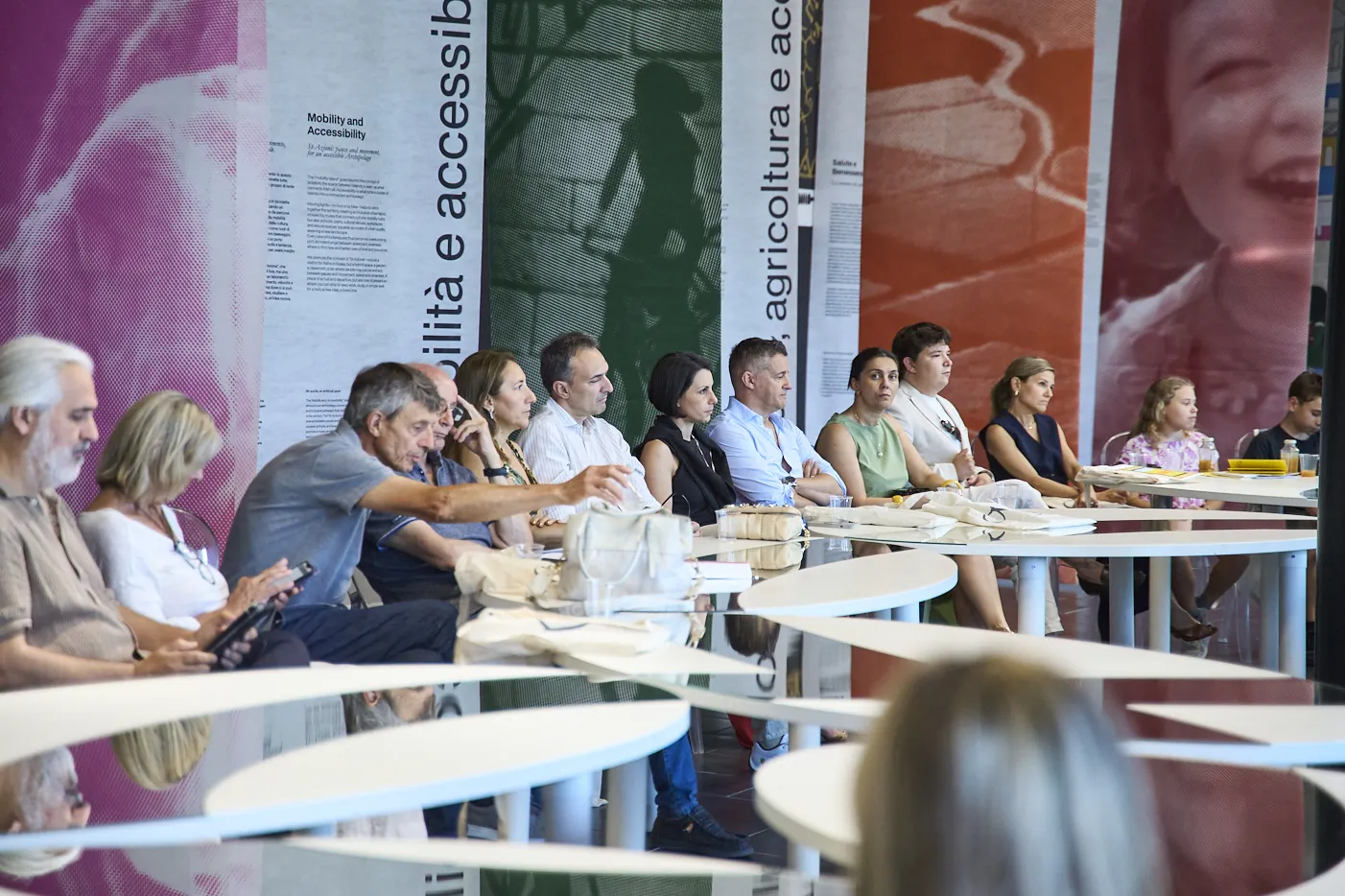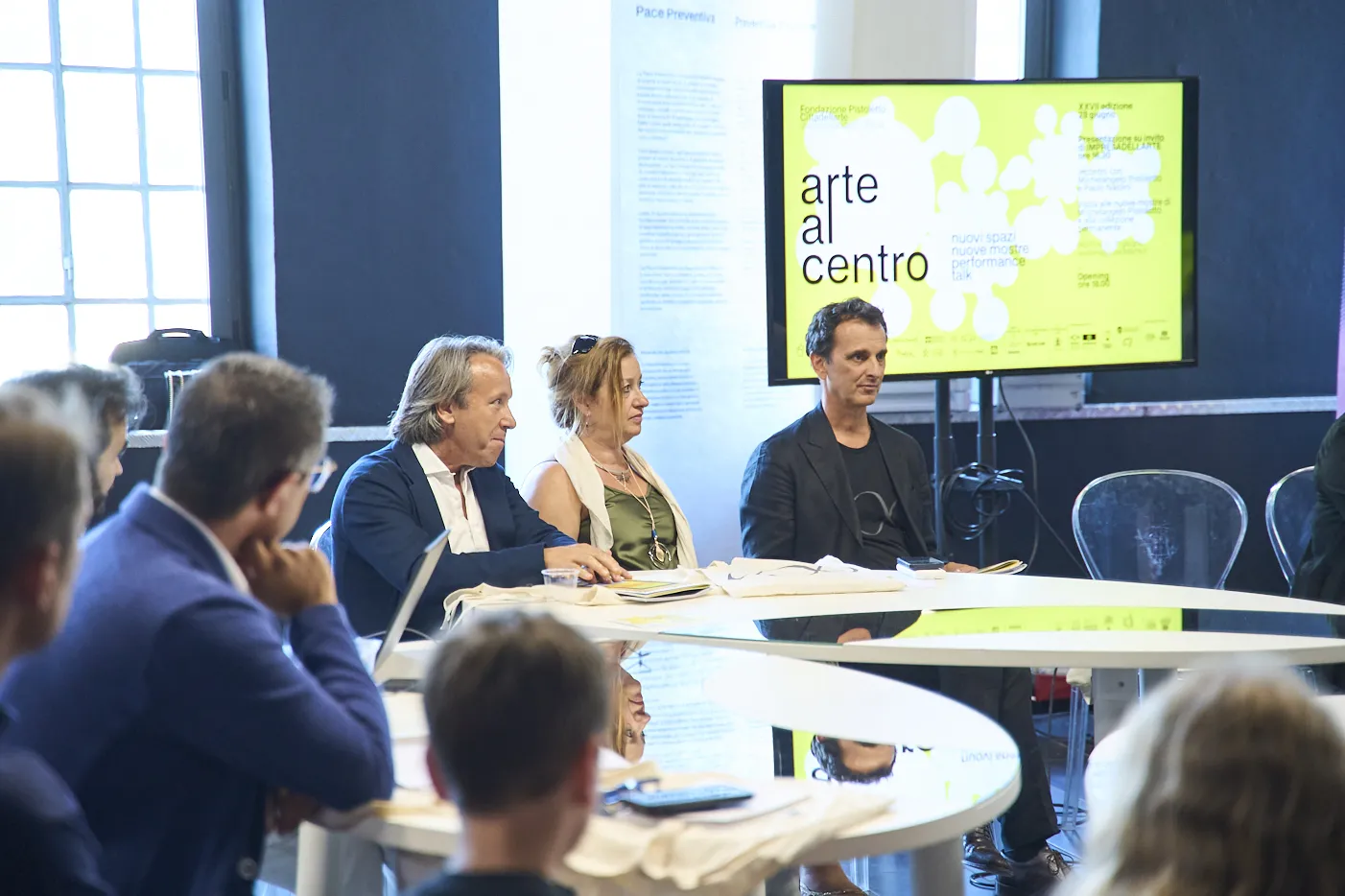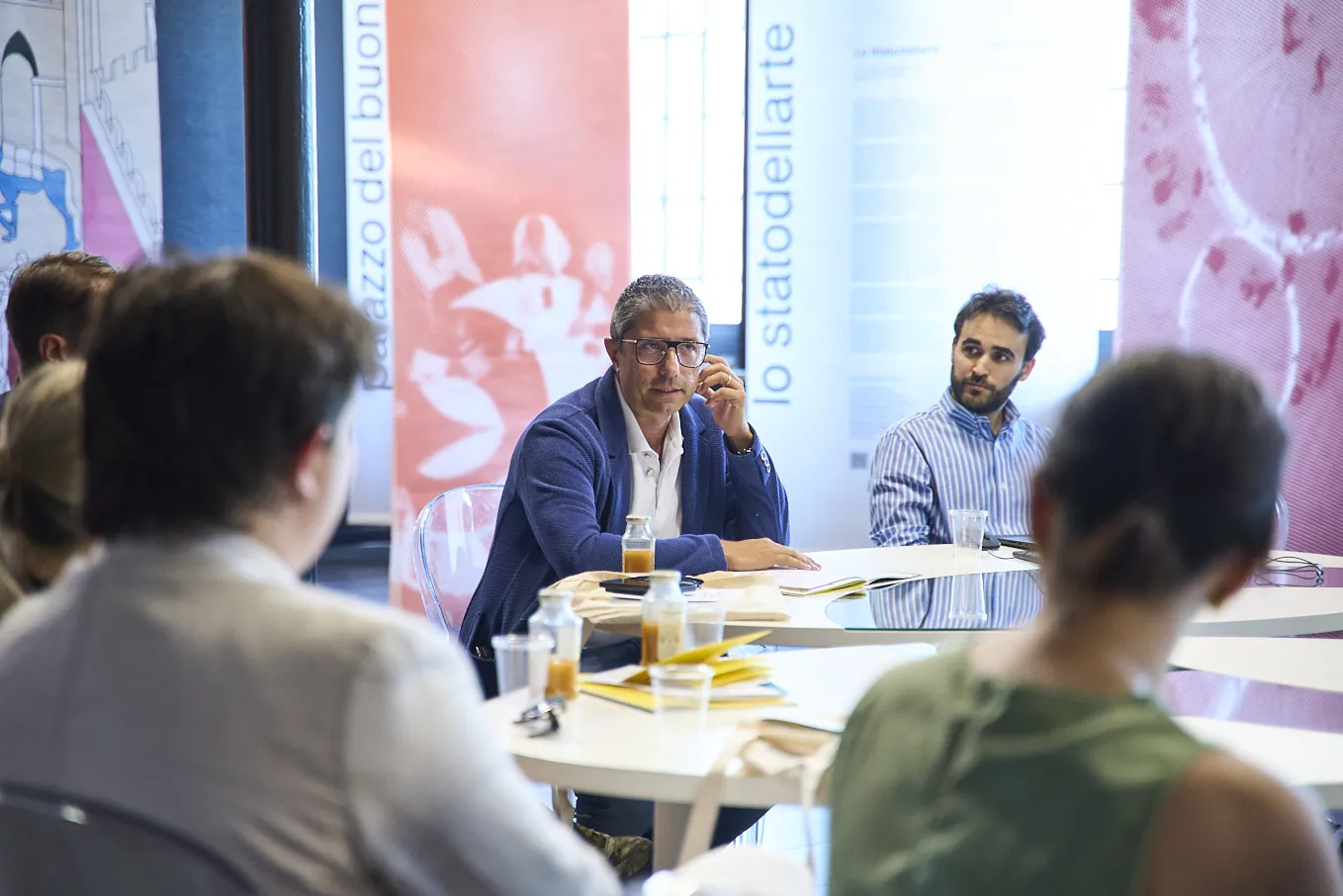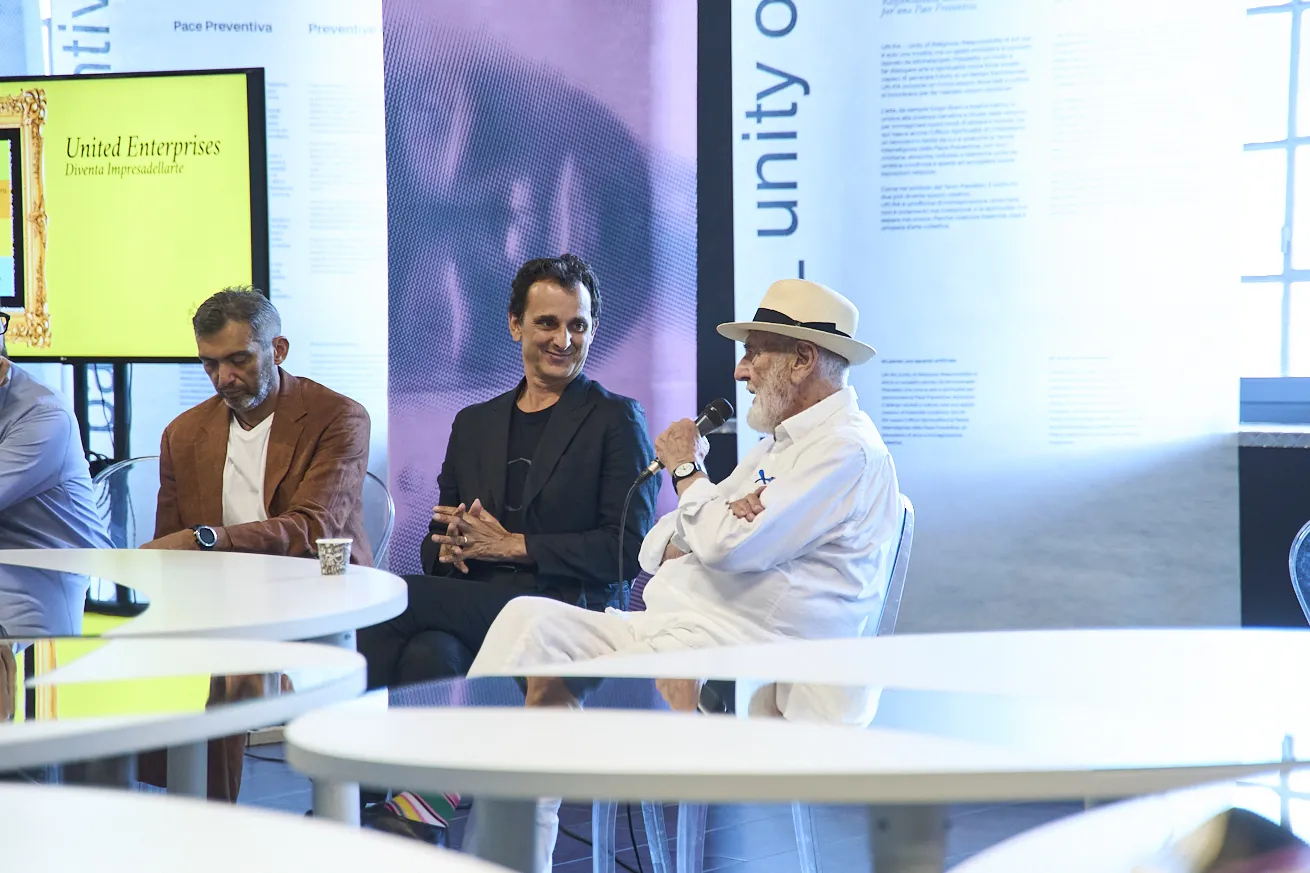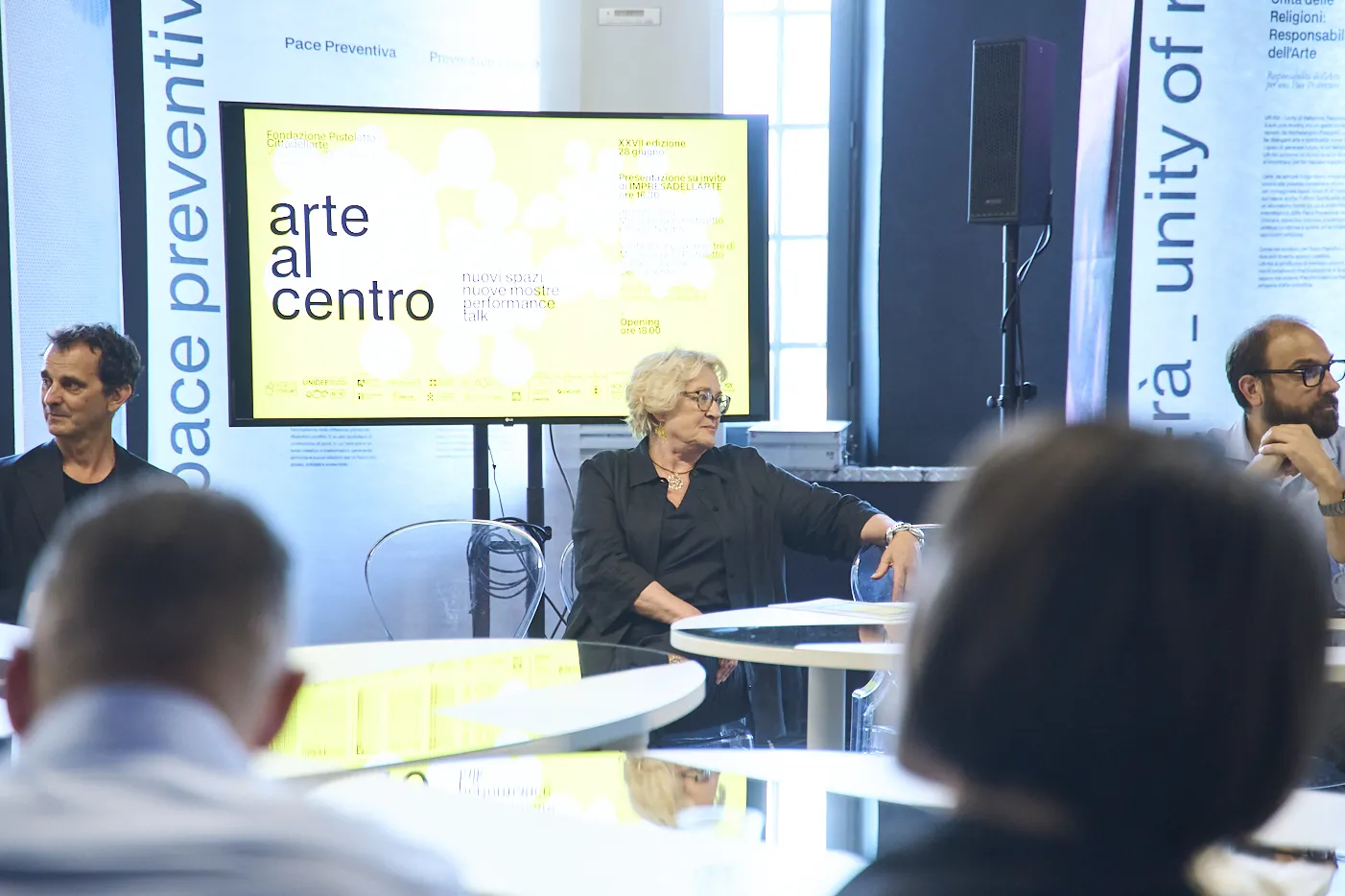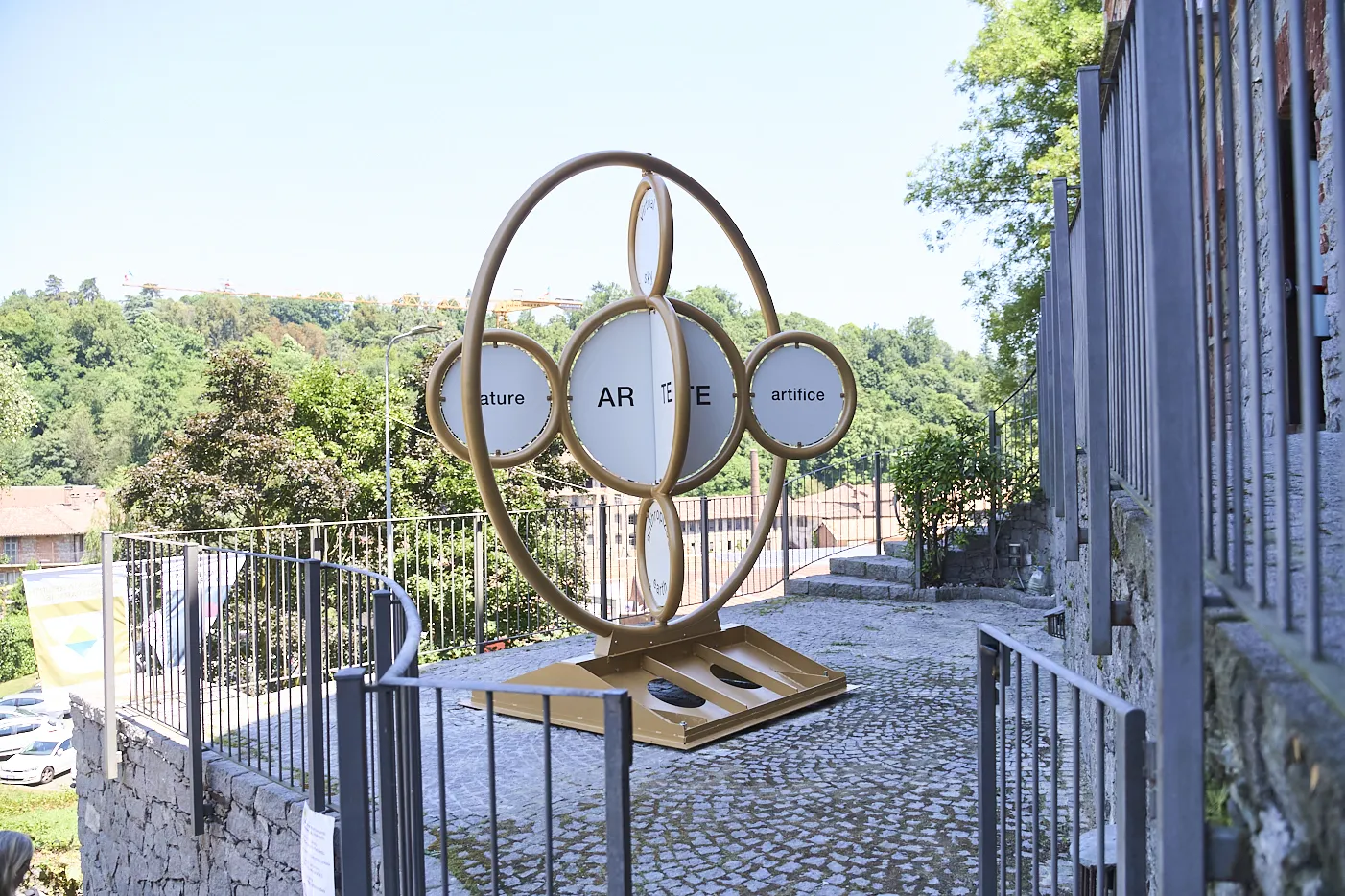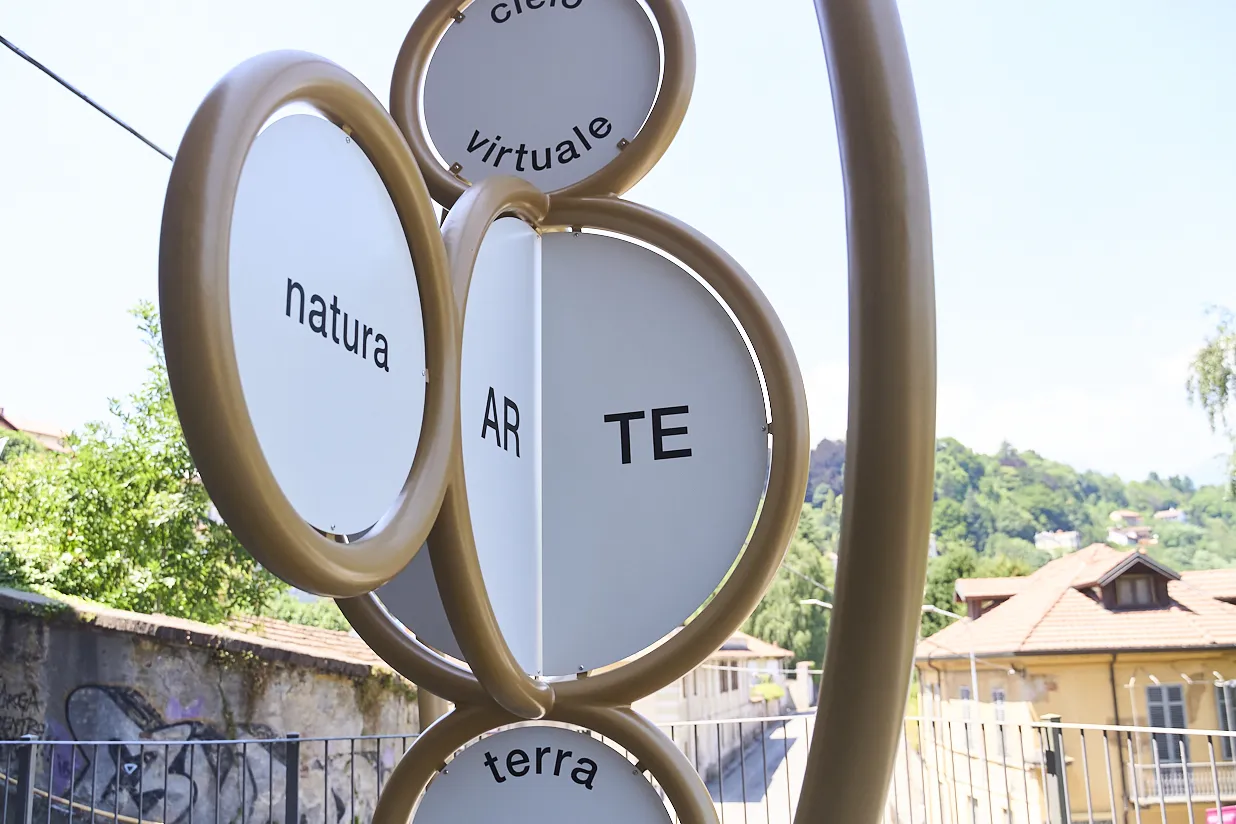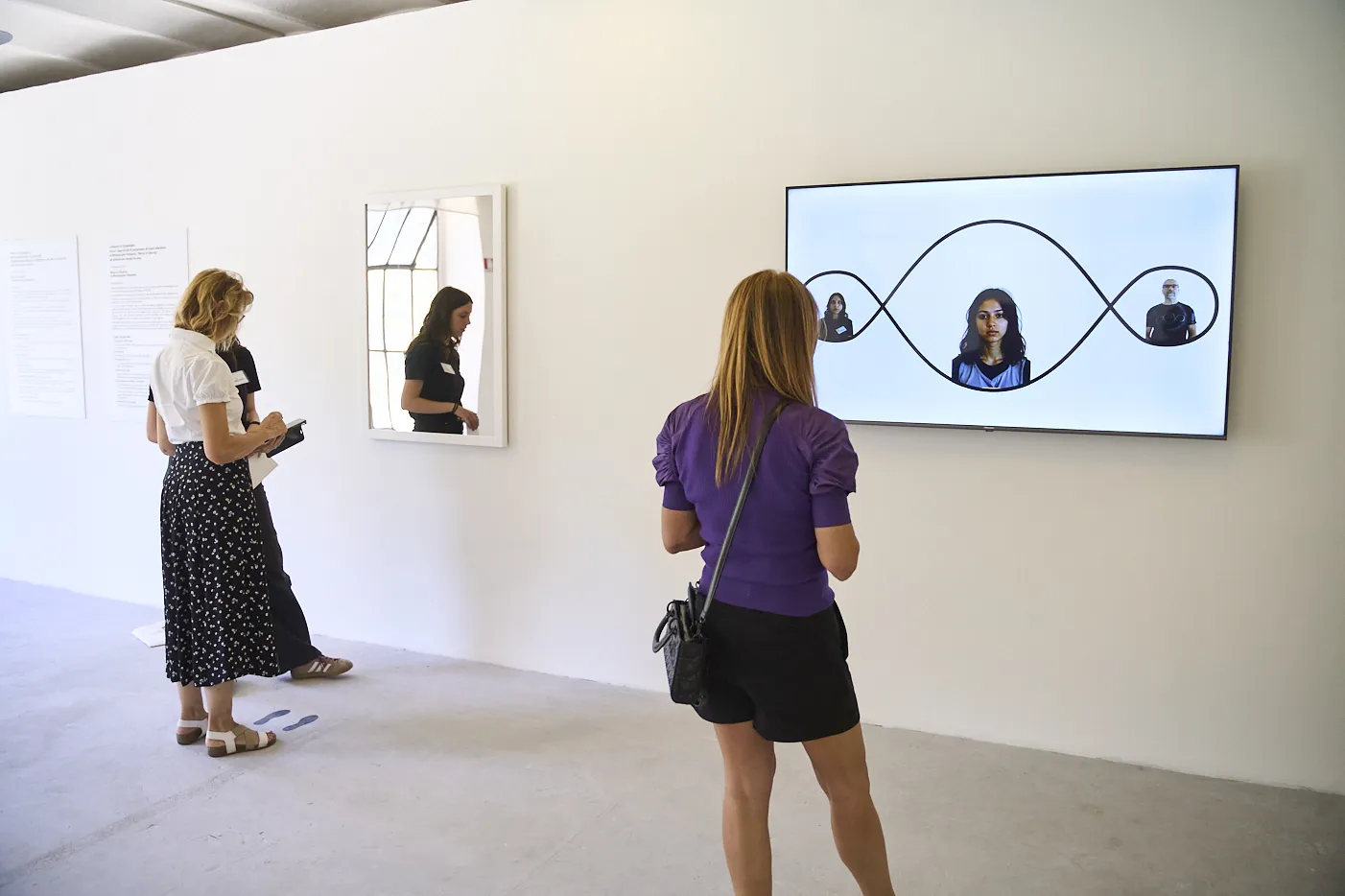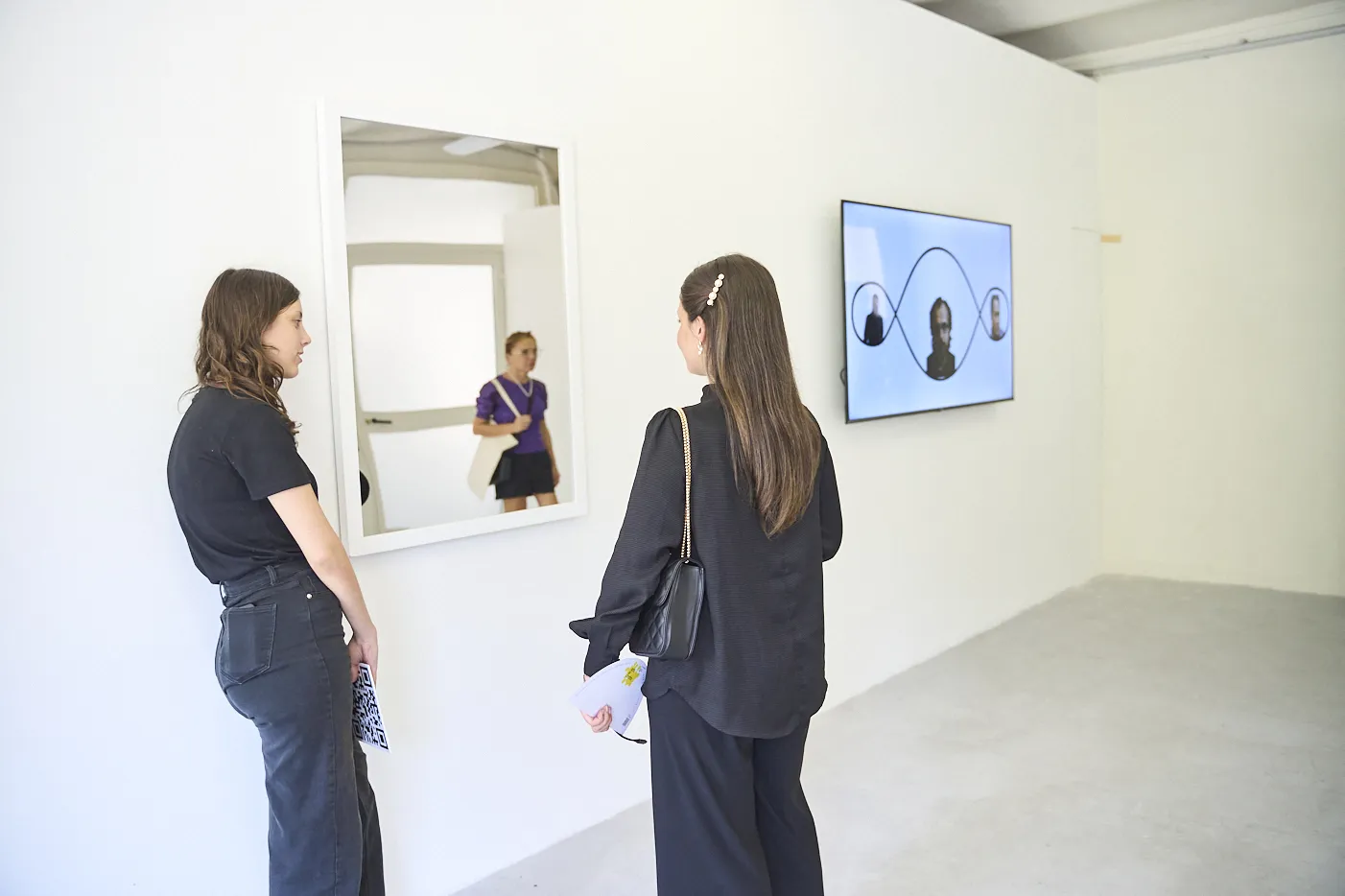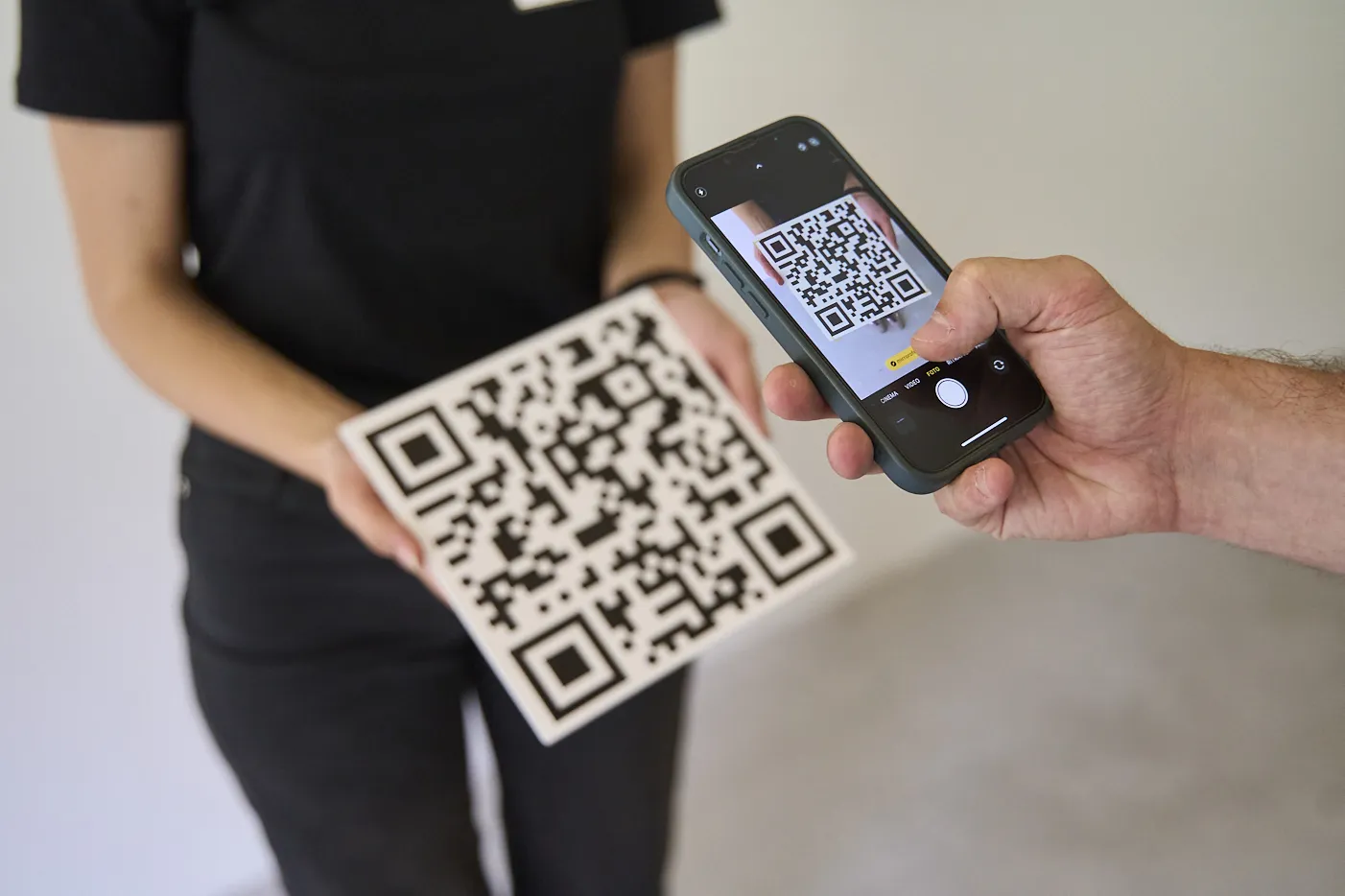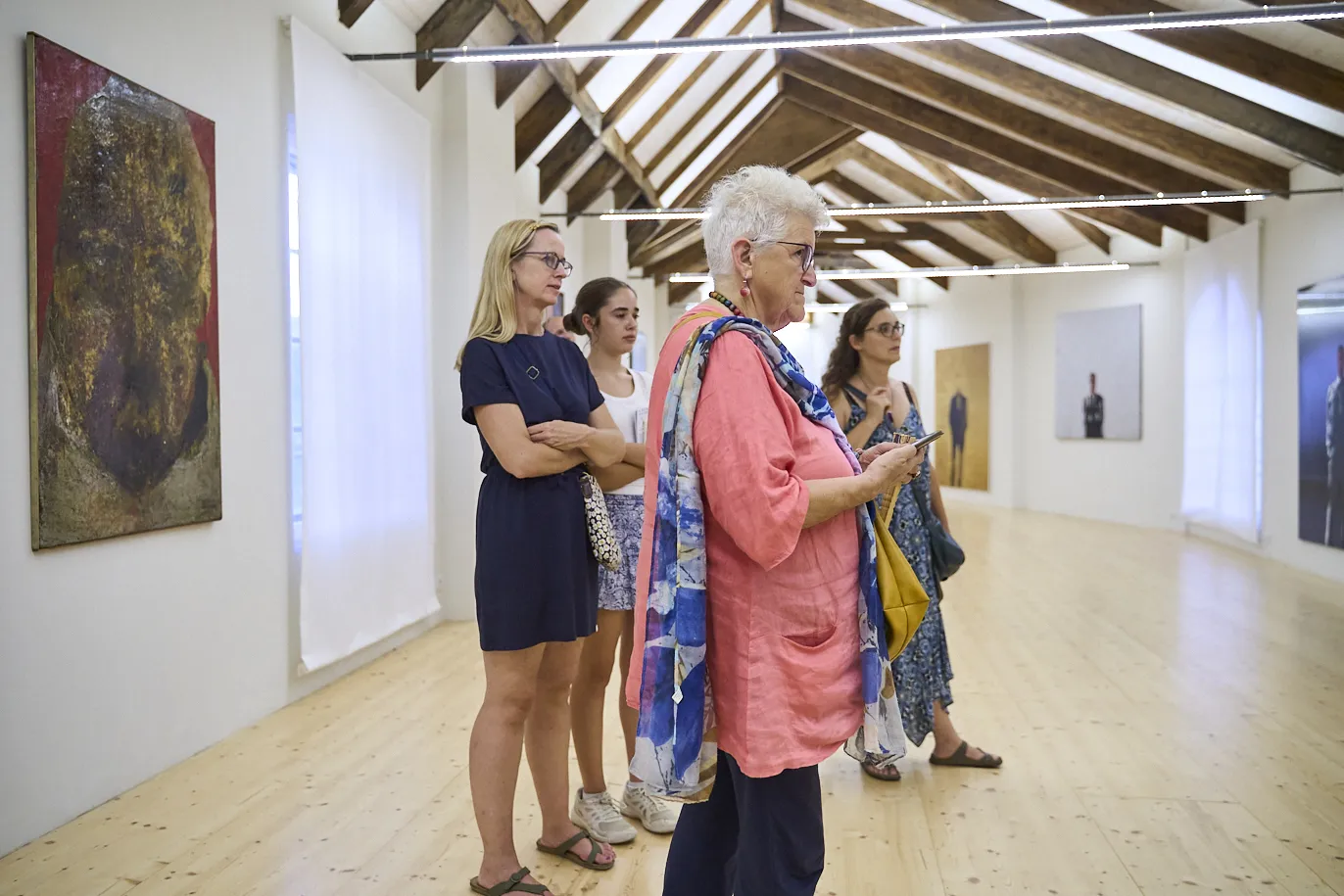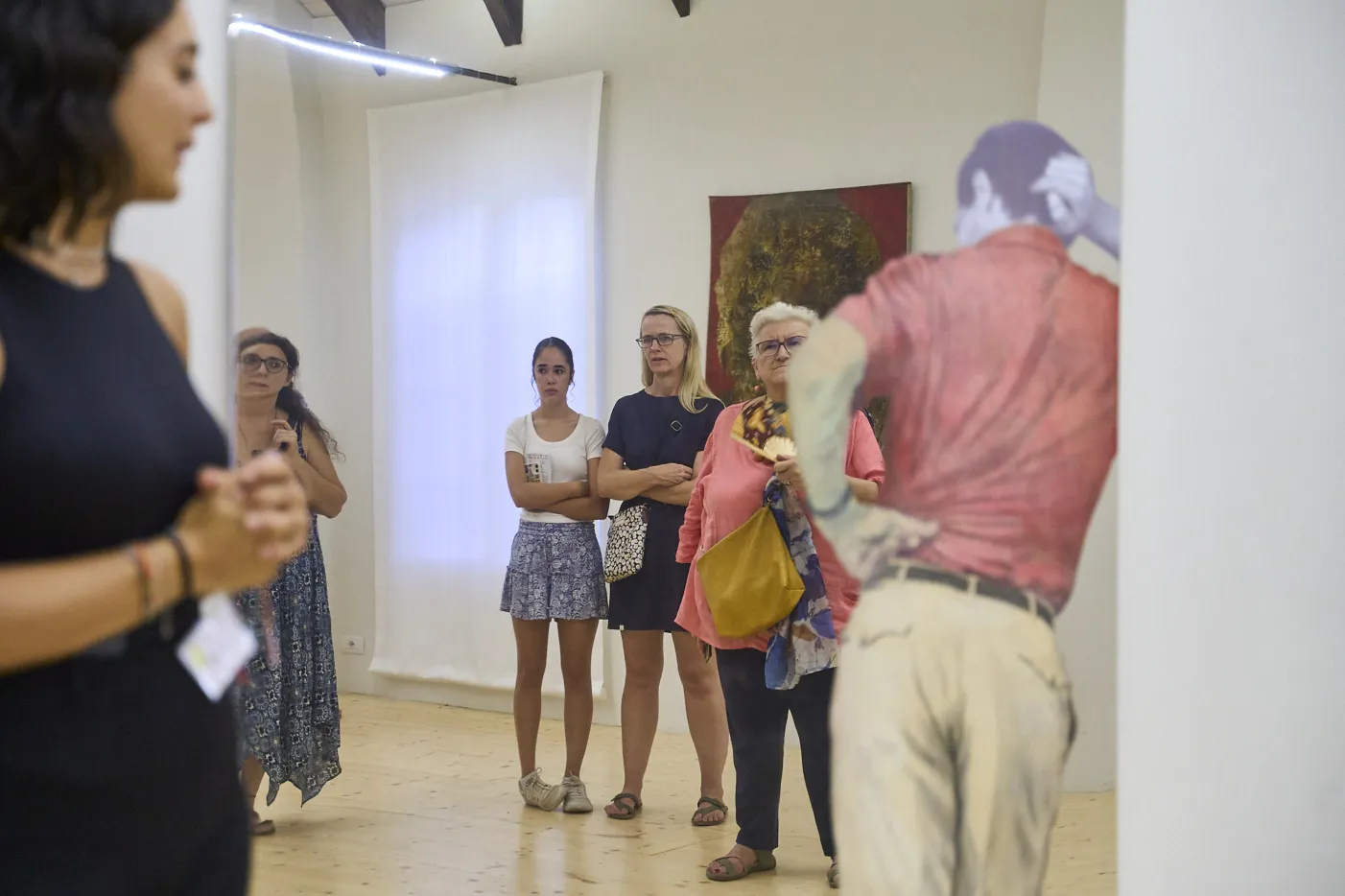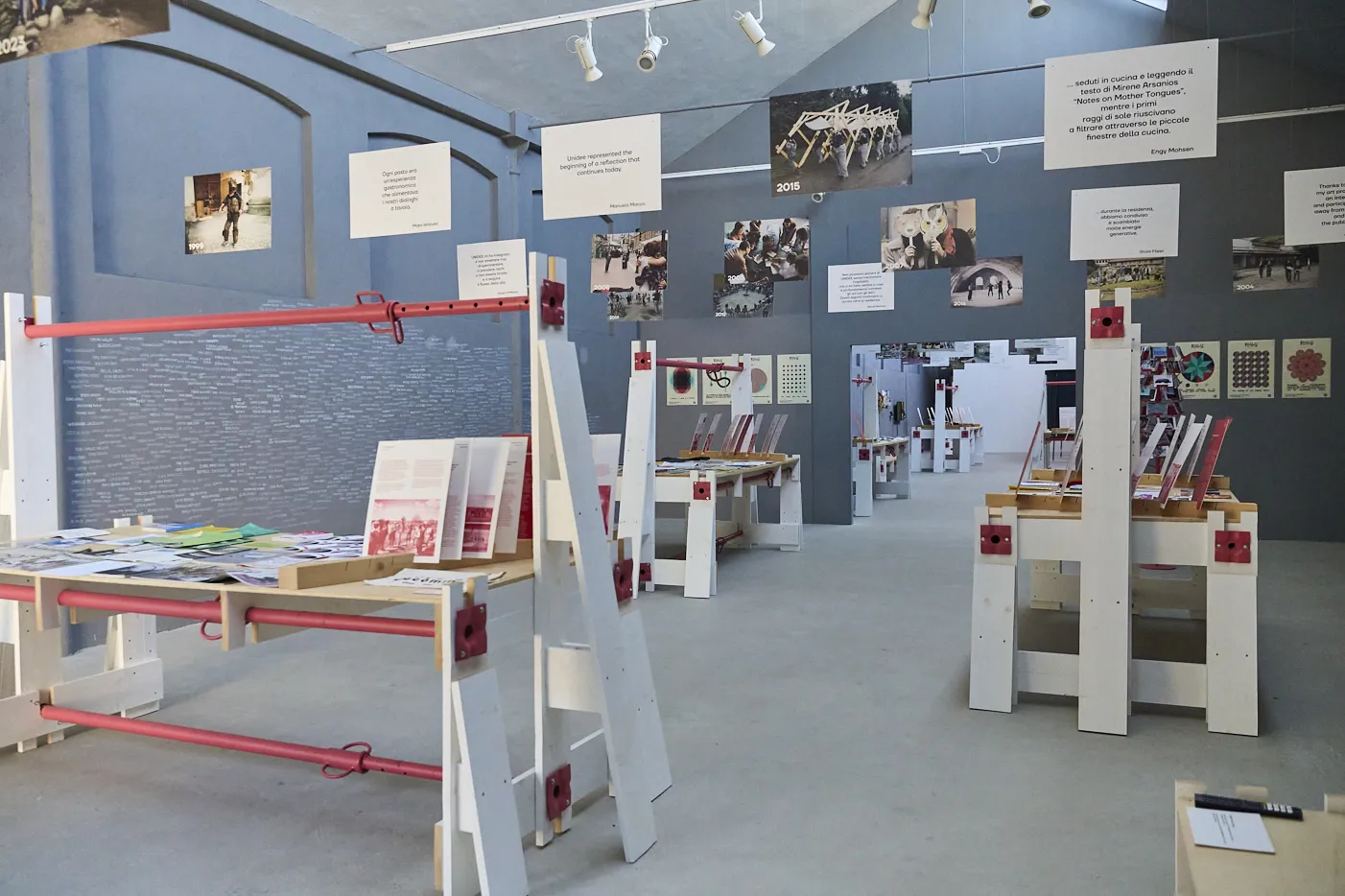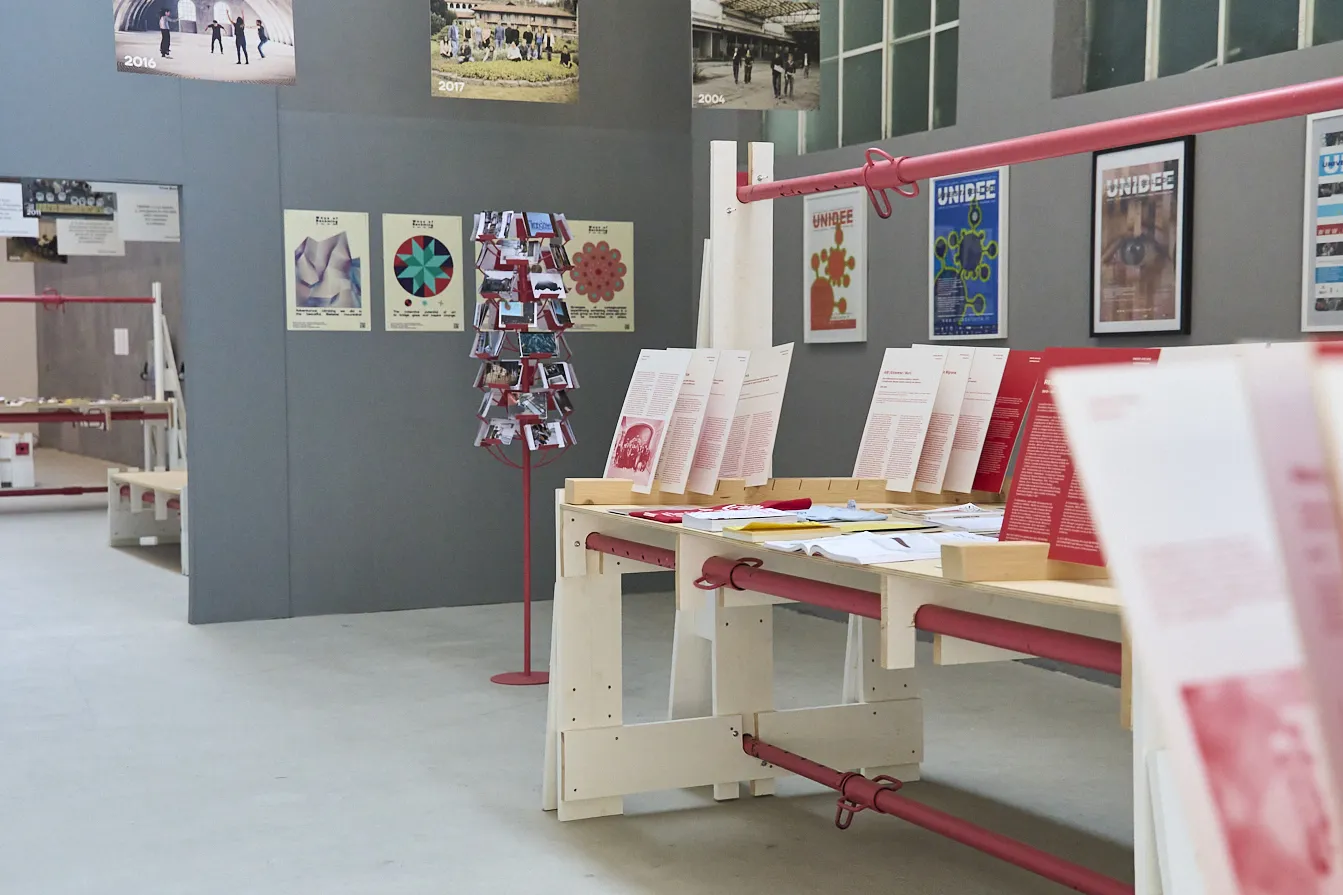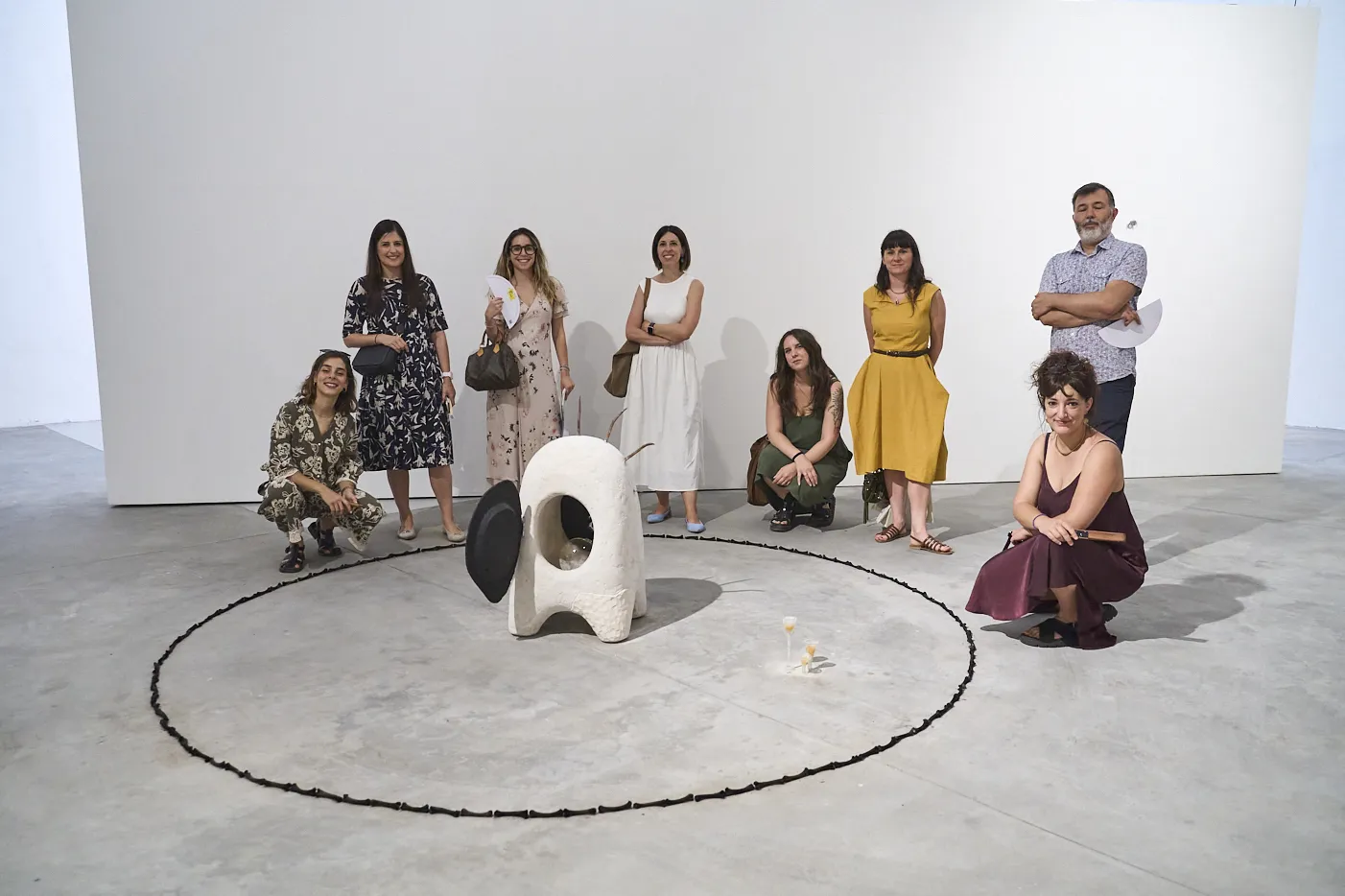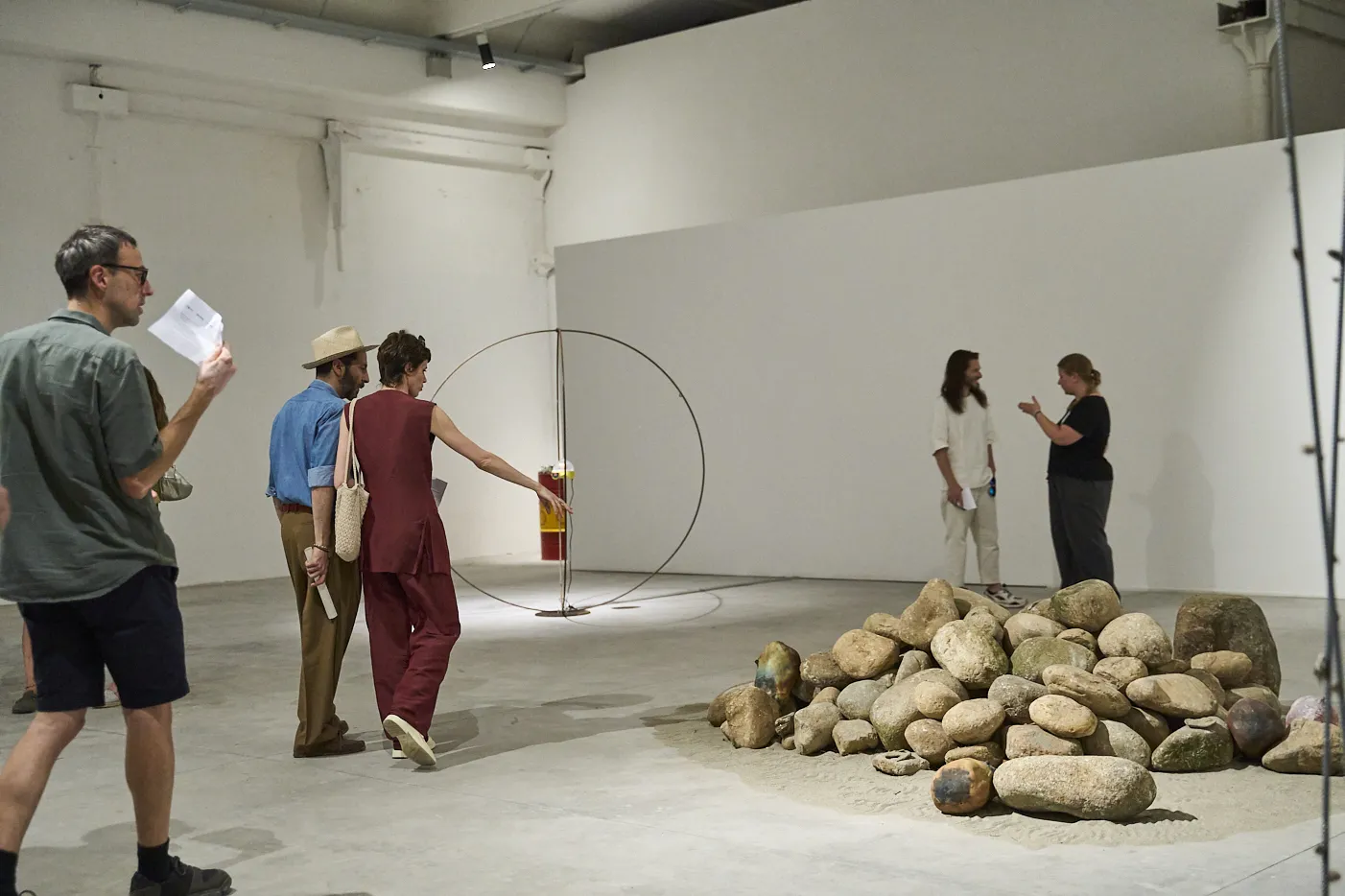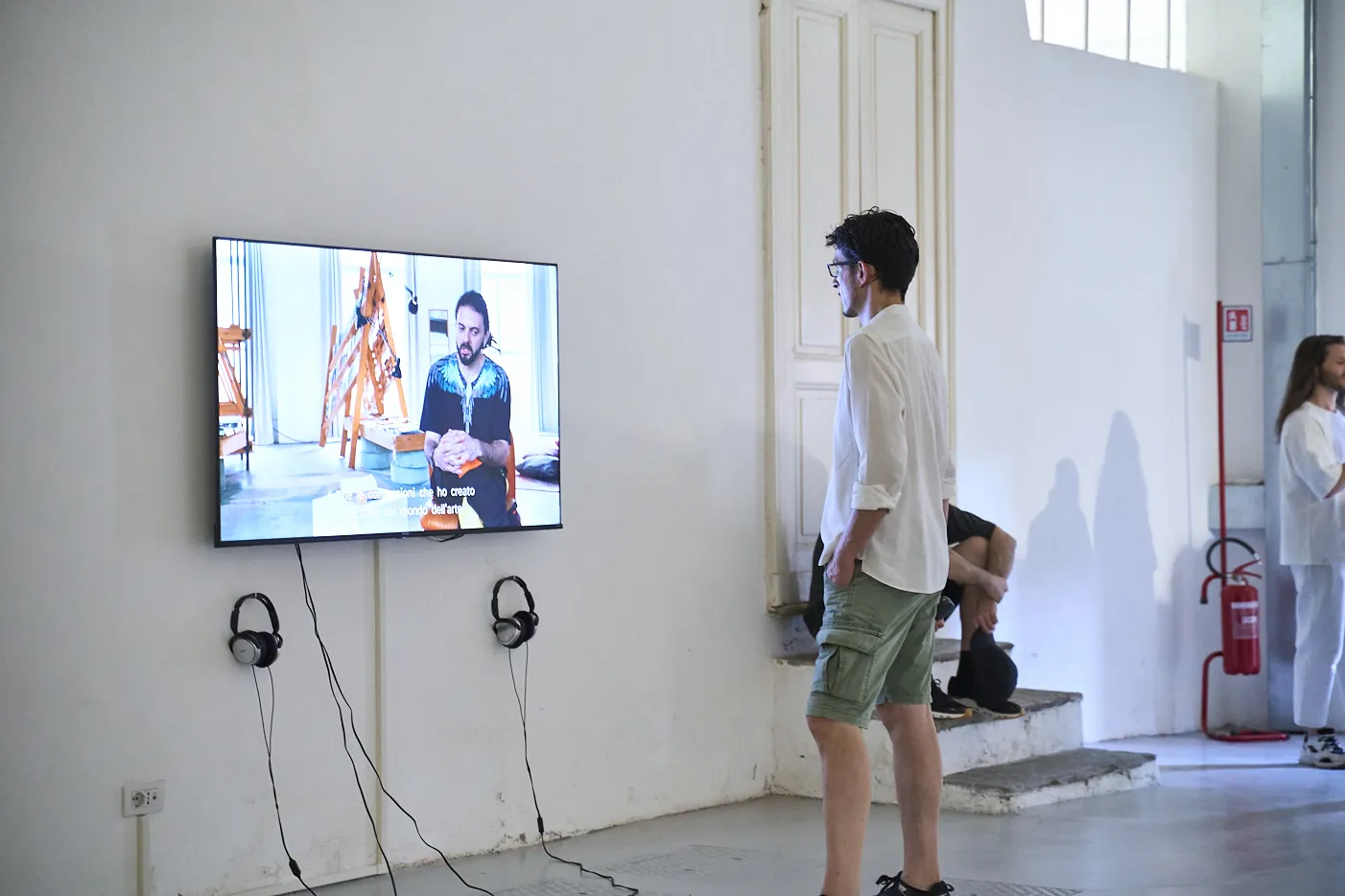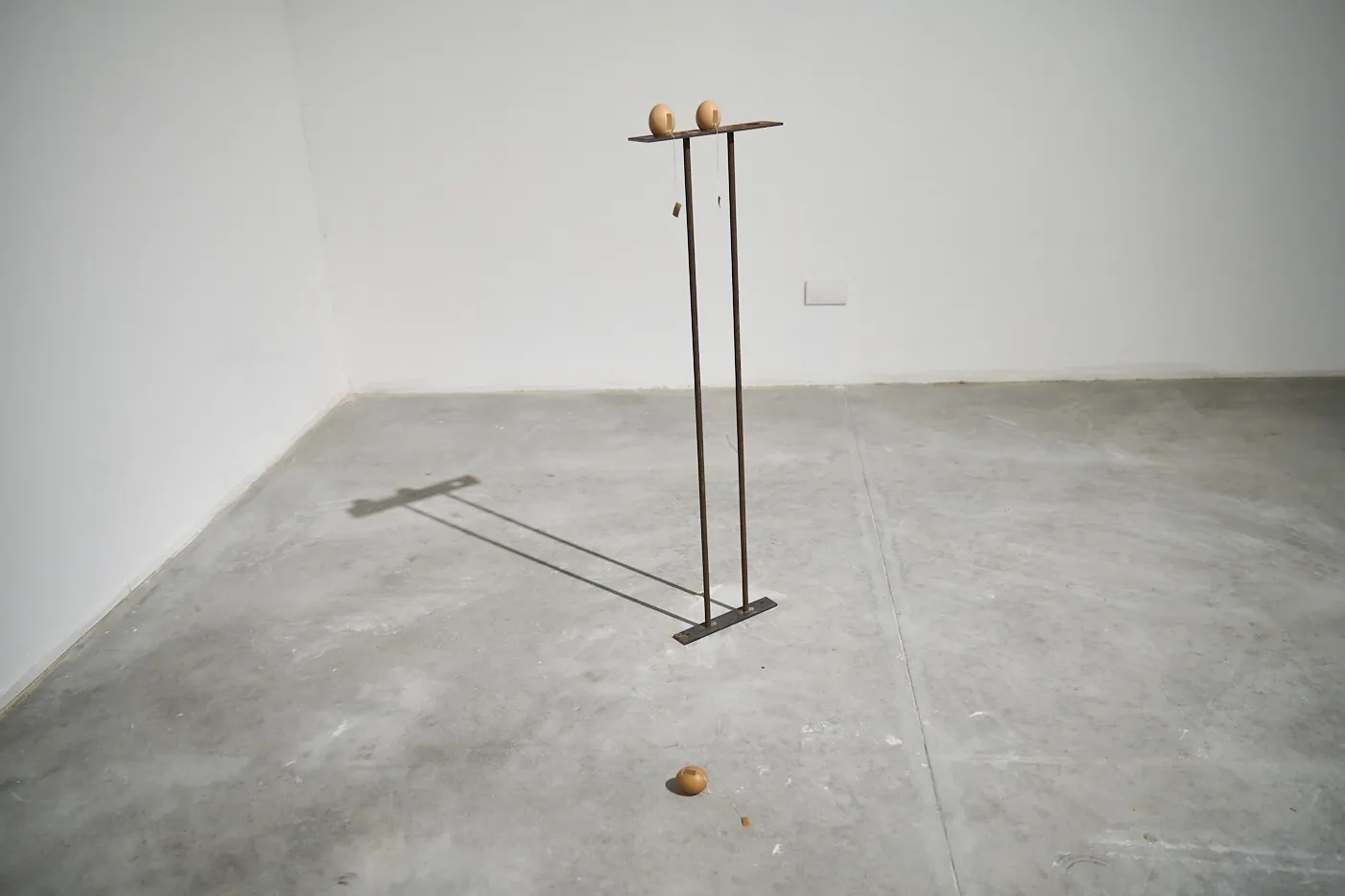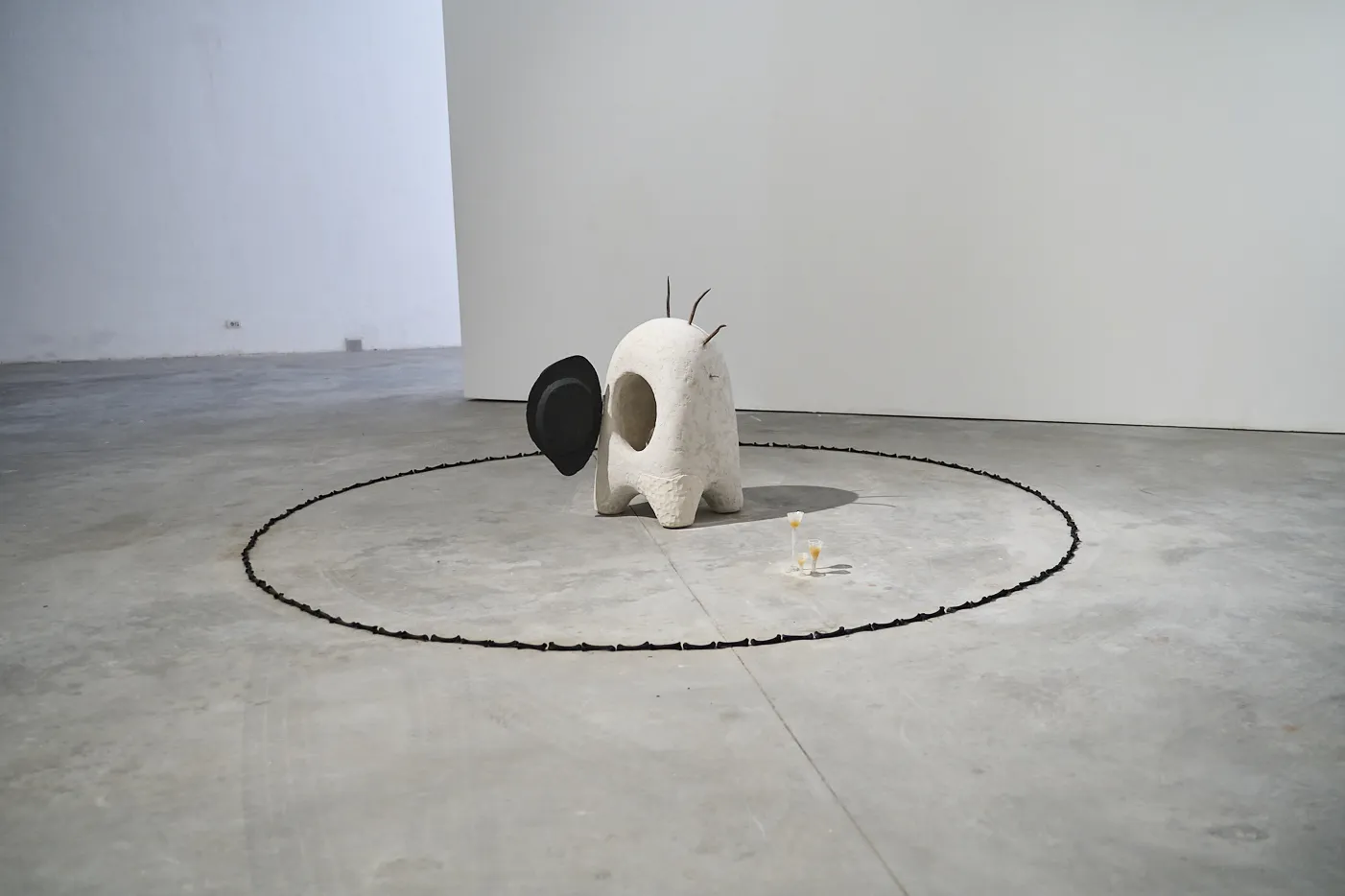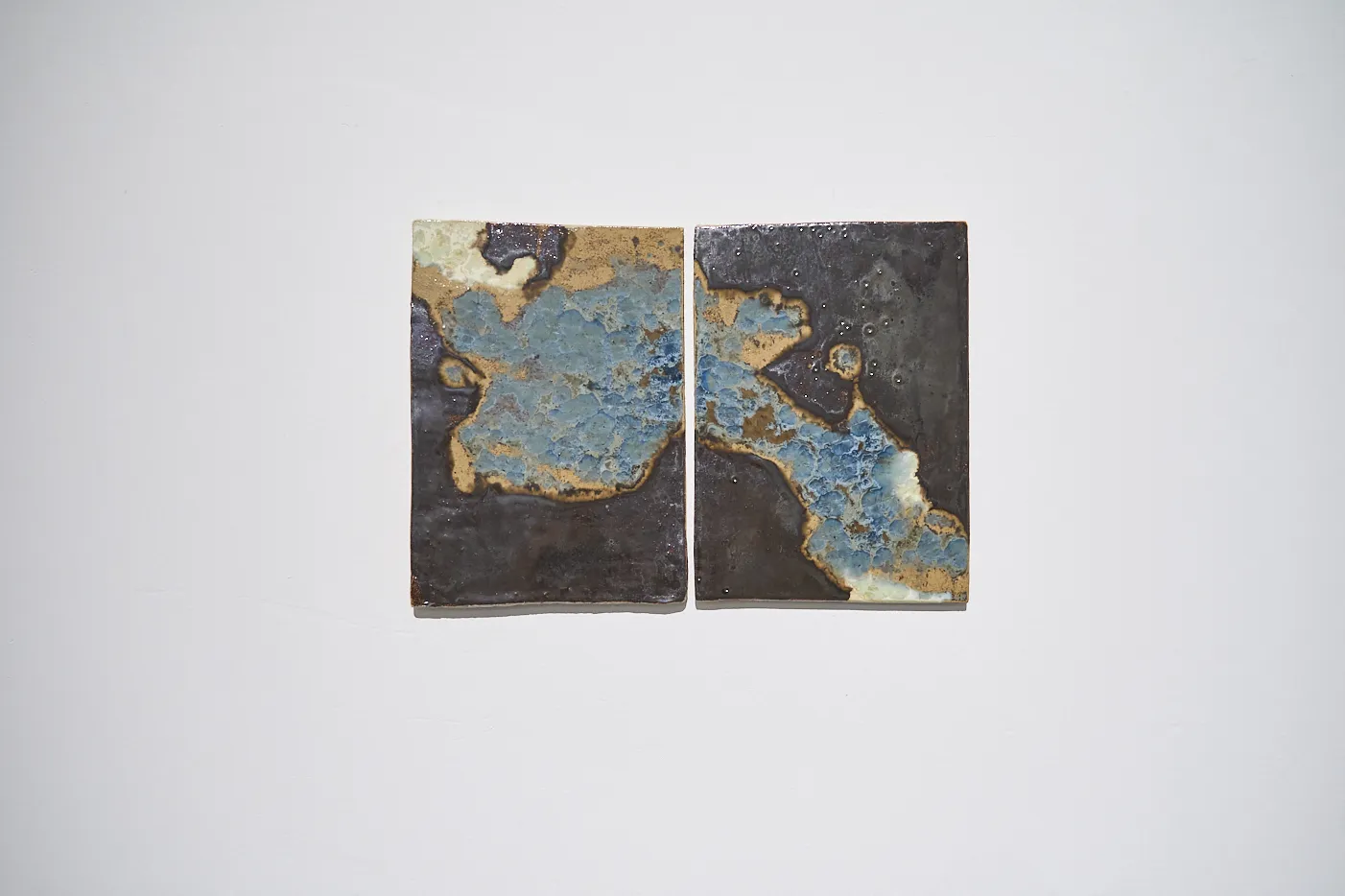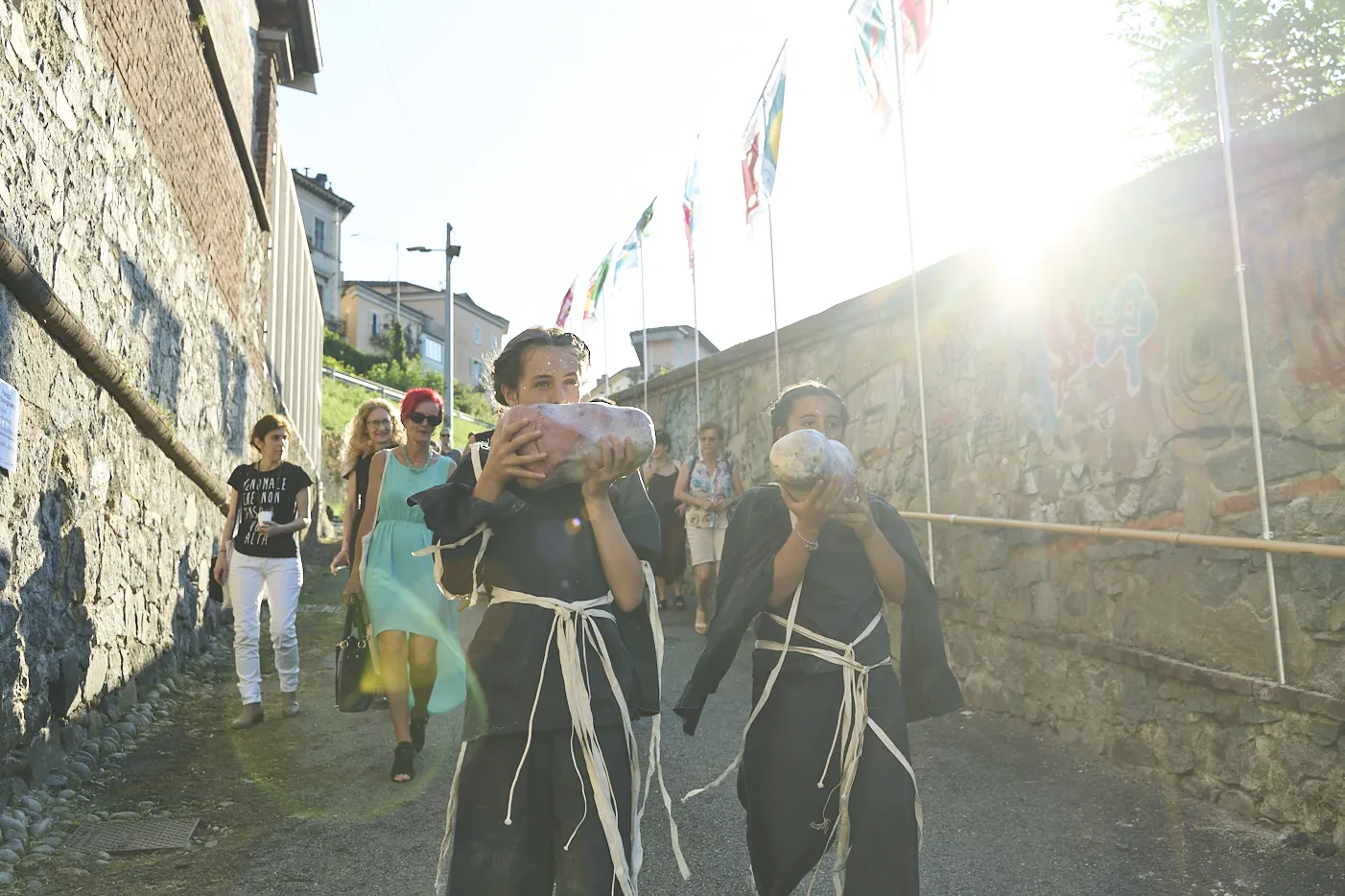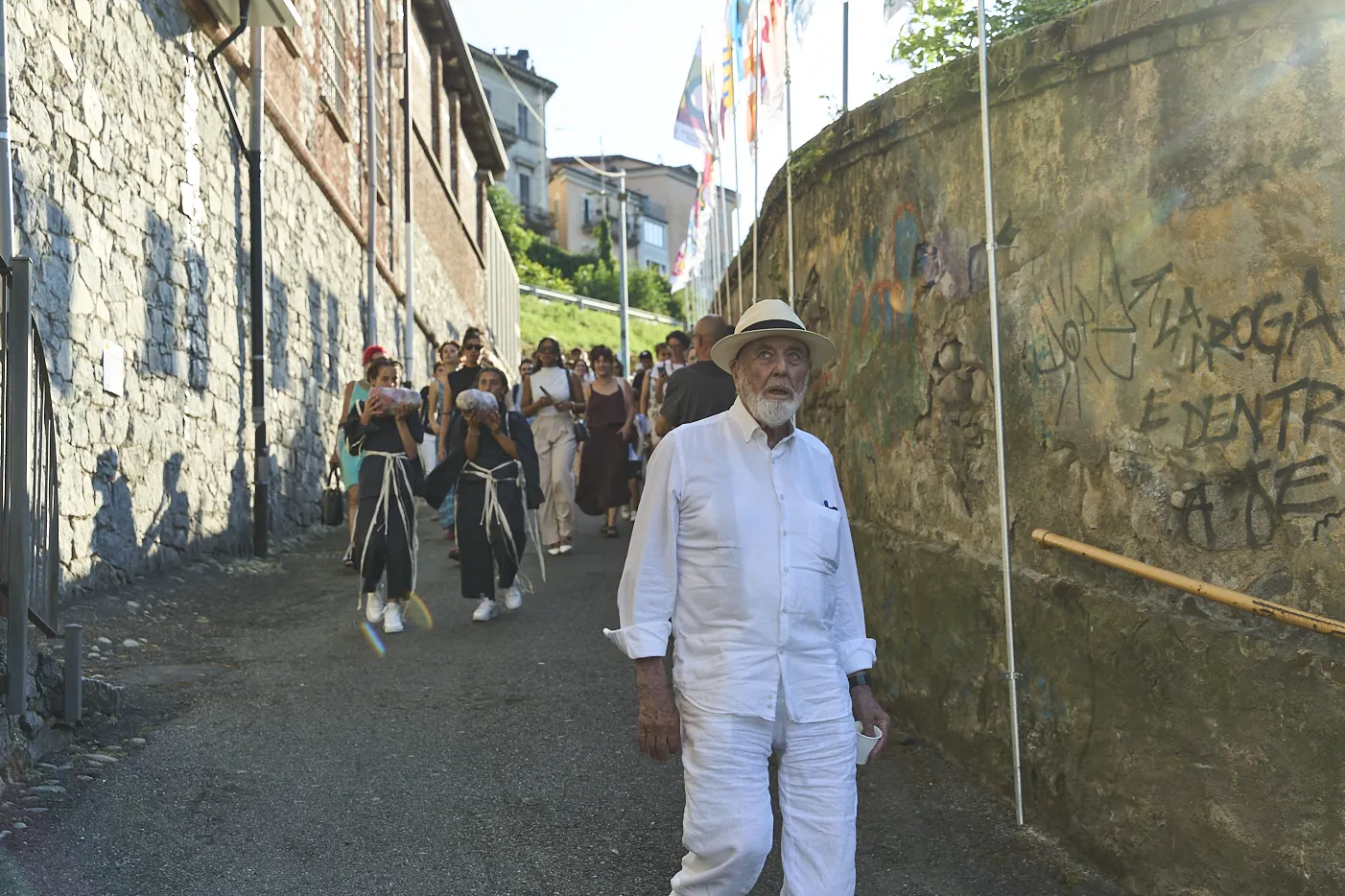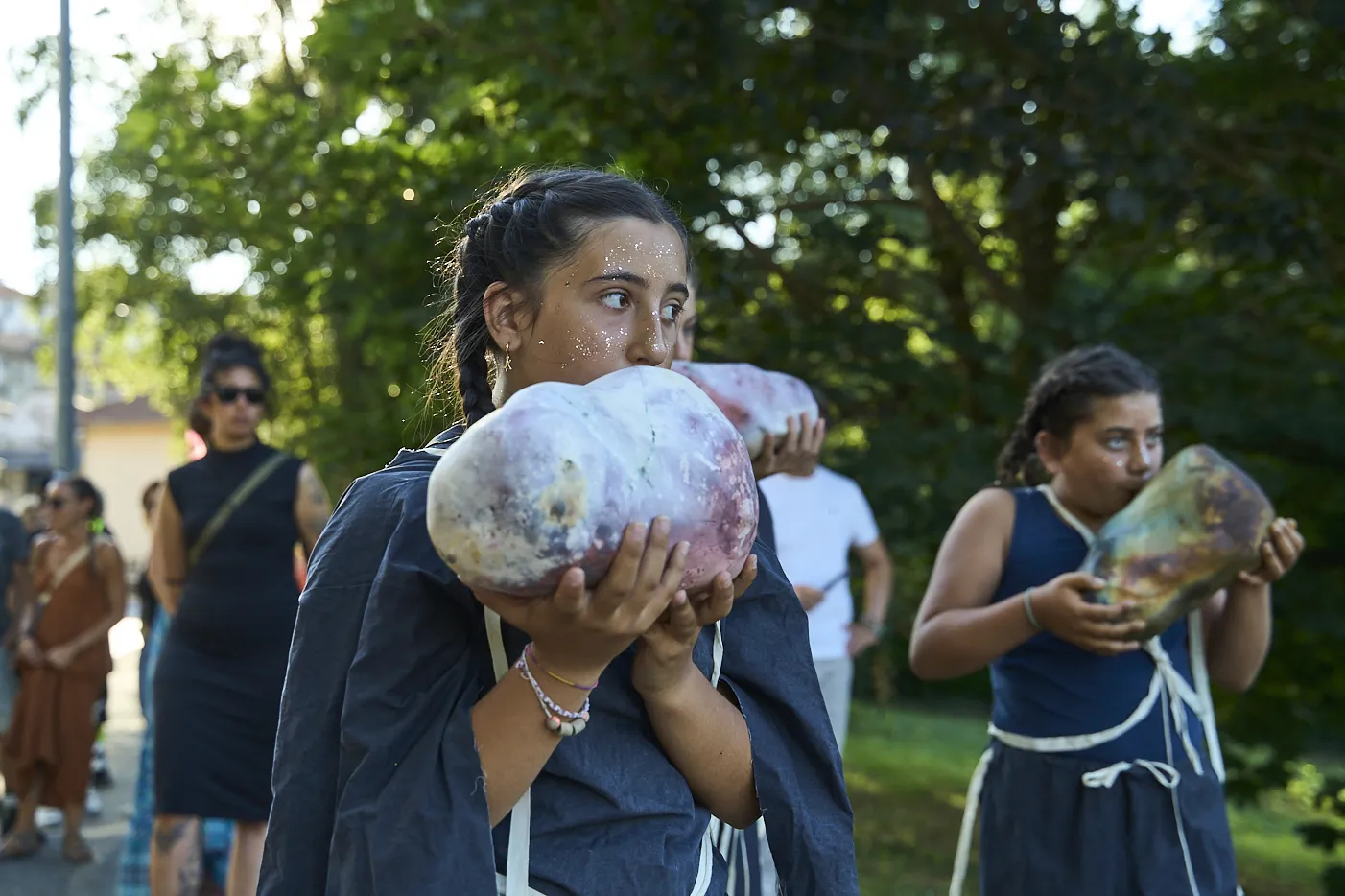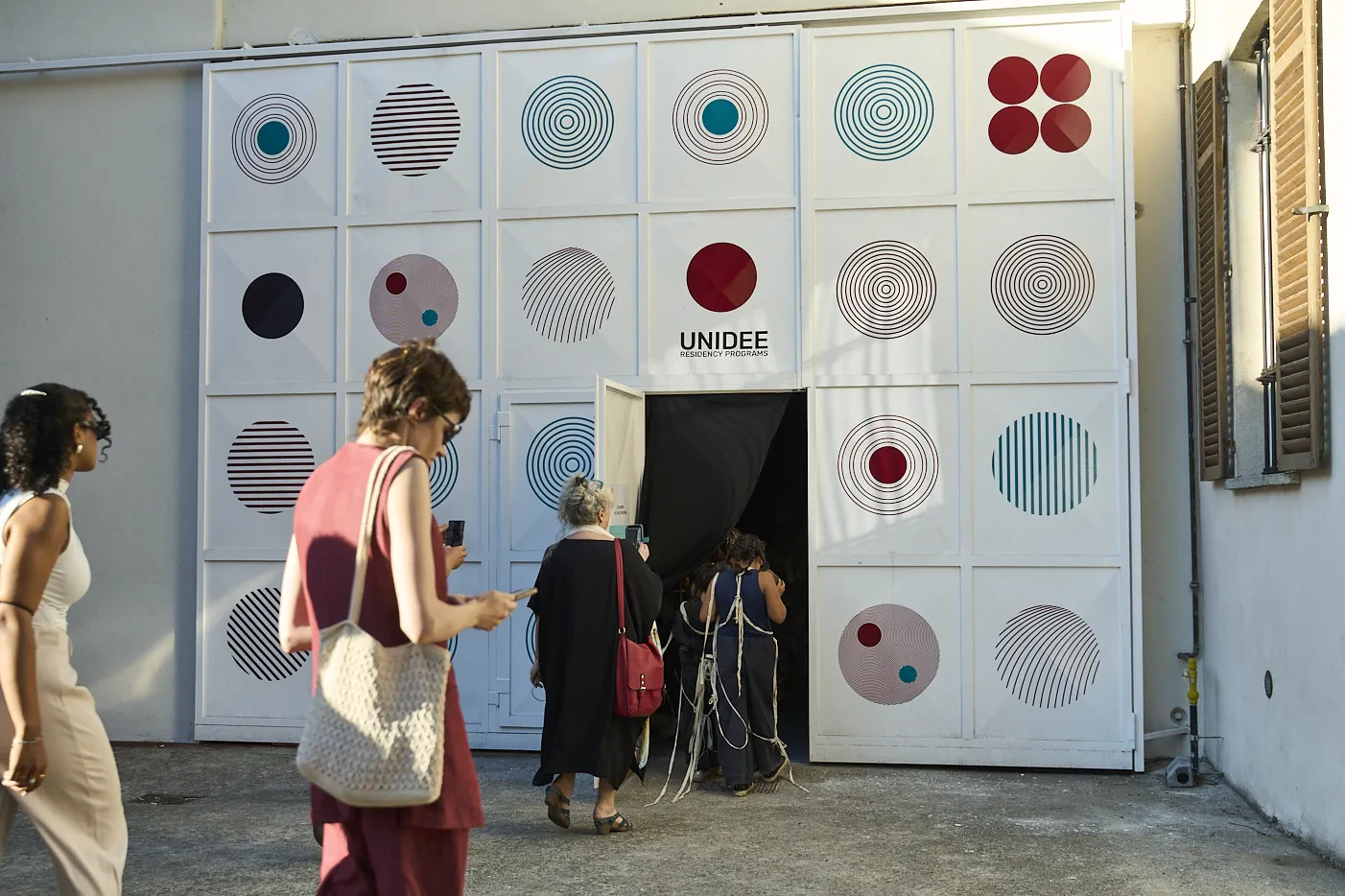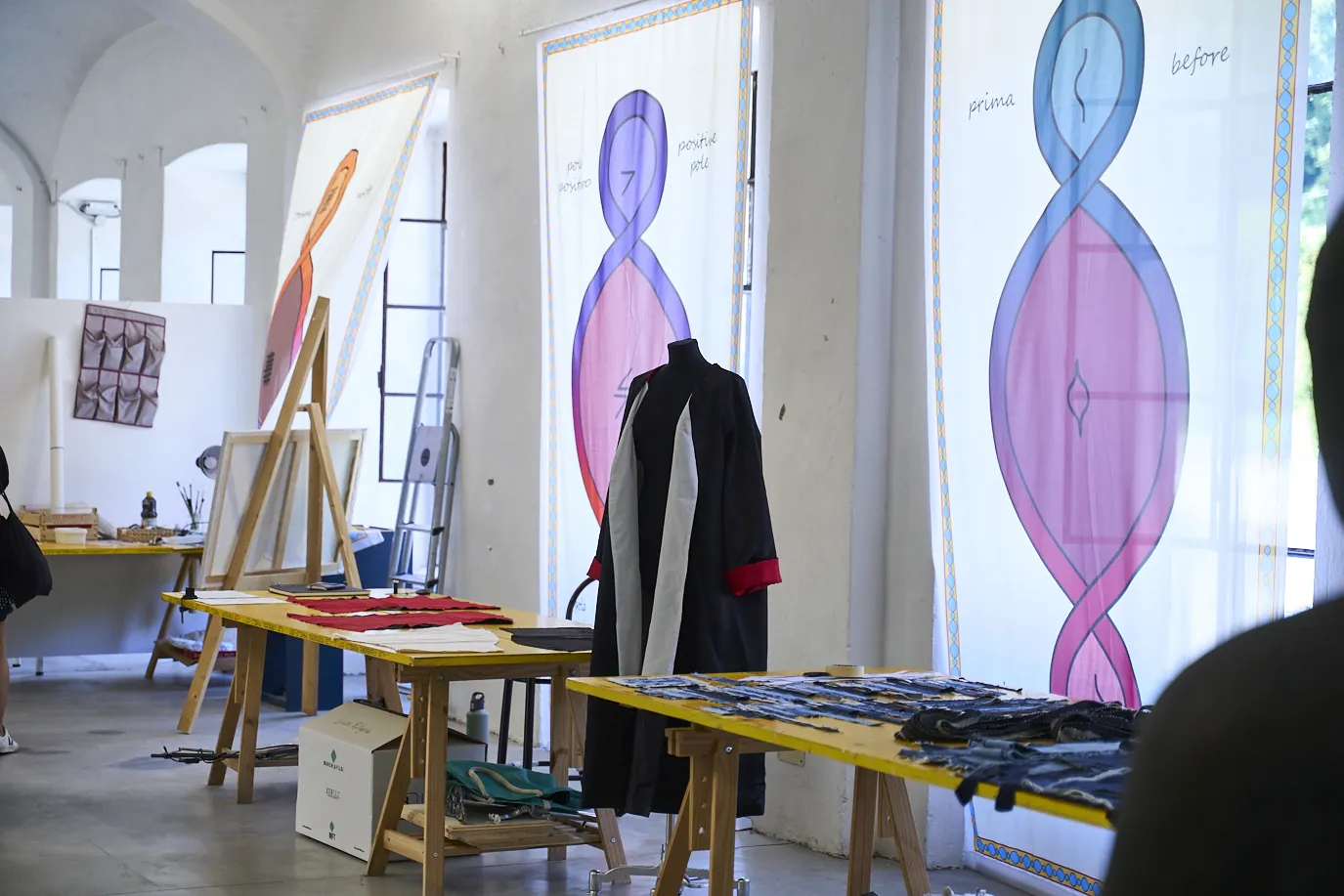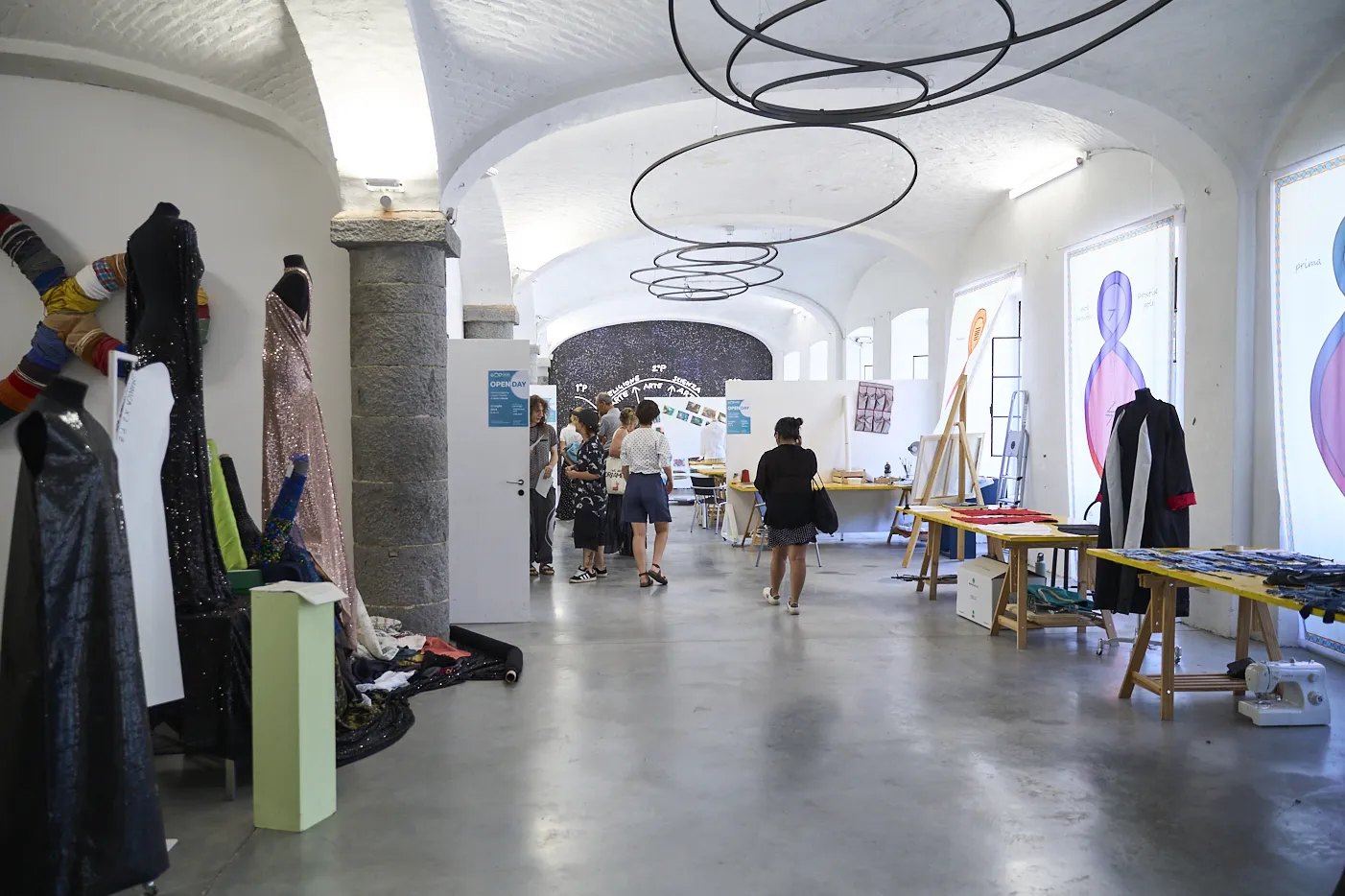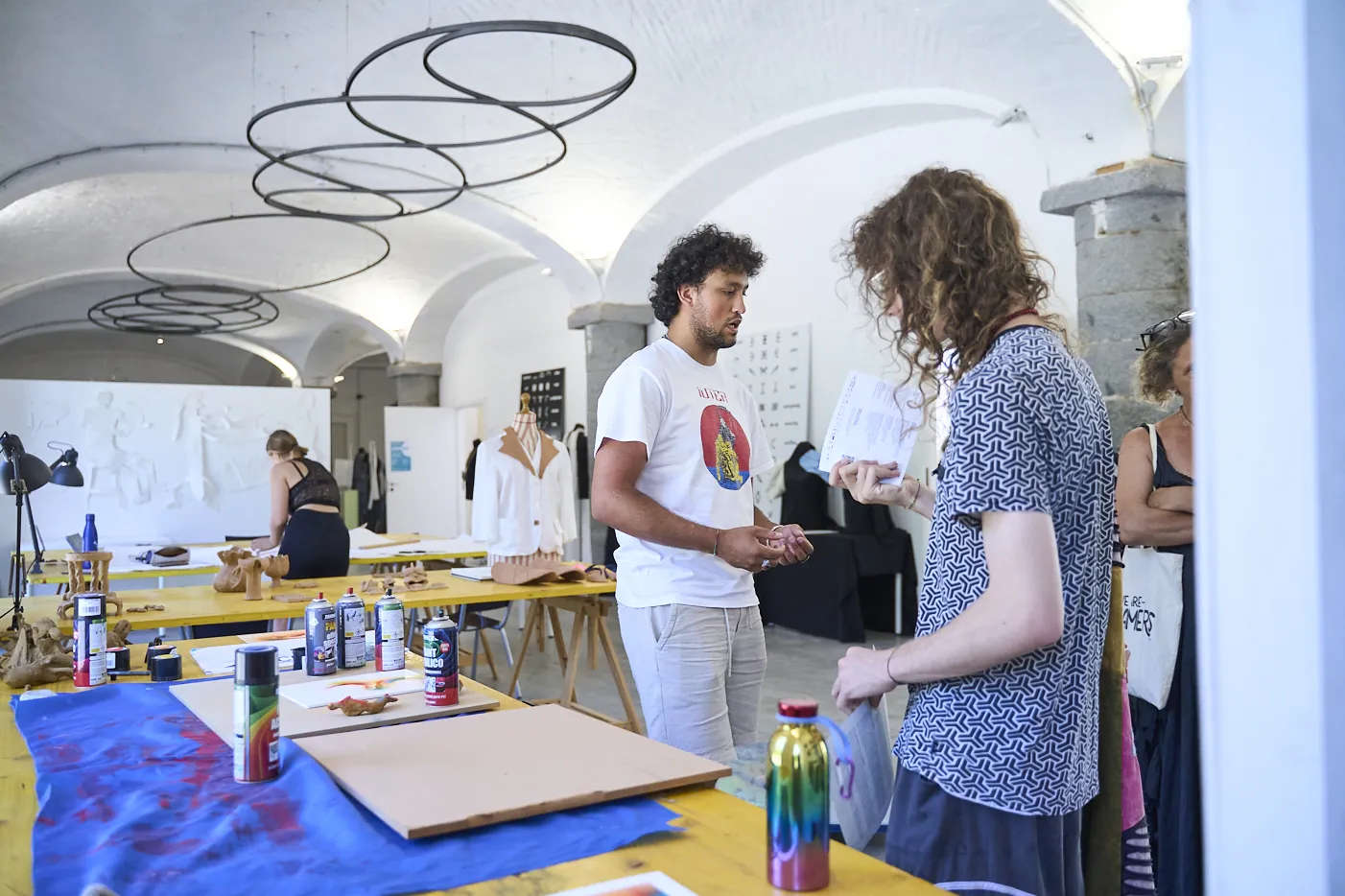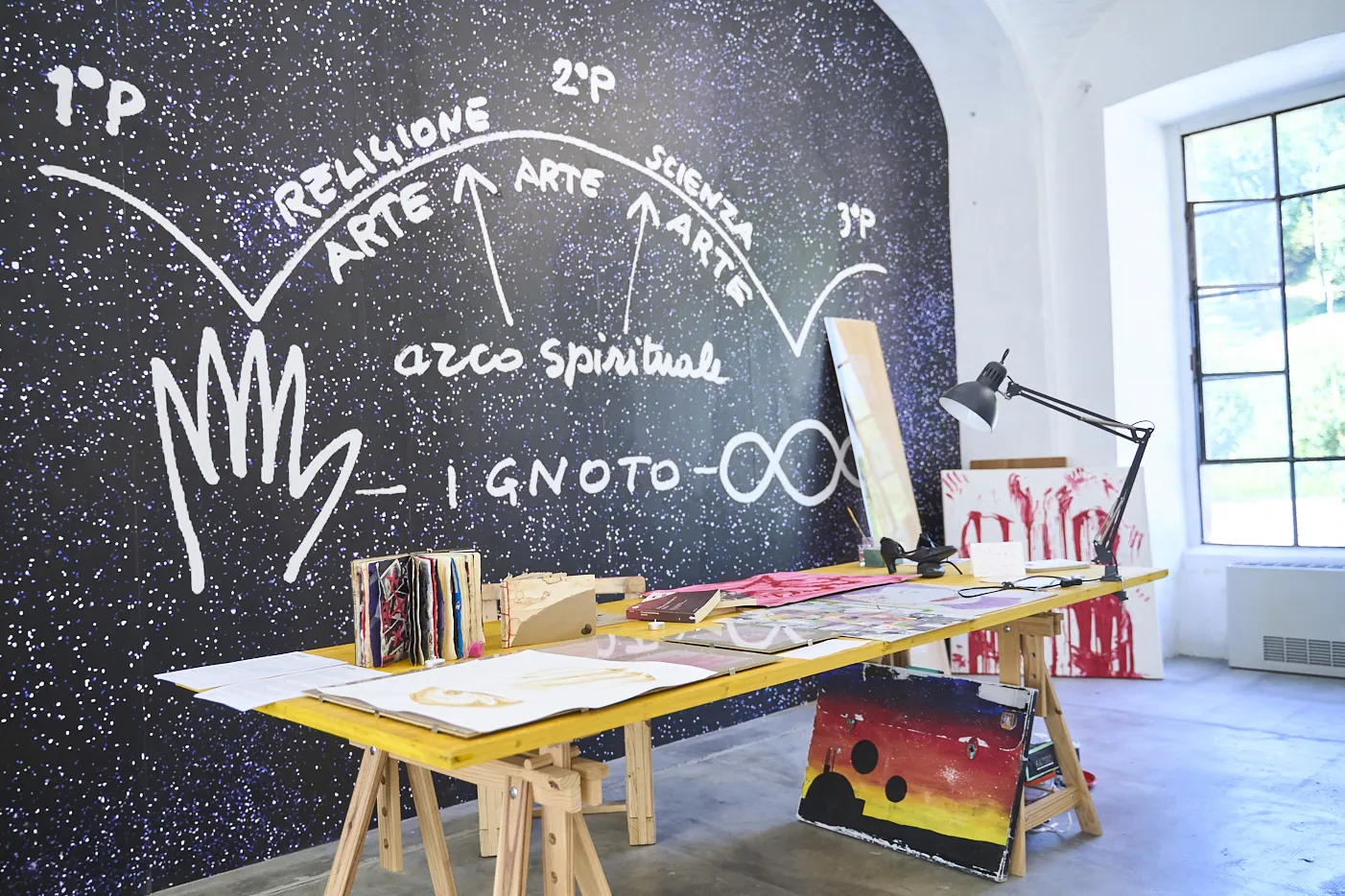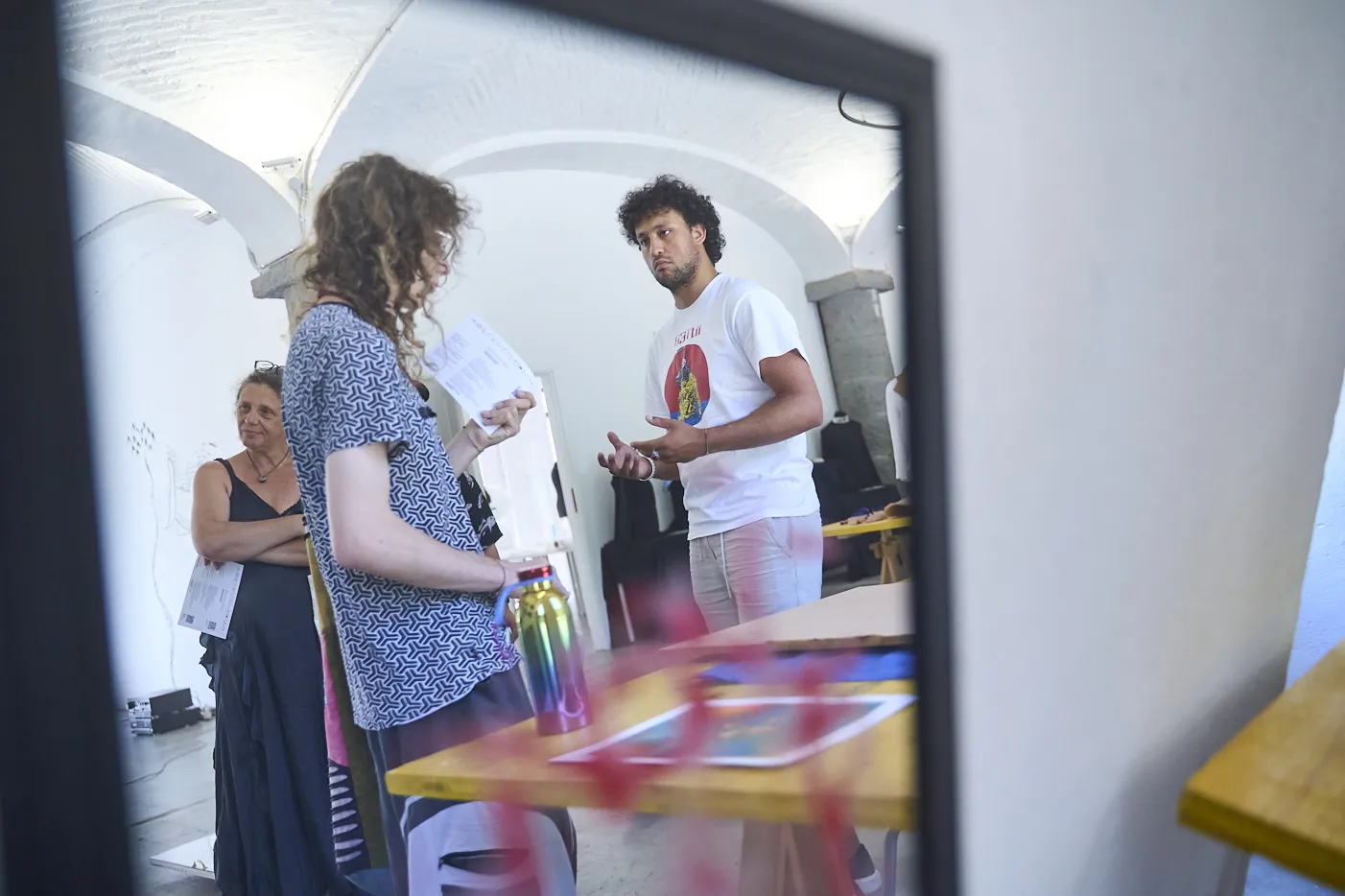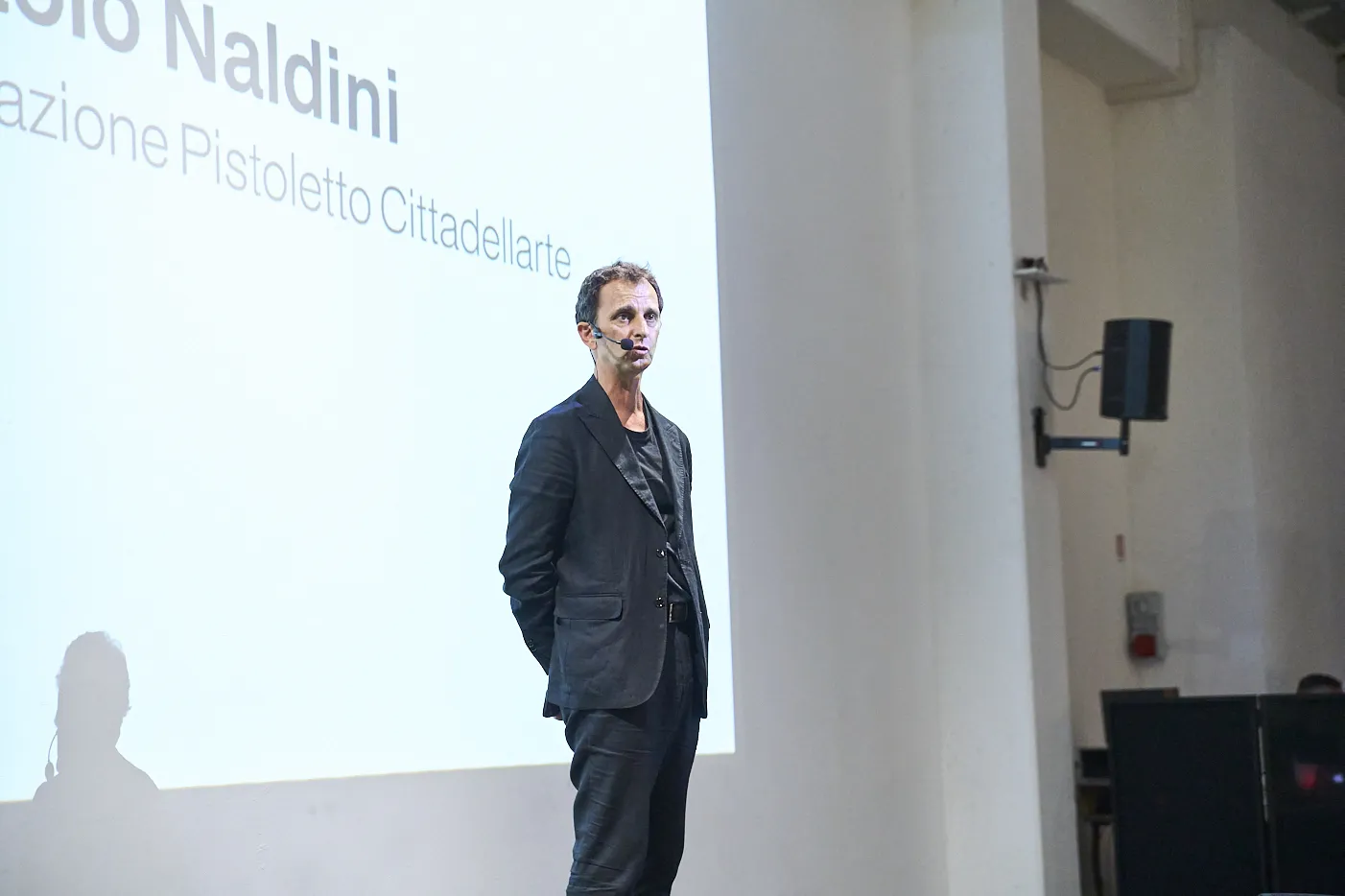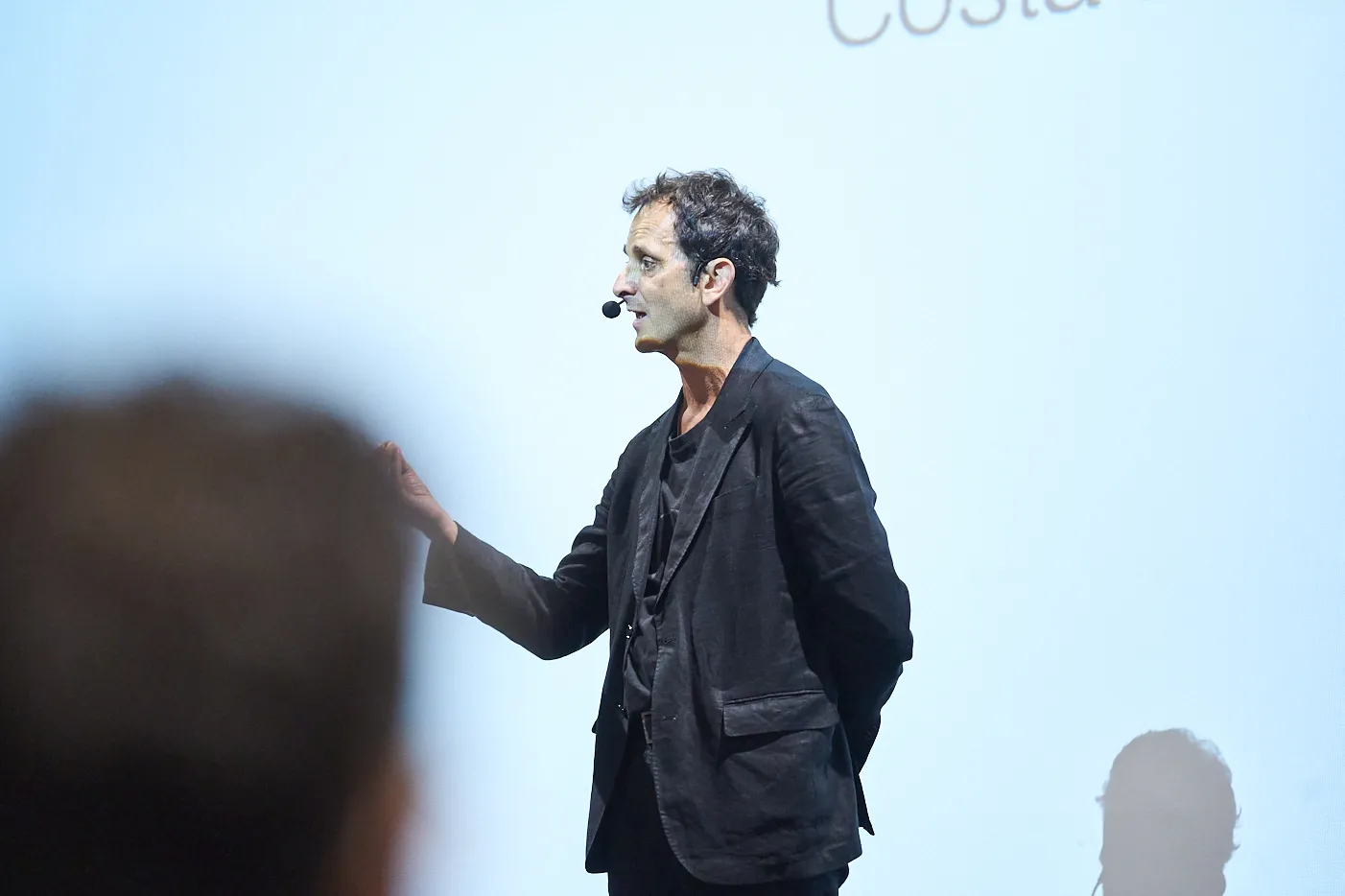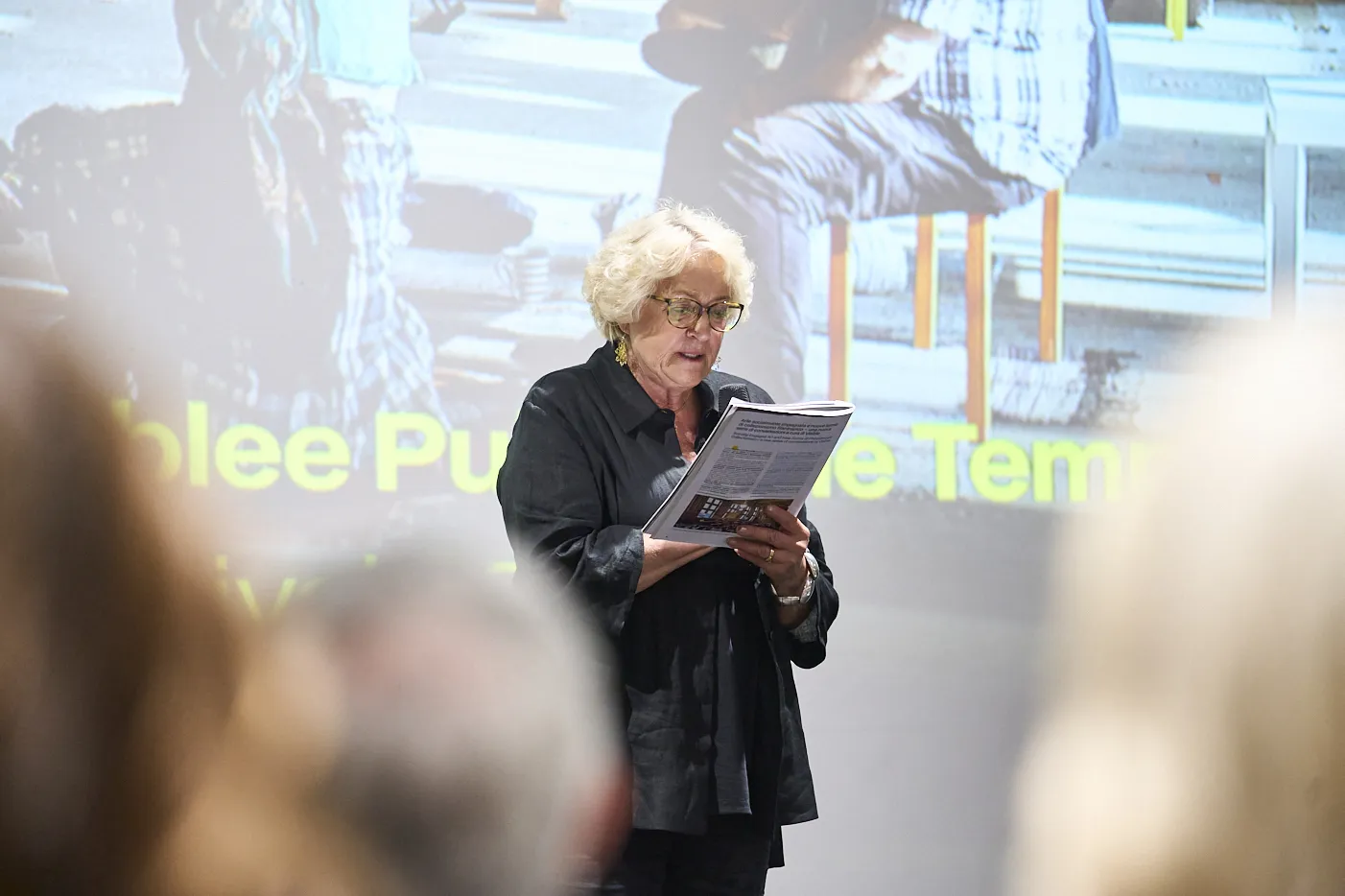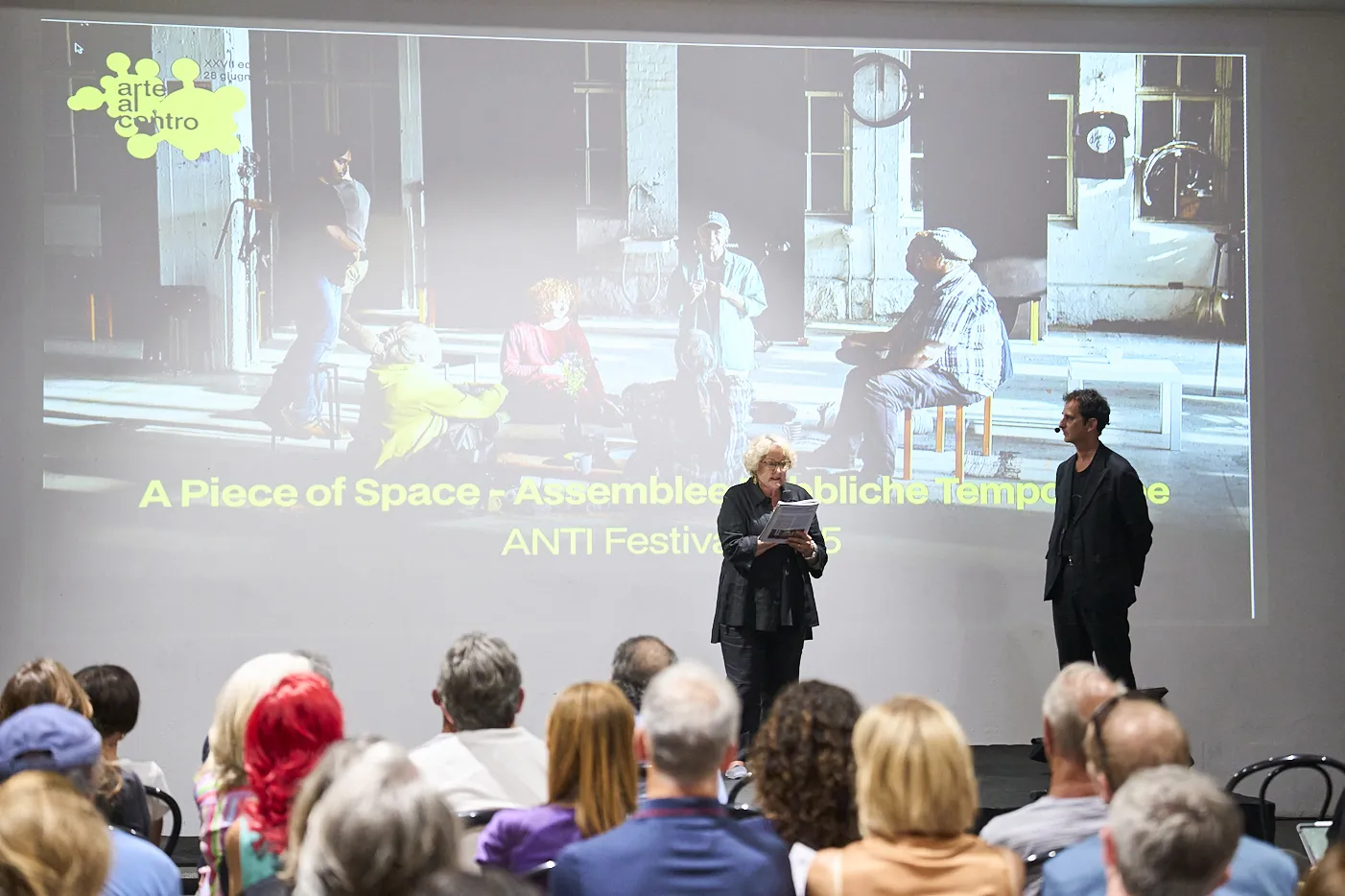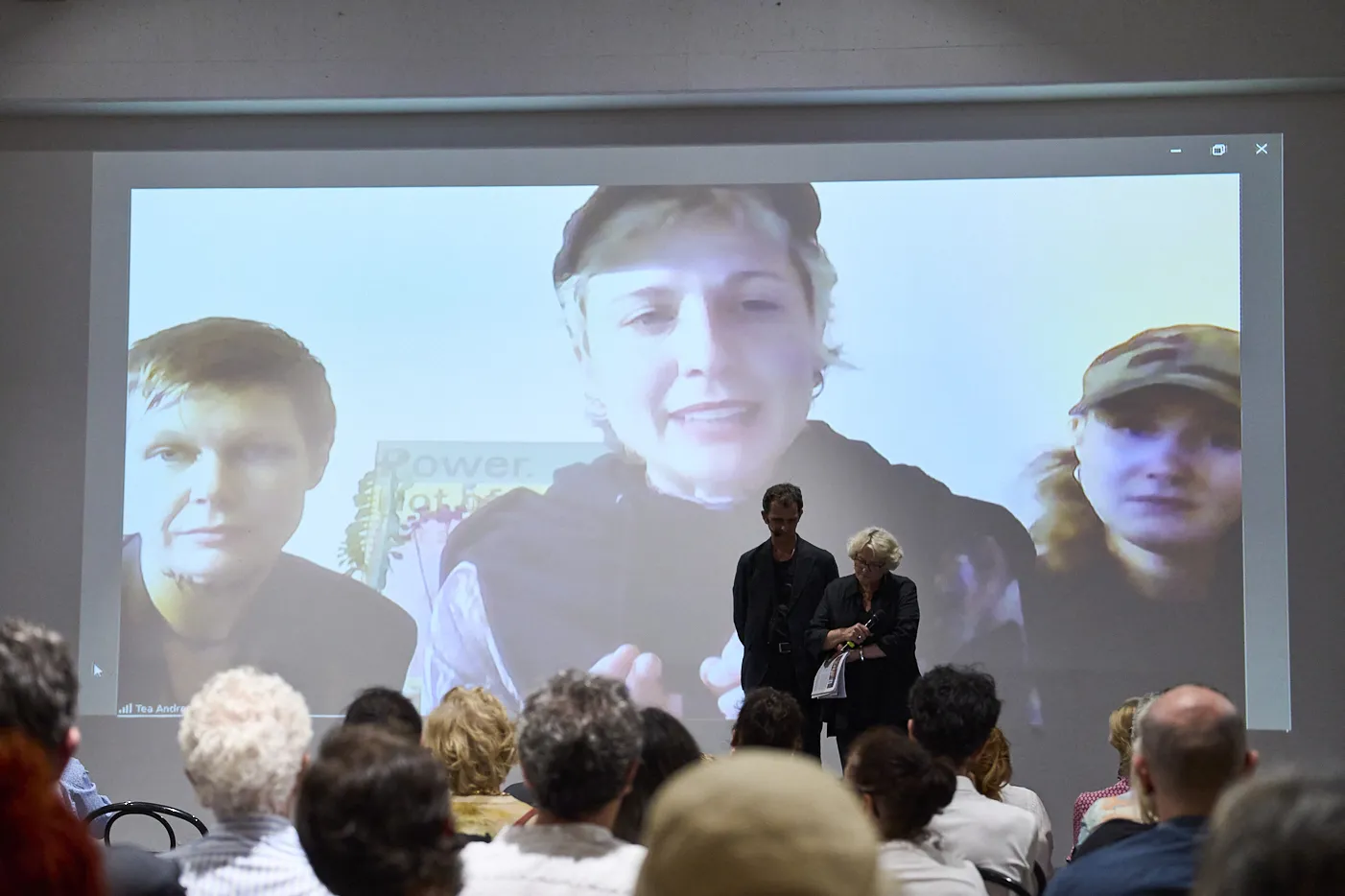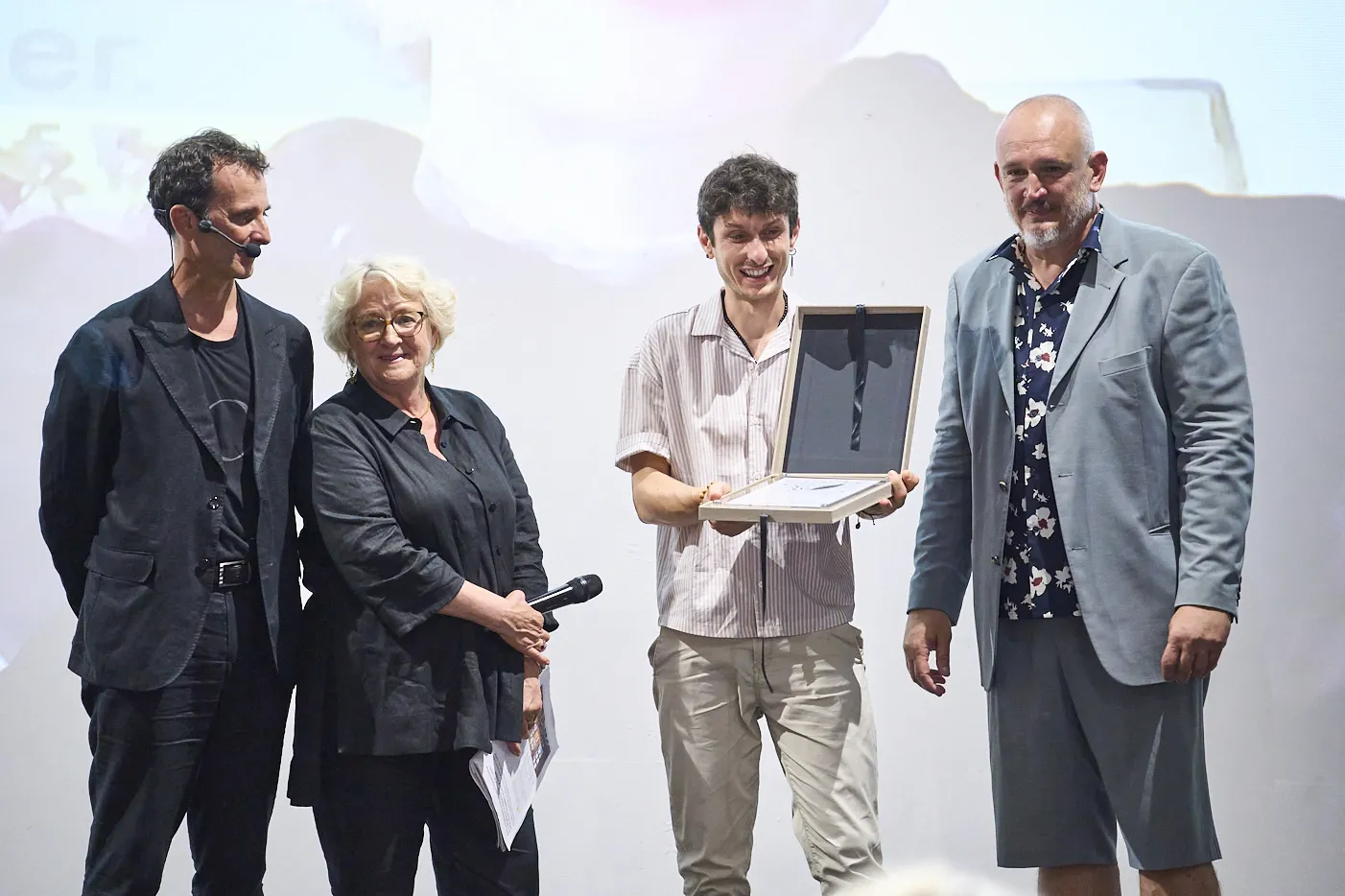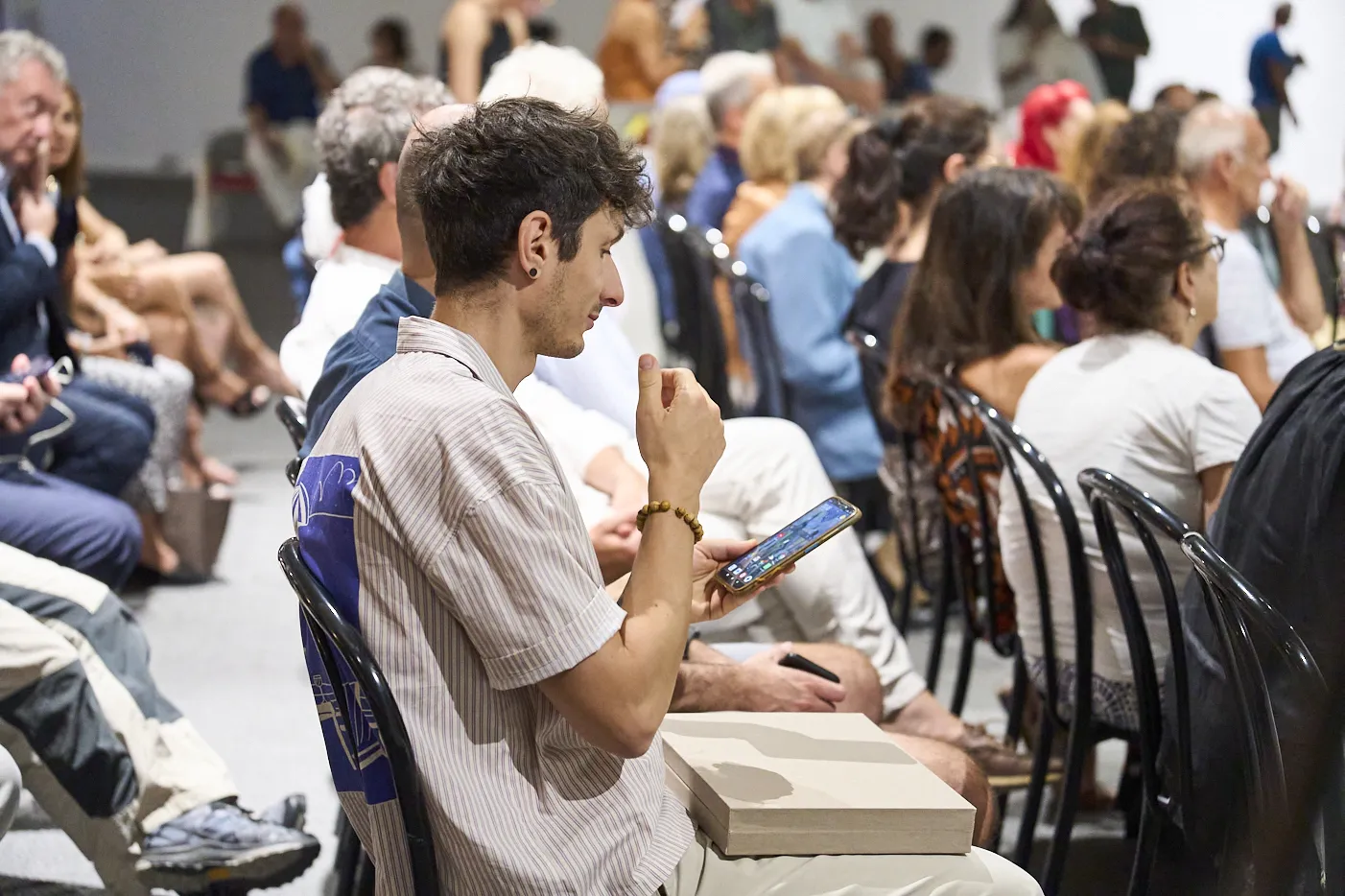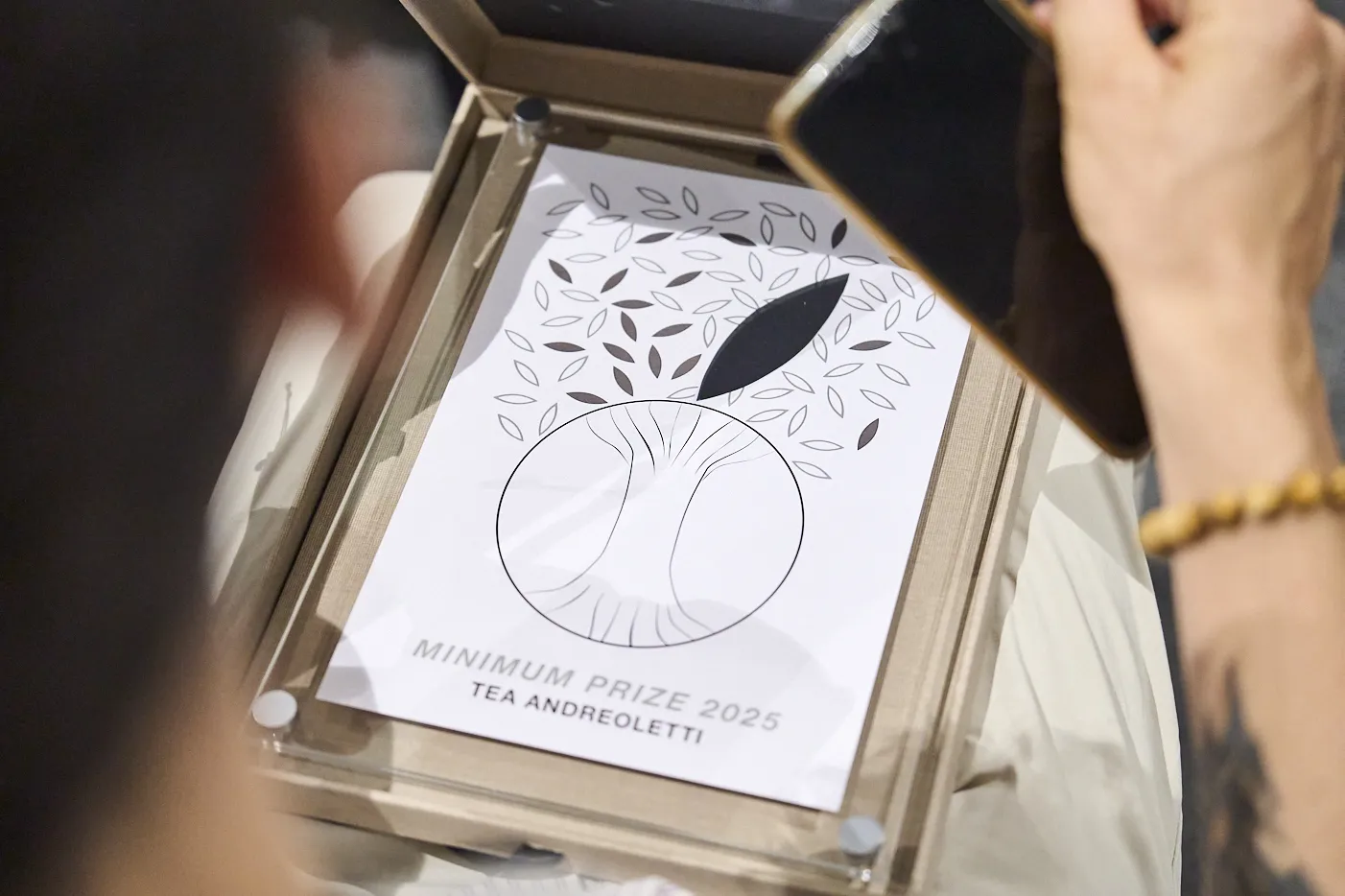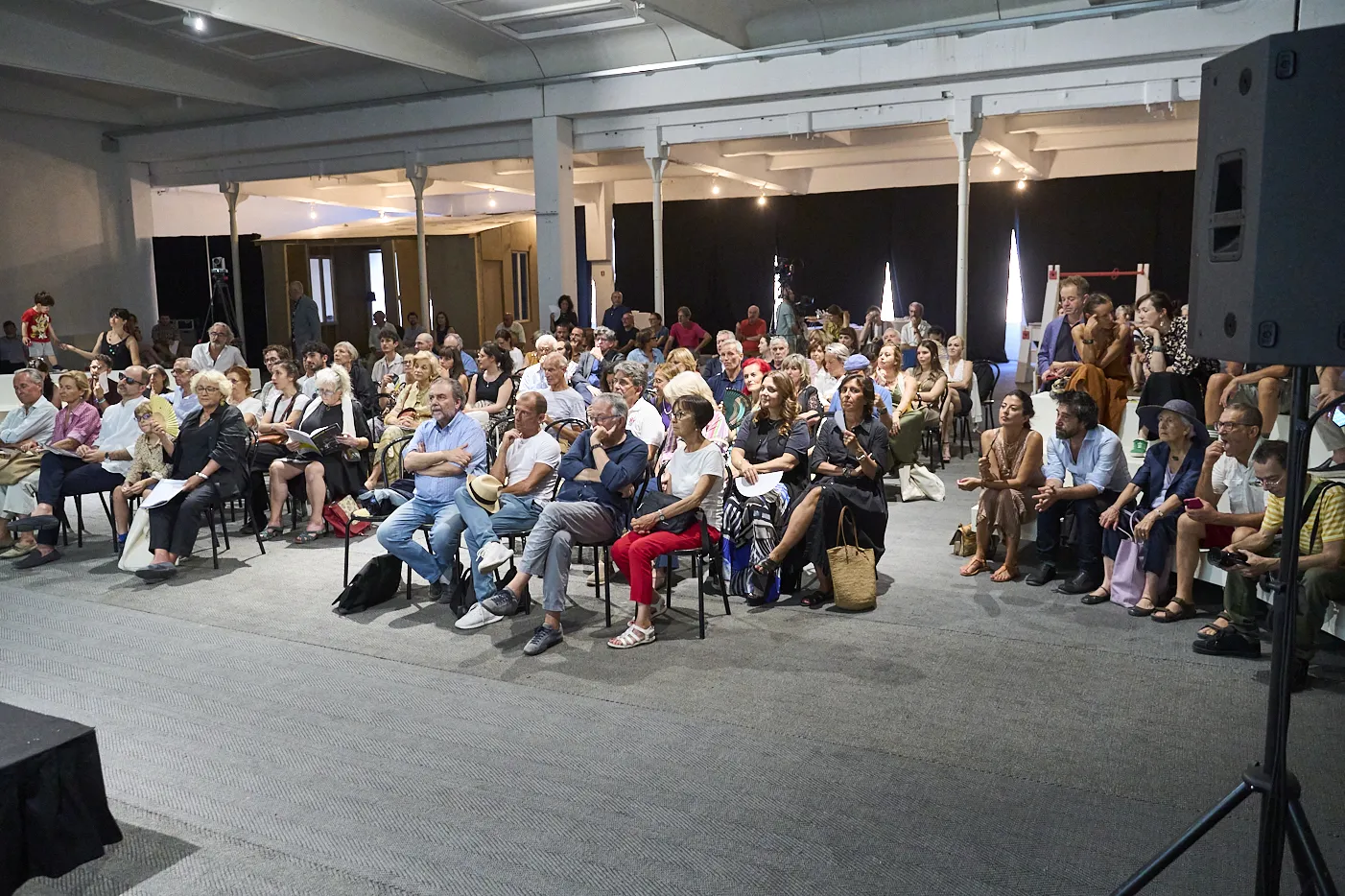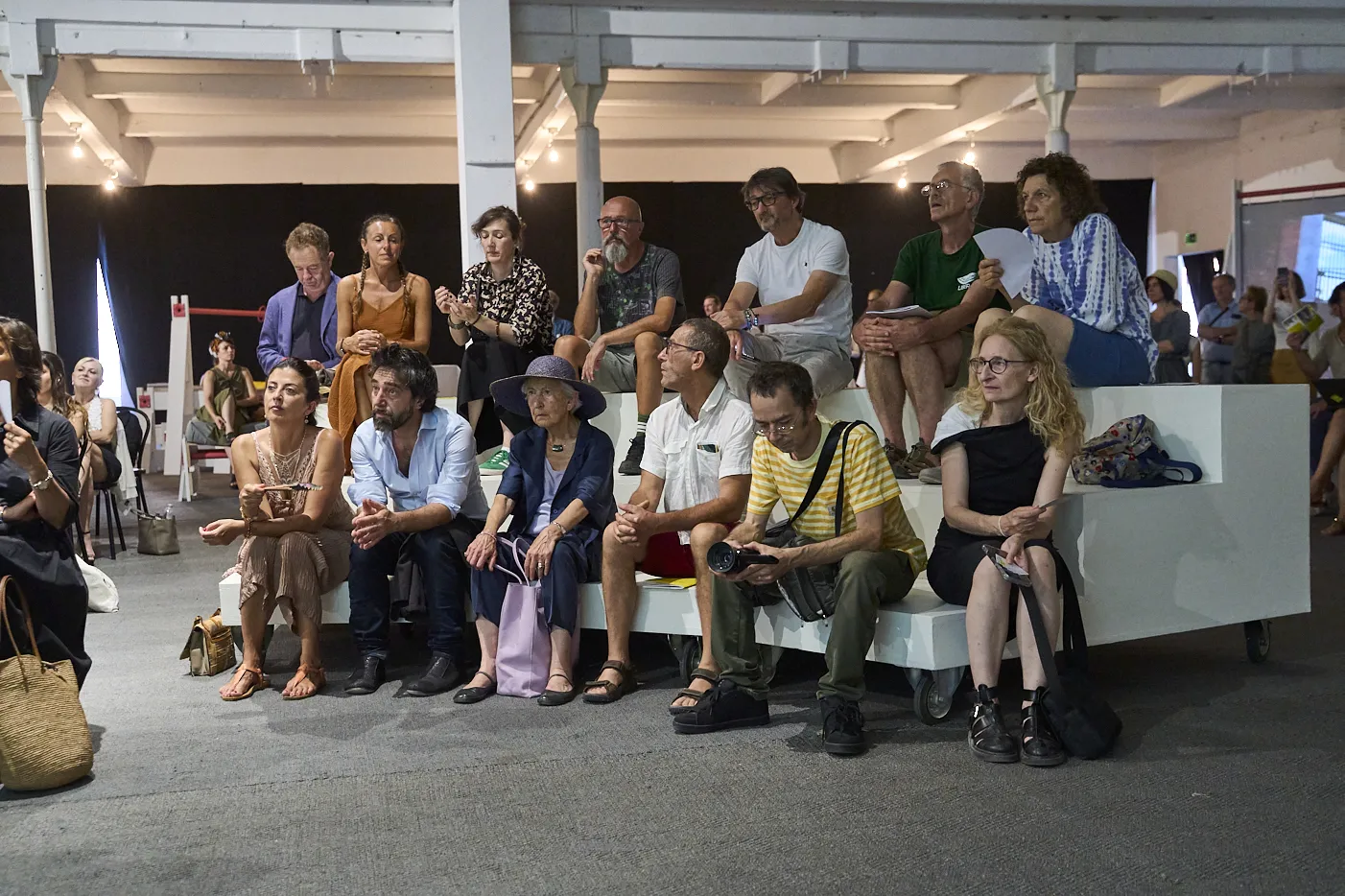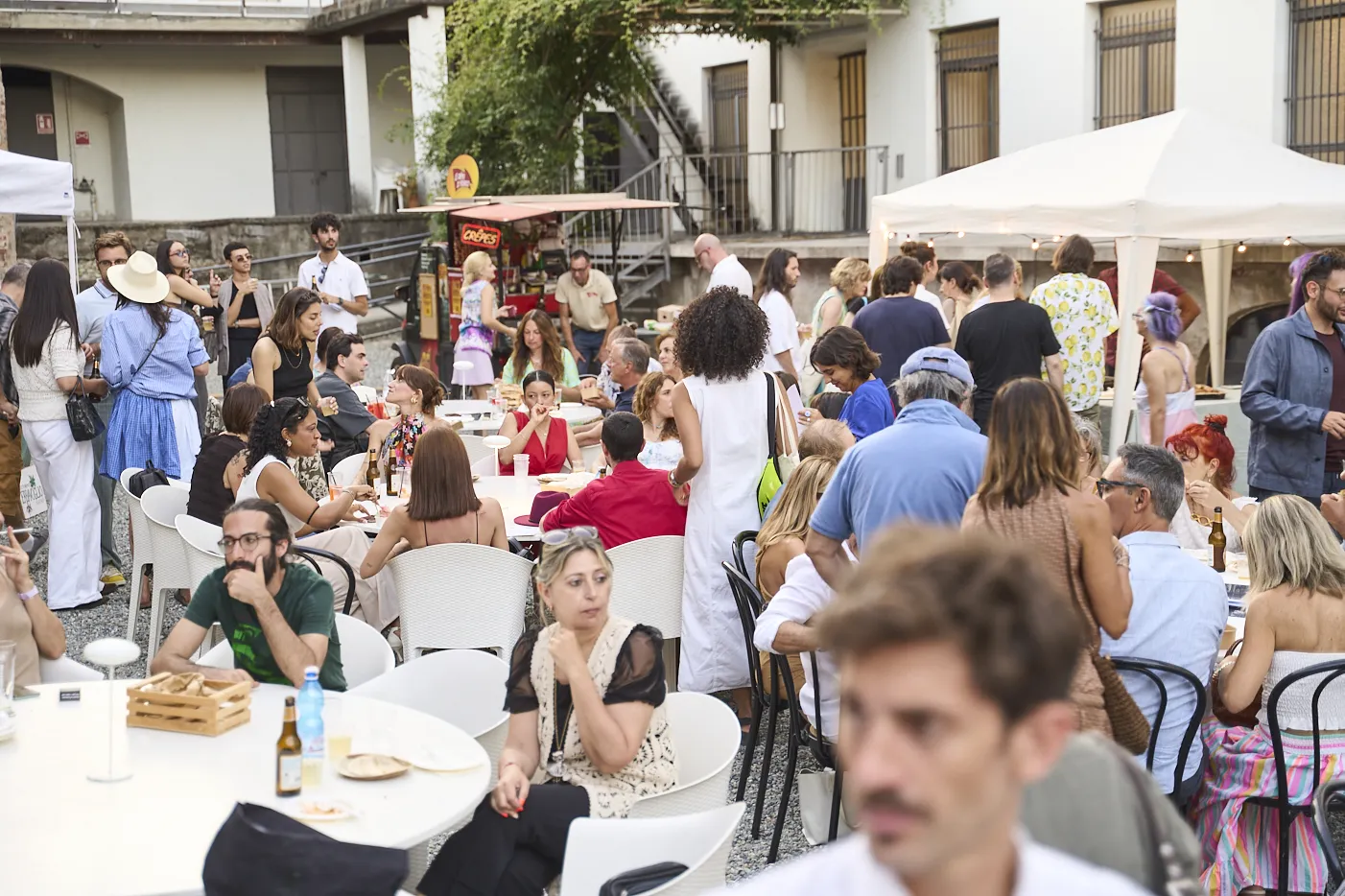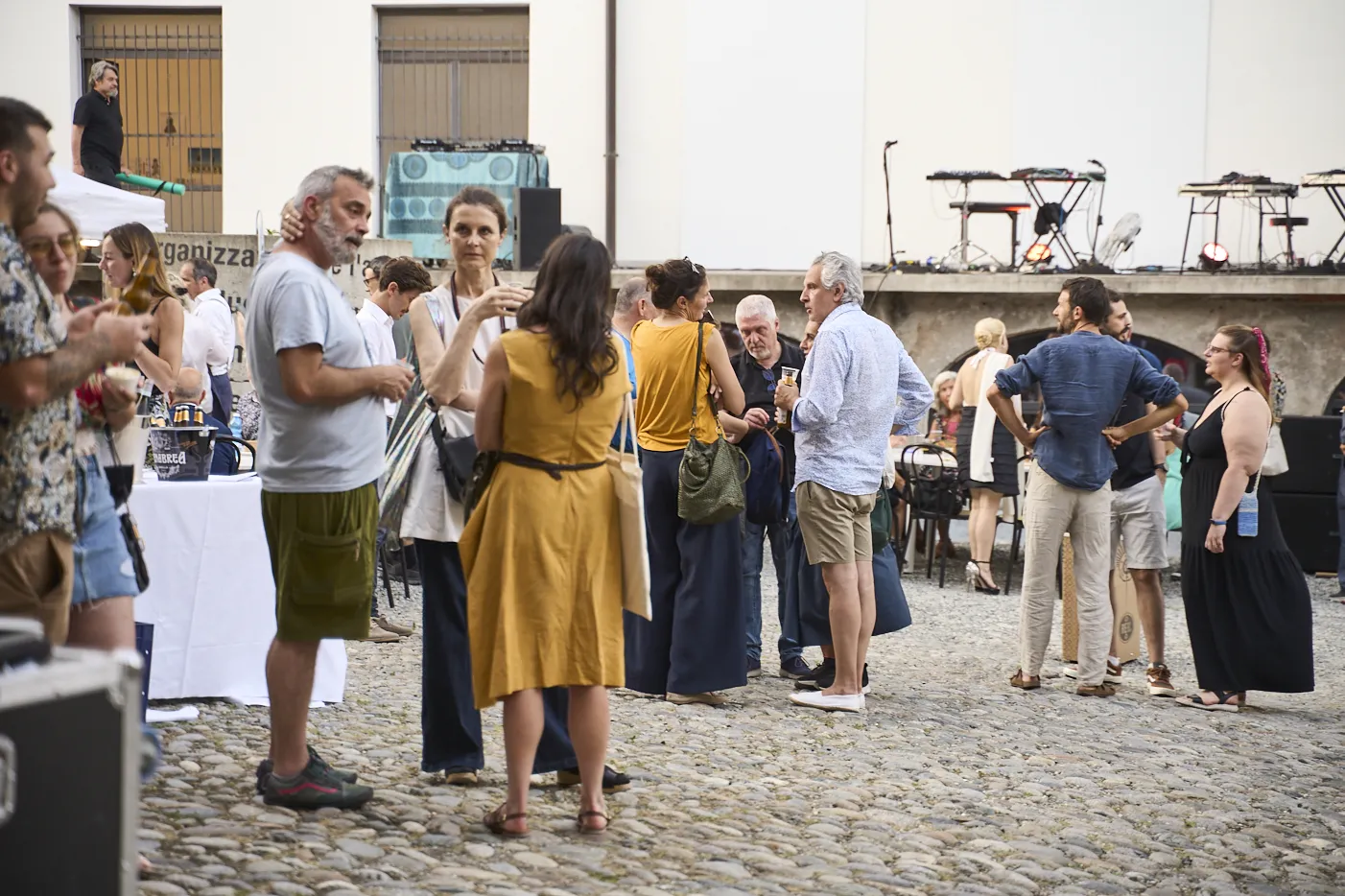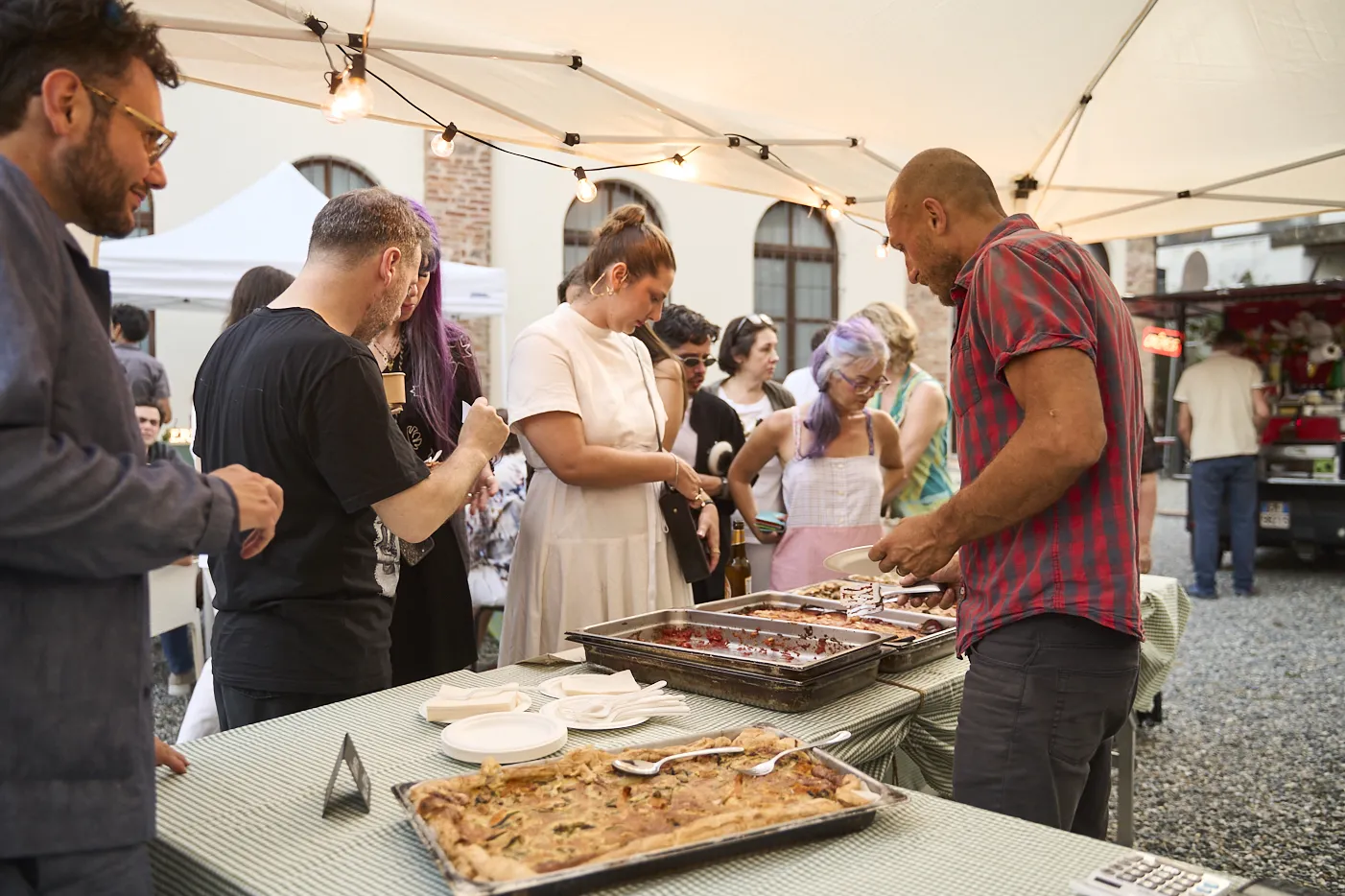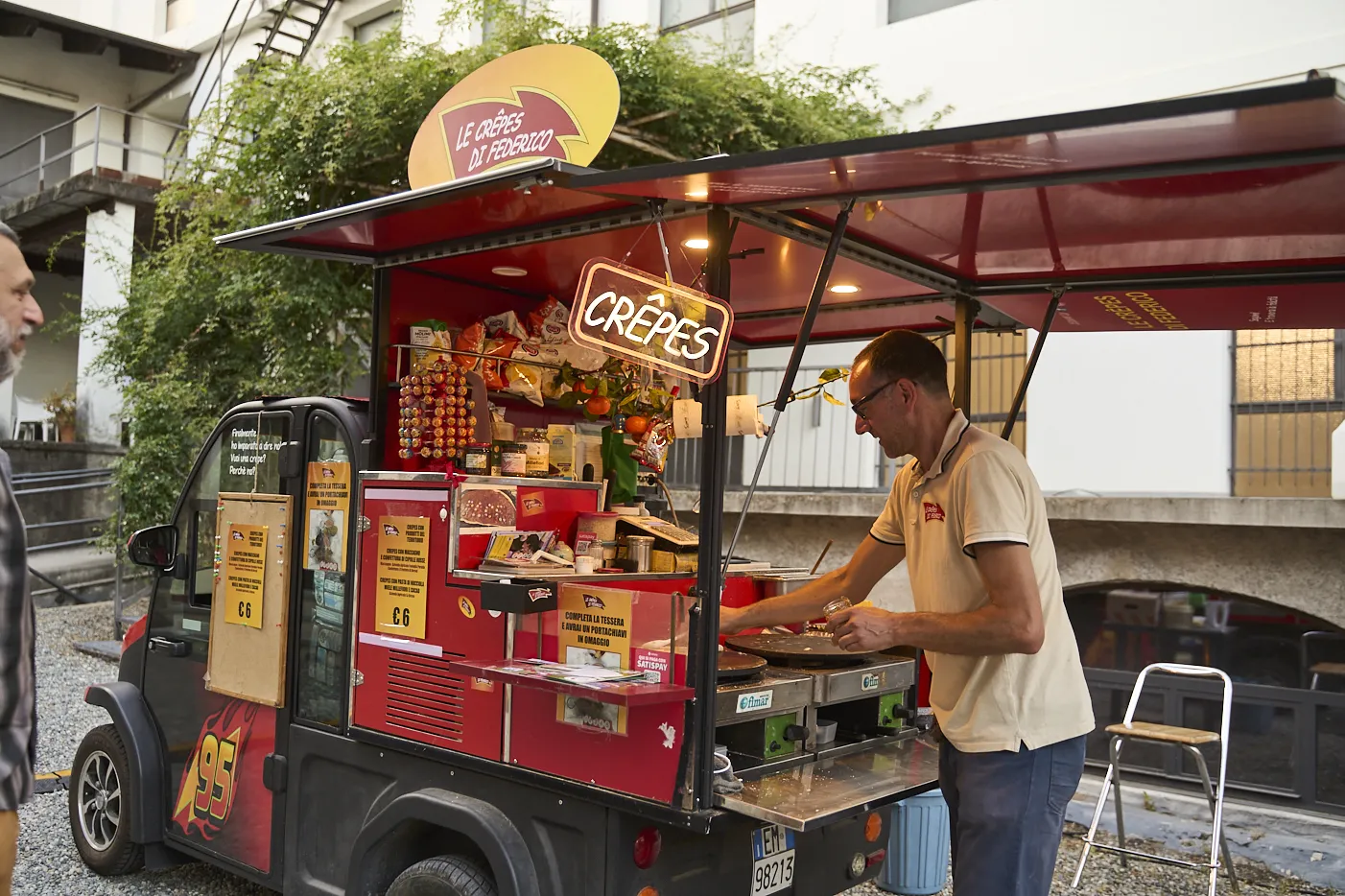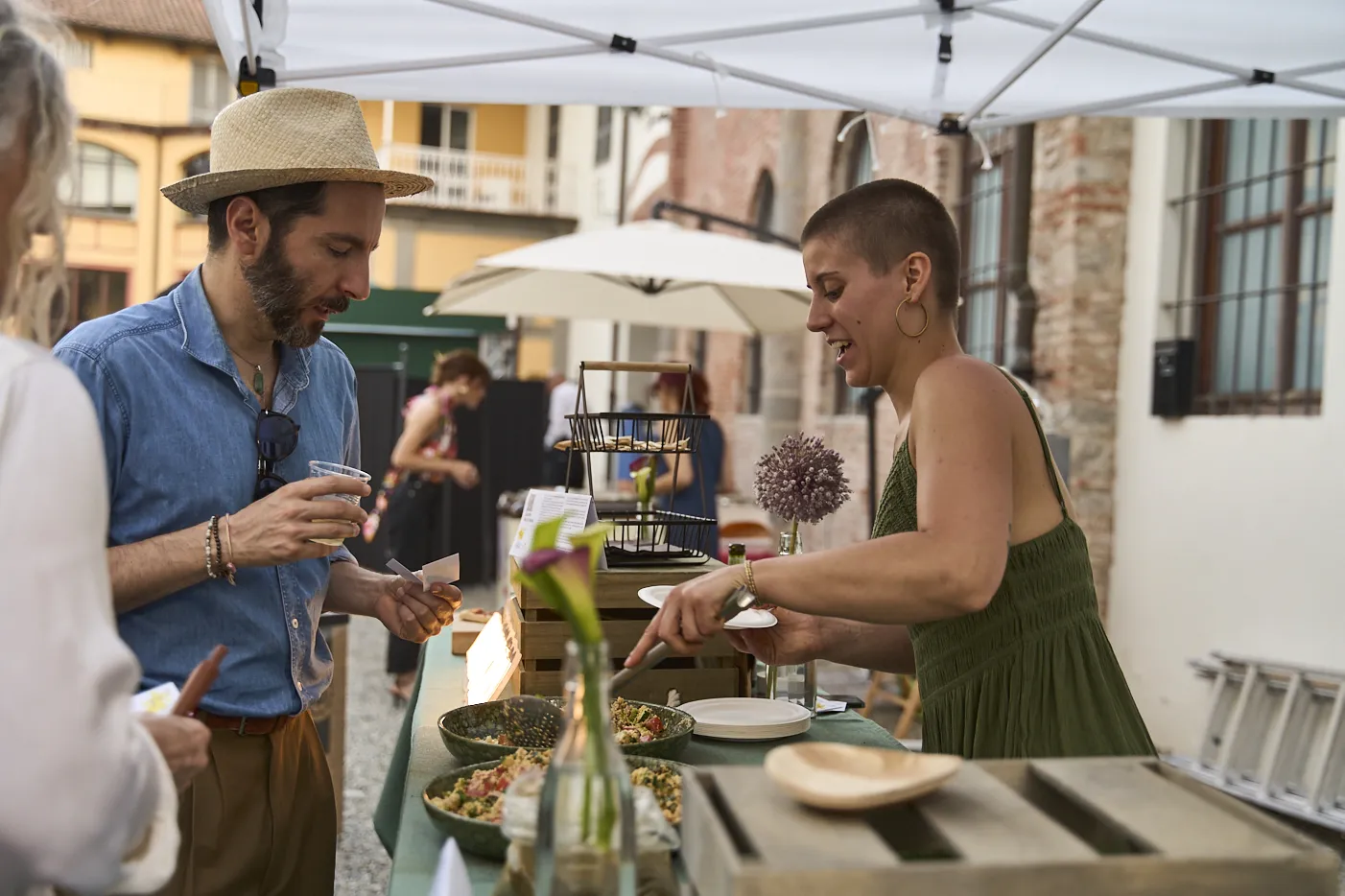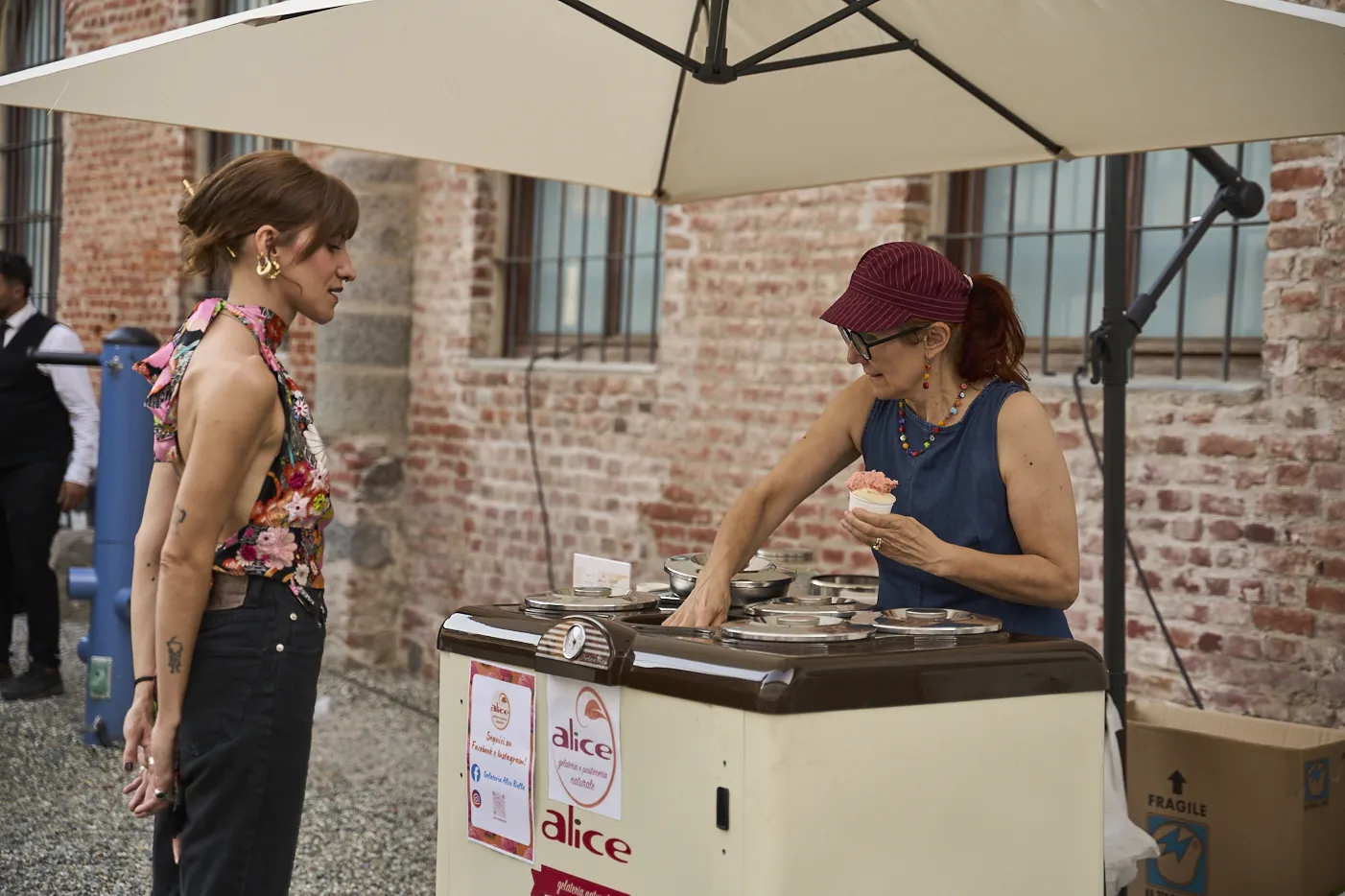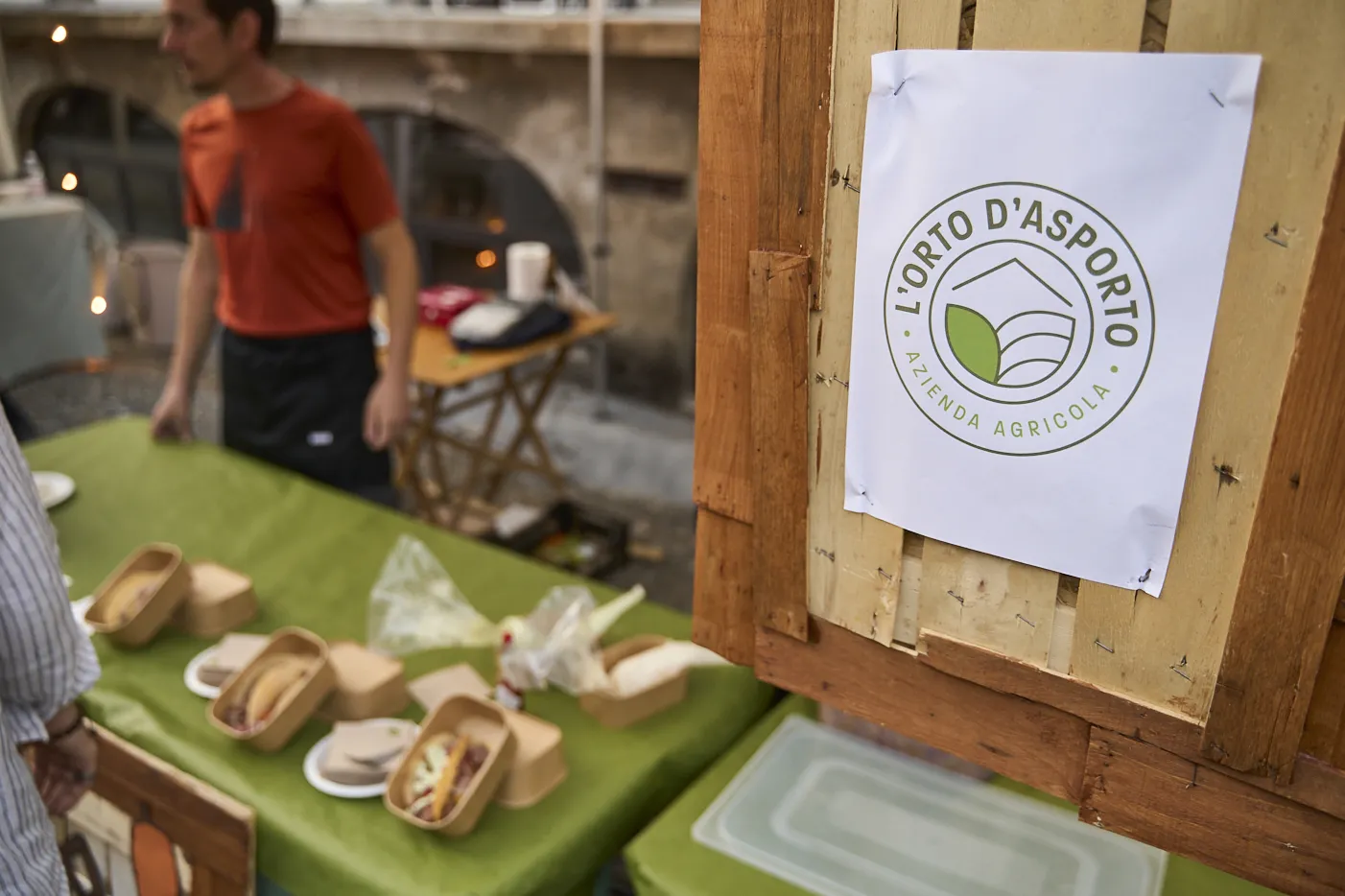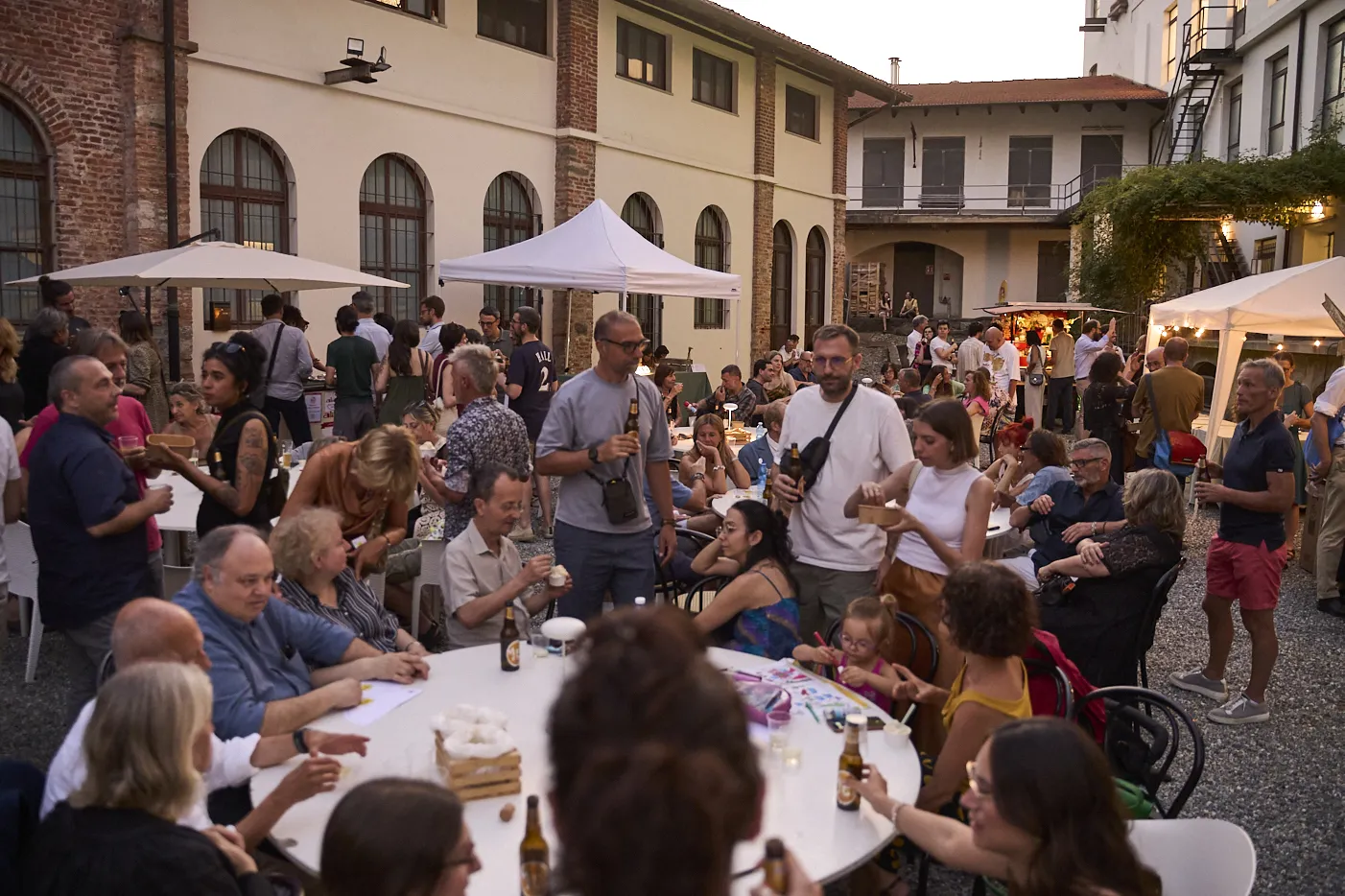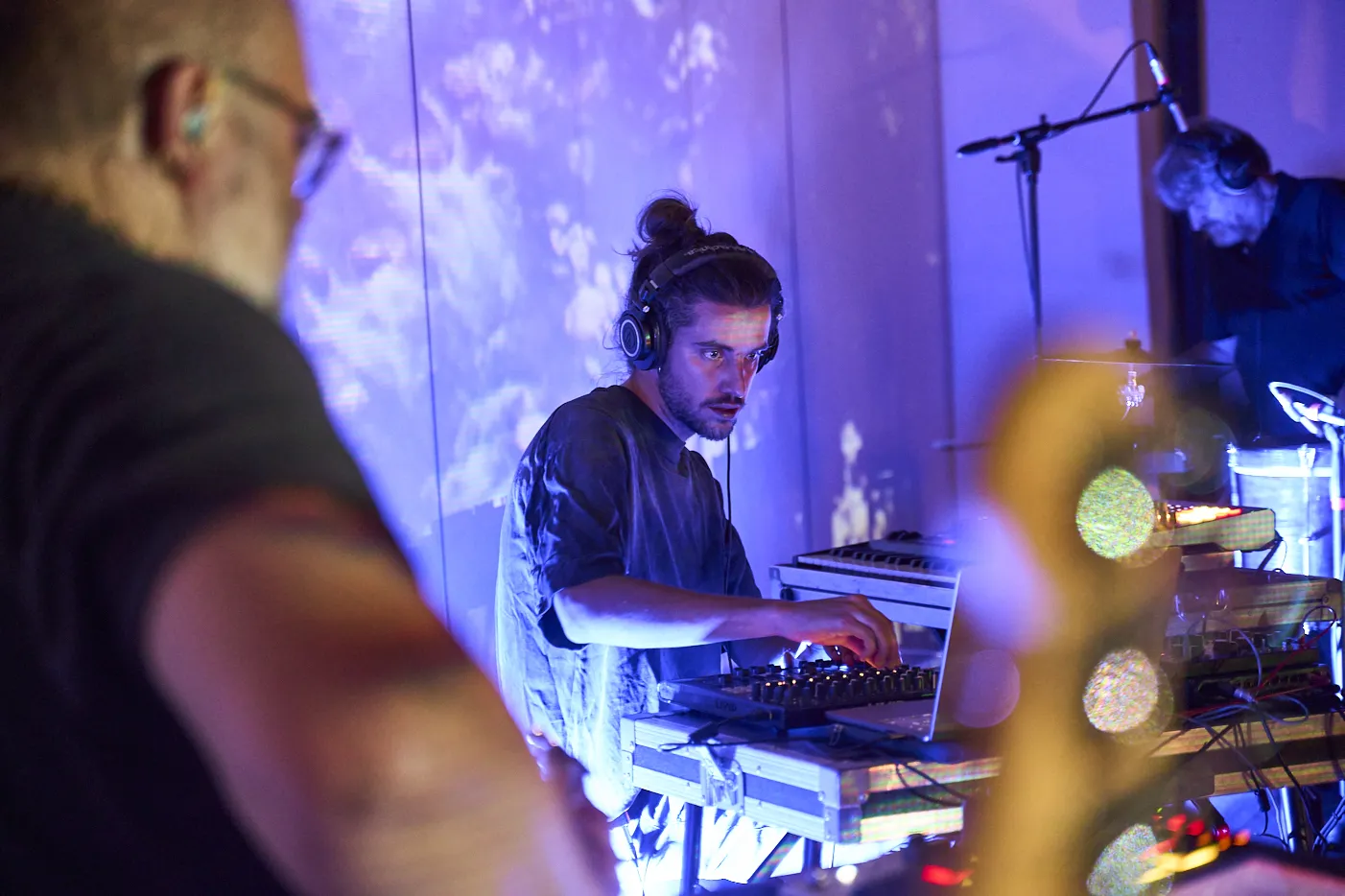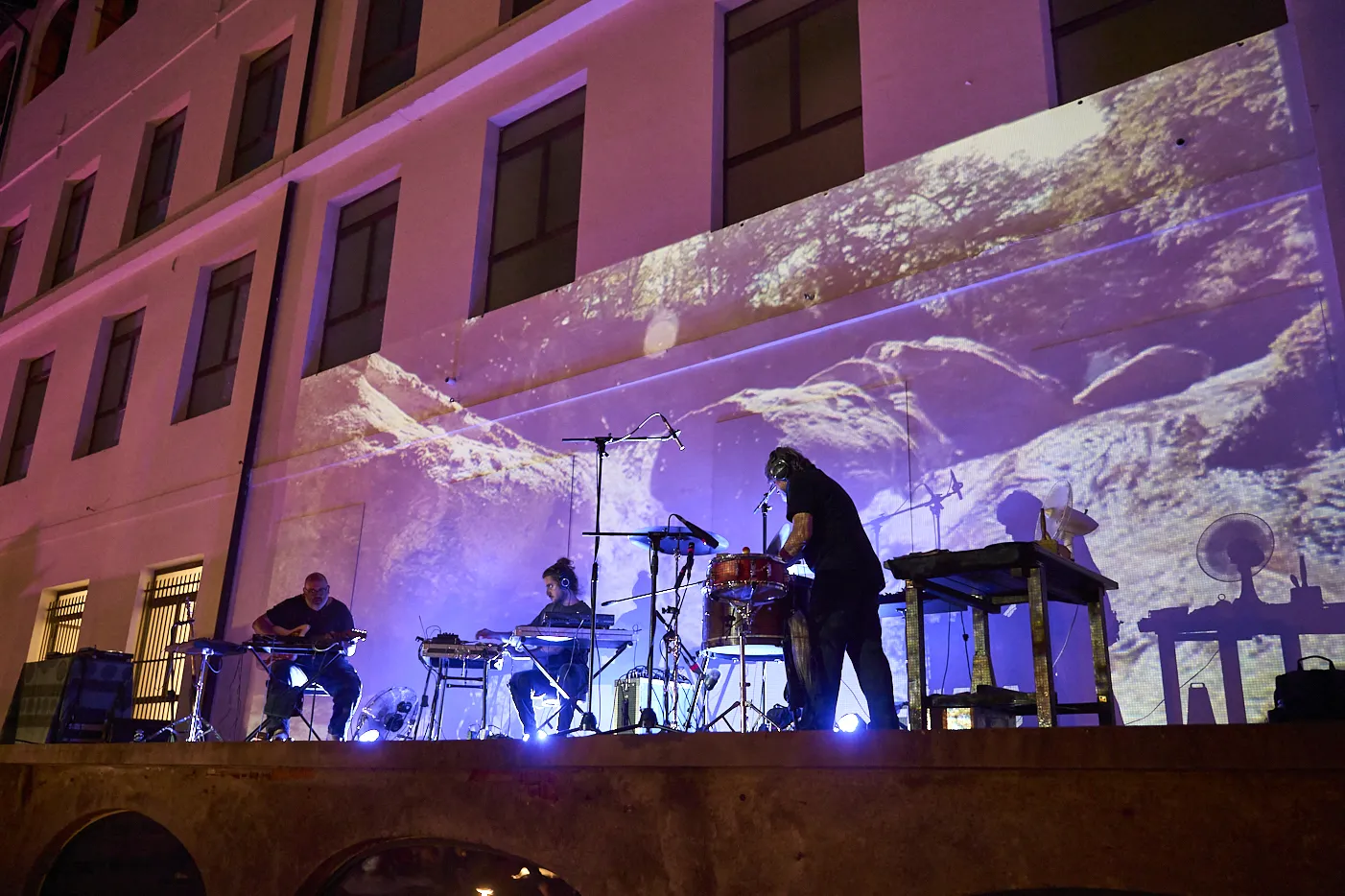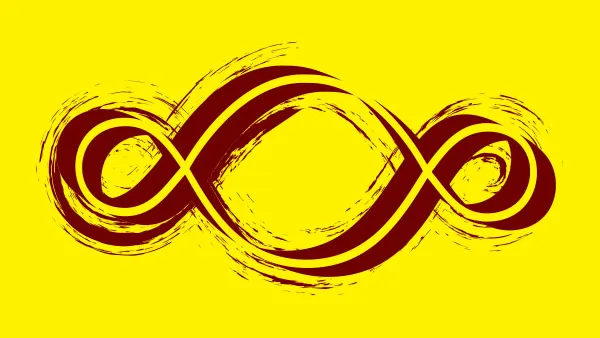What can we
help you find?
Ricerche suggerite
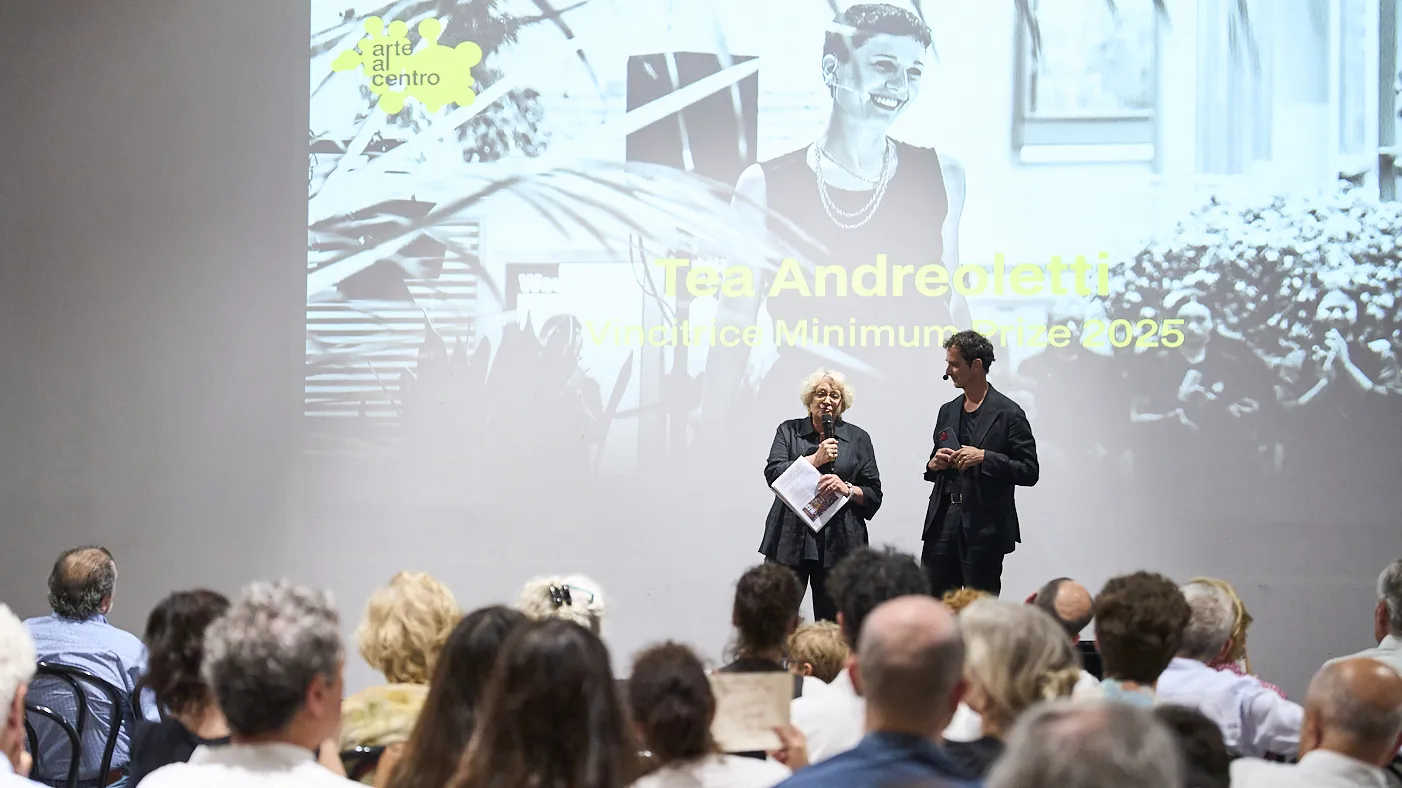
From disco to the state: at "Arte al Centro” the revolution of the "Buongoverno".
On Saturday, June 28, the "Palazzo del Buongoverno", the heart of a model of active and sustainable citizenship inspired by Lorenzetti's Good Government, was inaugurated in Biella with an ad hoc conference, reinterpreting it in a contemporary key. The space hosts the new headquarters-open to dialogue between citizens, institutions and businesses-of "Biella Città Arcipelago" and two Cittadellarte exhibitions, with a series of works by Michelangelo Pistoletto dedicated to sports and religions. Also presented during the initiative were the master's work “Mirror of Eternity,” the exhibitions “Ecosystems as Living Communities,” curated by UNIDEE Residency Programs in collaboration with UniCredit Group, and, for the Unidee Academy, “Not too hard to listen,” from the three-year Public Art course, and four projects from the three-year Sustainable Fashion course.
Flashback, ten years ago
Costa di Riva, Biella, Saturday night. A nightclub - first called Barraca, then Fabbrica dell'Oro - is getting ready to make the young generations of Biella dance. Girls and boys of all ages line up at the entrance for nights of fun. The bouncers control, in their own way, the public that can enter - according to criteria that are not always clear -, jackets are left in the cloakroom in exchange for a numbered ticket that will then be lost in the colorful mess, at the bar people order bold cocktails. A short distance away, simply by going down a slope, the Hemingway Music Club, another meeting and entertainment point where you can forget about the week of study or work. Under the stars, the epicenter of youthful fun, under the sun, halfway between these two clubs, the Macist (Museum of International Contemporary Art Without Tendencies) of the Biella artist Omar Ronda, who passed away in 2017.
A pulsating triangle, before the silence.
Flashback, early 2025
La Fabbrica dell'Oro, after having been in business since 1995, closed its doors in 2017. L'Hemingway, followed the fate of its "neighbor", after a closing party in April 2024. "Who knows if while the others sleep | You can still hear the usual (oh-oh) | Echoes of the evenings", sings Max Pezzali in his recent song Discoteche abbandonate, which indirectly seems to also pay tribute to the epilogue of the two Biella clubs. The same fate also for Macist. It seemed, apparently, that the word "end" was written on two symbols of Biella's entertainment and culture. Spaces waiting for a rebirth.
Present, June 28, 2025
Cittadellarte and Michelangelo Pistoletto turn the switch back on in that part of the city. That unused space rises to new life, becoming Palazzo del Buongoverno. It is around the inauguration of the latter that the new edition of Arte al Centro on Saturday 28 June was organized. The spaces of the former Hemingway now host, on the ground floor, the exhibition of Unity of Sports for Preventive Peace, those of the former Macist, on the first floor, U.R. - R.A. - Unity of Religions - Responsibility of Art, for a Preventive Peace, both exhibitions of Cittadellarte with works by Michelangelo Pistoletto. And the former Barraca? No more selections at the entrance, no age limit, zero "exclusive" moments. Now, that space has become the new headquarters of Biella Città Arcipelago, on the second floor. Now is the time for inclusion, for a heterogeneous and transversal audience, for a place that can be a theater and active backdrop of the city for the city, where to talk, listen and, quoting the director of Cittadellarte Paolo Naldini, "parliamentary".
The conference Lo Statodellarte - Introduction by Paolo Naldini
The heart of the day was the inauguration of the new headquarters dedicated to the community, the territory and the experiences of participatory government, which is open to discussion and experimentation: the Palazzo del Buongoverno. Inside, on the 2nd floor, Lo Statodellarte was presented, an innovative civic-political form founded on the Art of Demopraxy that combines the freedom of art with shared responsibility, and its Constitution. Art at the Center got underway like this, with a dedicated conference that began in the morning and was opened by Paolo Naldini. "Let's not remain a city, let's become a State", said the director of Cittadellarte. An invitation to go beyond the idea of the city as a simple administrative entity to embrace a broader collective dimension: a Statodellarte, where every citizen is an active part of the government of their own life and territory. The new space, public in its function, but housed in a private container, is defined by Naldini as a "public device" at the service of the community. "This place carries with it a significant history - he said - and today it continues to be a meeting place, but on another level: that of active citizenship". The inspiration comes directly from the Sienese iconography of Ambrogio Lorenzetti, but with a contemporary reading. "It is not nostalgia - clarifies Naldini - but a lively and current reinterpretation". In Biella, that idea takes shape through the model of the archipelago, where nature and artifice coexist in a dynamic, sustainable and productive balance. In this vein, the Foundation, with the Biella Città Arcipelago exhibition-workshop, has launched a vast shared planning program since 2019, which initially involved around a hundred private organizations. The path, developed in Biella but with global resonance, is an advanced form of Demopraxy: a harmonious alliance between citizens and institutions, between private and public. The archipelago, which has become a model of governance, is now divided into a series of 6 thematic islands, each dedicated to a key area: from sustainable agriculture to mobility, from civic education to health, up to mountain policies. "Communities of practice must become aware - reiterated Naldini -, because every family, every group, is a micro-government. And our task is to reconnect with the institutions". Present, in this perspective, the president of the Province of Biella Emanuele Ramella Pralungo ("I believe that art must remain at the center of humanity"), who proved enthusiastic about the project, as also evidenced by a post on his Facebook page.
The conference Lo Statodellarte - Le isole
The meeting got underway with the testimonies of two representatives for each of the islands of the Archipelago. Nazarena Lanza, coordination and development of Biella Città Arcipelago, moderated the interventions, presenting the project. "There are three essential elements to highlight: the mapping, which began in 2019, continues today, counting more than 240 entities that have decided to commit to a path of sustainability; the space where we are today, the new home of Arcipelago; the islands, a natural evolution of the working tables, which represent agglomerations of energies of entities engaged on different themes, each of which expresses a different need of the territory". Afterwards, again in the home of Arcipelago which saw the Exhibition design of the GuardiniCiuffreda Studio, six pairs of speakers discussed how to regenerate the territory and strengthen communities, starting from concrete needs and a strong idea of common good. For the Isola Comunità Educante, Ruggero Poi (Open School del Terzo Paradiso) and Elisabetta Praderigo (Valdilana deputy mayor) spoke, evoking the educational community as a collective coming-of-age novel. A story that is written together, made up of adventures, relationships and shared responsibilities. A process that must make use of “educational pacts” as real alliances, lived day by day. We then moved on to the Isola Salute e Benessere: the theme of health, addressed by Enrico Pesce (Il Filo da Tessere) and Miriana Miotto (Tessere la Salute), shifted the focus from hospitals to relationships. Pesce spoke of a silent crisis: loneliness as a social disease, and health as a common good to be defended. Miotto relaunched by illustrating how to mend the social fabric through trust, listening and daily closeness: "The first antidote to loneliness is connections". For the Isola Cibo, Agricoltura e Ospitalità, Federico Chierico (CSA Il Chioso and Slow Food Travel Montagne Biellesi) and Francesca Castagnetti (Let Eat Bi and Erbass) described a new possible agriculture: regenerative, in dialogue with nature, and capable of strengthening communities. Castagnetti evoked food as an identity bond: "Recognizing yourself in a territory means recognizing yourself in its flavors". In closing, the powerful image of a former parking lot transformed into a living dome of willows was shown: "From empty space to community cathedral". Following this, space was given to the Isola Mobilità e Accessibilità: for Andrea Rolando (e-scape Observatory and Milan Polytechnic), the Biella area can become a "metropolitan network of territories", made of light, accessible routes, and relationships between similar places, while Angelica Sella (Sella Foundation) underlined the importance of "places that speak", in which the landscape itself becomes a bridge between people, generating networks of meaning and proximity. It was then the turn of Isola Paesaggi della Lana: to spin together tradition and future Giuseppe Pidello (Ecomuseo del Biellese and Trappa di Sordevolo) and Edmée Tuyl (Pacefuturo) brought back to the center the raw material that has made the history of the territory, today to be rediscovered with a sustainable look. From Trappa di Sordevolo to the social initiatives of Pacefuturo, wool returns to be a community resource, but - both warn - economic support is also needed. Slow tourism, local farming, recovery of native sheep: everything can start from a thread that unites. Finally, Isola Vivere e Lavorare in Montagna was put under the spotlight: Diana Sartori (coop. Terra di casa, Smart Villages Valle Elvo and Serra) chose an epistolary form to tell, in an intimate and powerful way, the choice to live and work in the mountains. Ettore Macchieraldo (Movimento Lento, Scuola Senza Pareti) instead presented the results of the MICLIMI project, dedicated to climate migrations. Different themes, but a single, clear message: no “island” is saved alone. The experiences recounted are pieces of a possible mosaic, where active citizenship, institutional alliances, ecology and culture intertwine. Biella, with its archipelagic model, presents itself not only as a territory to inhabit, but as a laboratory of demopraxy.
The conference Lo Statodellarte - La Costituzione
After a musical moment, a special themed choir by Riccardo Ruggeri that involved the audience in its performance, the Statodellarte Constitution was presented, in a dialogue moderated by director Naldini. Daniela Ciaffi (Politecnico di Torino - Labsus) opened the session, recalling how Italy is “the most subsidiary country in the world”, and invoking the example of figures such as Maria Montessori and Adriano Olivetti: “We all think we are acting in the general interest, but we need places where this belief is confronted with reality”. Spaces, that is, not only public, but common: open, accessible, in the logic of shared use of resources. Michelangelo Pistoletto then offered an artistic metaphor: “The Statodellarte painting is the visual story of a situation, but every painting needs a frame. That frame is demopraxy”. A vision composed of four fundamental elements – politics, religions, business and sports – united by art as a connective system. Pistoletto then claimed the passage “from conception to implementation”: art not only reflects, but shapes. For this reason he wanted a constitution of the Statodellarte, not based on geographical entities, but on the principles of active and aware humanity. Luca Bergamo (former councilor for culture and deputy mayor of Rome), instead illustrated the genesis of the project: “Last September we found ourselves co-creating a model. Today, the Statodellarte is not a legal entity, but a program open to communities of practice that share its principles”. A project that starts from the awareness that “art can be a global actor”, a vision anticipated by Cittadellarte almost thirty years ago. Finally, lawyer Niccolò Abriani (Equity partner at LCA law firm) recalls the need to give an operational structure to the project: “A heritage like this must be articulated, made effective, brought from Biella to the world”. The next step? A government is needed for this State. "We have a Constitution, we have a manifesto. Now - Pistoletto underlined in closing - we need a government. And we need the art of preventive peace, also through sport".
U.R. - R.A.
As mentioned, the first floor of the Palazzo hosts the U.R-R.A. exhibition, inaugurated last Saturday and open until December 31, 2025. 25 years after the inauguration of the "Lieu de recuillement et prière" at the Paoli-Calmettes Oncology Institute in Marseille - the first space to bring together the major religions - Michelangelo Pistoletto created the Interreligious Table of Preventive Peace in 2025, signed by eminent authorities of different confessions who met to develop new forms of interreligious dialogue through art. U.R. - R.A. (Unity of Religions – Responsibility of Art) is both an exhibition and the venue for the project: the place where meetings and gatherings dedicated to dialogue between faiths through the language of art take place. The exhibition presents Pistoletto's decades-long journey linked to spirituality, using symbols and languages agreed upon with all the participating religions. The exhibition itinerary is structured through emblematic works: Spazio Libero, a cage that stimulates reflections on freedom and borders; the 1966 Metrocubo d'infinito, surrounded by the text of the Tavola Interreligiosa; images of the installation of the Terzo Paradiso in Abu Dhabi. At the center of the exhibition, a particular Terzo Paradiso: a carpet in the shape of the infinity sign with a third central circle, on which the symbols of all existing religions are shown. The exhibition physically embodies the U.R. - R.A. project and its mission of interreligious dialogue through art, configuring itself as a model that can be replicated on other exhibition occasions.
Unity of Sports for Preventive Peace
We go down to the ground floor, with the exhibition Unity of Sports for Preventive Peace, open until December 31, 2025. Michelangelo Pistoletto conceives sport as one of the fundamental tools that our society has at its disposal to promote Preventive Peace. Sports activities take on the strategic task of activating behaviors of cooperation, respect and solidarity in citizens. This reflection applies to all competitive sports, both team and individual, where the athlete is at the center of a comparison between external factors and his own technical skills. In these contexts, the athlete must adapt the sporting performance to the specificities of the environmental context.
Sport marks an evolution of human behavior in the transition from a condition in which the conflict between the different factions was resolved through war, to another, in which the war conflict was mitigated by the competitive one. This conflict containment mechanism, effective at a sporting level, offers a model potentially exportable to society as a whole, demonstrating how regulation, respect for rules and sharing common values can transform a potential war into a constructive competition of constant, everlasting, inexhaustible peace. The playing field becomes a ritual stage where humanity in its entirety is exhibited, with its virtues and its defects. The exhibition that opens at Arte al Centro contains a series of works created specifically by Michelangelo Pistoletto on the theme of sport.
United Enterprises
In the afternoon, an invitation-only meeting was held that saw Cittadellarte - represented by President Giuliana Setari, Director Paolo Naldini, Riccardo Tovaglieri from the fundraising office and Andrea Redaelli, as an expert in sustainability - dialogue with businesses to develop projects and connections. Paolo Naldini introduced the key topic: why is business considered essential in the Statodellarte project? Michelangelo Pistoletto's answer was clear: "Business is perhaps the main element, because it is there that a real revolution can be triggered. Businesses influence the functioning of governments, even when they appear to be autonomous". The maestro then denounced the failure of democracy, highlighting the urgency of an alternative system such as Demopraxy, which concretely involves citizens and businesses in the management of the common good. The concept that emerged forcefully was that every business is a small government, and can be oriented towards not only economic, but also social and environmental goals. "The word is powerful", Pistoletto emphasized, "it can build or demolish. Let's use it to create". The discussion then shifted to art as an enabling element of this transformation. "Art is the engine of all this", the artist reiterated, "we can bring exhibitions into companies, transform workplaces into creative spaces. So that the company becomes part of a collective project and not an isolated actor". Riccardo Tovaglieri confirmed this vision: "We want to create companies that recognize themselves in this Cittadellarte journey to make Agenda 2030 tangible through concrete actions". In closing, Andrea Redaelli emphasized the importance of transforming relationships between artists and companies into real alliances. A concrete proposal comes again from Pistoletto: to establish an association of Statodellarte companies, capable of hosting works, generating processes and promoting a regenerative economy. An operational utopia that, in the Biella area, is starting to take concrete shape.
The works
During the day, it was possible to visit all the exhibition rooms of the Foundation for free. The public was able to view the permanent collection of Cittadellarte in via Serralunga, but they were also able to view Labirinto - Pace Preventiva by Michelangelo Pistoletto and the Permanent Headquarters of Terzo Paradiso in Via Cernaia, as well as Ways of Becoming: Archivio UNIDEE Residency Programs at the Gallery. Two works by the master were also presented to the public for the first time: Mirror of Eternity, created from an idea by Michelangelo Pistoletto in collaboration with DMINTI and Galleria Continua, and the installation Lo Statodellarte in the external space of the Palazzo del Buongoverno. The work is particularly significant, because in addition to being conceptually linked to the place where it is located, it marks an evolution of Terzo Paradiso (all the details in our previous interview with Pistoletto).
Ecosystems as Living Communities
On the occasion of the exhibition - until November 2, 2025 - it was possible to visit the Ecosystems as Living Communities exhibition dedicated to the relationships between art, territory and non-human ecosystems curated by UNIDEE Residency Programs in collaboration with UniCredit Group. The exhibition presents the works of the artists Despina Charitonidi and Davide Tagliabue, created as part of the Ecosystems as Living Communities residencies produced by UNIDEE Residency Programs of Fondazione Pistoletto Cittadellarte in collaboration with UniCredit Group, which become part of the prestigious UniCredit Art Collection. The works are the result of two months of research and production at Cittadellarte, in close relationship with the Biella area, its cultural and social fabric, and the local and international network built over the course of over twenty-five years through projects such as UNIDEE Residency Programs, Let Eat Bi and Biella Città Arcipelago. These residences, called “connective”, foster the encounter between artistic practices and local communities, generating exchanges and collaborations between knowledge, skills, and heterogeneous disciplines. The exhibition, created in dialogue with the curator Lucia Giardino on the occasion of Arte al Centro, presents not only the works created by the artists, but also research materials and testimonies of the creative process, offering the public an in-depth look at the path that led to their creation. Despina Charitonidi’s work explores ocean environments and forms of communication between marine mammals, threatened by noise pollution and naval traffic. Inspired by the marine fossils present in the Piedmont area — a memory of the ancient sea that covered the area — the artist creates a series of hollow ceramic sculptures that are activated as acoustic instruments, capable of emitting whistles. The work reflects on sound as a universal language, a bridge between human and non-human beings. Davide Tagliabue, on the other hand, investigates the history and production cycle of chicken farming, working with organic waste materials such as eggshells and charred bones. Thanks to the involvement of citizens, companies and local restaurateurs, he creates a work in bioceramics with a zoomorphic shape, inspired by relics and ritual objects. His work invites us to reflect on the objectification of animals in industry, on the symbolic removal of sacrifice and on the transformative potential of organic waste as forms of memory and re-signification. For further information on the creative process and the research of the two artists, you can view a previous interview by clicking here.
An exhibition and four projects by Accademia Unidee
The students and teachers of the three-year course in Public Art participated in Arte al Centro 2025 with the usual annual exhibition, installed in the spaces of the Universario from 27 June to 20 July. The reference is to Not too hard to listen, the end-of-year exhibition of the courses of the second semester of the first year of the Three-year Course in Public Art - Art for Social Change of Accademia Unidee. The theoretical-critical and practical reading of artistic interventions in the public sphere, proposed by the course, introduced an analysis of the concept of context, of the forms of participation, of the multiplicity of actors, of contemporary plastic artistic techniques and their semantic scope, assuming a decolonial and post-human perspective. Accompanied by teachers Elena Mazzi and Rebecca De Marchi, the students developed their works through critical reflection in accordance with their individual artistic research and the themes that attracted their attention. Thanks to the course led by Andrea Masu, students had the opportunity to learn how to work with multimedia arts and to frame their work in the contemporary debate on digital media. Irony, nostalgia, sound in public space, identity, loss and collaboration are the main themes on which students focused their attention and to which the exhibited works are dedicated.
The students and teachers of the three-year course in Sustainable Fashion instead participated in the exhibition with four projects - Tertium Datur, The textile jewel, The sustainability of Tailermade and Stage clothes for small actors - which represent the outcome of the strategic vision of the Course, that is, putting sustainability at the center of every discipline and rediscovering the inseparable link between art and fashion, to reach new expressions in a fashion system that in order to survive will have to be based on innovation, circularity, diversity, inclusion, biodiversity, respect for the environment, creation of shared value, relationships with the community. The interaction between fashion and art, in this sense, is fundamental to learn how to design and produce with the strategies of the four Rs (rethink, reduce, reuse, recycle), stimulating conscious consumption. For further information, you can view our previous article.
Opening and Minimum Prize
At 6 pm the opening of Arte al Centro took place: among the thousands of people present during the day, hundreds discovered the new spaces during the late afternoon presentation at the Palazzo del Buongoverno. After the visits to the new spaces, at 7:30 pm the students of the Open School of Terzo Paradiso proposed a "surprise" performance: through the melody of some special "sound chambers" that played, they gathered the public until they led them to the Ecosystems as Living Communities exhibition at the Museo del Presente. Here the public meeting presented by Paolo Naldini took place: "Already Lorenzetti in the fourteenth century - he specified while introducing the morning conference and the new features of the exhibition - depicted the idea of Good Government by placing nature outside the city walls. Today, after 700 years, we are called to rethink that separation". It is an idea that runs through the entire Biella area, where the conformation of the territory - made up of streams, woods, rice fields and production facilities - tells of a historic harmony between human and natural, between industry and landscape. Next, the Minimum Prize was awarded, now in its 19th edition. This year, the prize was awarded to the collective project A Piece of Space by artist Tea Andreoletti. The latter, a remote colleague, offered a powerful reflection on the meaning of the prize and her practice: "The most important moments in life are those of transit, those in which we take time and space to be together. My art is a tool to create these spaces, removing the centrality of authorship and placing it in the collective process". With her testimony, Tea fully embodied the sense of Cittadellarte as a living ecosystem, made up of artists, entrepreneurs, citizens and institutions who co-imagine a new way of living together, starting from art as the key to accessing the common good. As per tradition, President Setari read the reasons ("The project - she read at the end - represents a tangible and concrete example of the Art of Demopraxy") and presented the award, together with Naldini and Francesco Saverio Teruzzi, coordinator of the Rebirth/Third Paradise Ambassadors, to Mauro Fapanni, Tea Anderoletti's collaborator.
In the night between flavors and music
In the evening the curtain fell on the day with a Light Dinner in the internal courtyard of Cittadellarte, curated by Let Eat Bi - in collaboration with the thematic Isola Cibo, Agricoltura, Sostenibilità of Biella Città Arcipelago and Slow Food Travel Montagne Biellesi - with the participation of the producers La Fucina, Erbavoglio, L'Orto Da Asporto, Le Crêpes di Federico and Alice Gelateria Naturale. For the occasion, a musical accompaniment was also planned - with themed video projections - by Hydro: Anàbasi was proposed, a journey back along the Cervo torrent, from the industrial plains to the mountains, from the architecture of technology to the spring waters. A reverse path, like a thought that bends to the origin, to recognize in nature a living and essential root. The images, overturned in time and altered in a non-Euclidean form, evoke what escapes human control: the secret geometry of water, its primordial enigma. The Cervo, historical lifeblood of the Biella textile area, shows here the profound face of dependence: every human gesture is supported by a natural foundation. The visual landscape dialogues with a constantly changing flow of sound, performed live with percussion, synthesizers and electronics, intertwined with the electric guitar processed in real time. The music does not accompany the images, but passes through them and questions them, retracing their hidden rhythms, their inner movements. The timbre textures are articulated like a watercourse that changes over time, between tension and quiet, evoking the living and elusive matter of the torrent. In an age that forgets, going up the Cervo is a symbolic and necessary gesture. Because every industry, every civilization, every work – before being a creation – is reception.
A new seed
From the echo of disco nights to an ecosystem of active citizenship: the rebirth of this corner of Biella is much more than an urban regeneration. It is the tangible symbol of a cultural change that starts from art and extends to politics, business, sport, spirituality. The Palazzo del Buongoverno presents itself as a permanent laboratory for a new way of inhabiting the territory, in which every individual is called to be part of the process, not just a spectator. Cittadellarte thus relaunches the challenge of art as a driver of social change, opening its doors to anyone who wants to contribute to a new “state of things” based on responsibility, beauty and co-creation. The future of Biella – and not only – is played out here, where art becomes an instrument of cohesion, dialogue and concrete transformation.
